A Bowl Using Just a Mitre Saw!
by Well Done Tips in Workshop > Woodworking
11619 Views, 121 Favorites, 0 Comments
A Bowl Using Just a Mitre Saw!
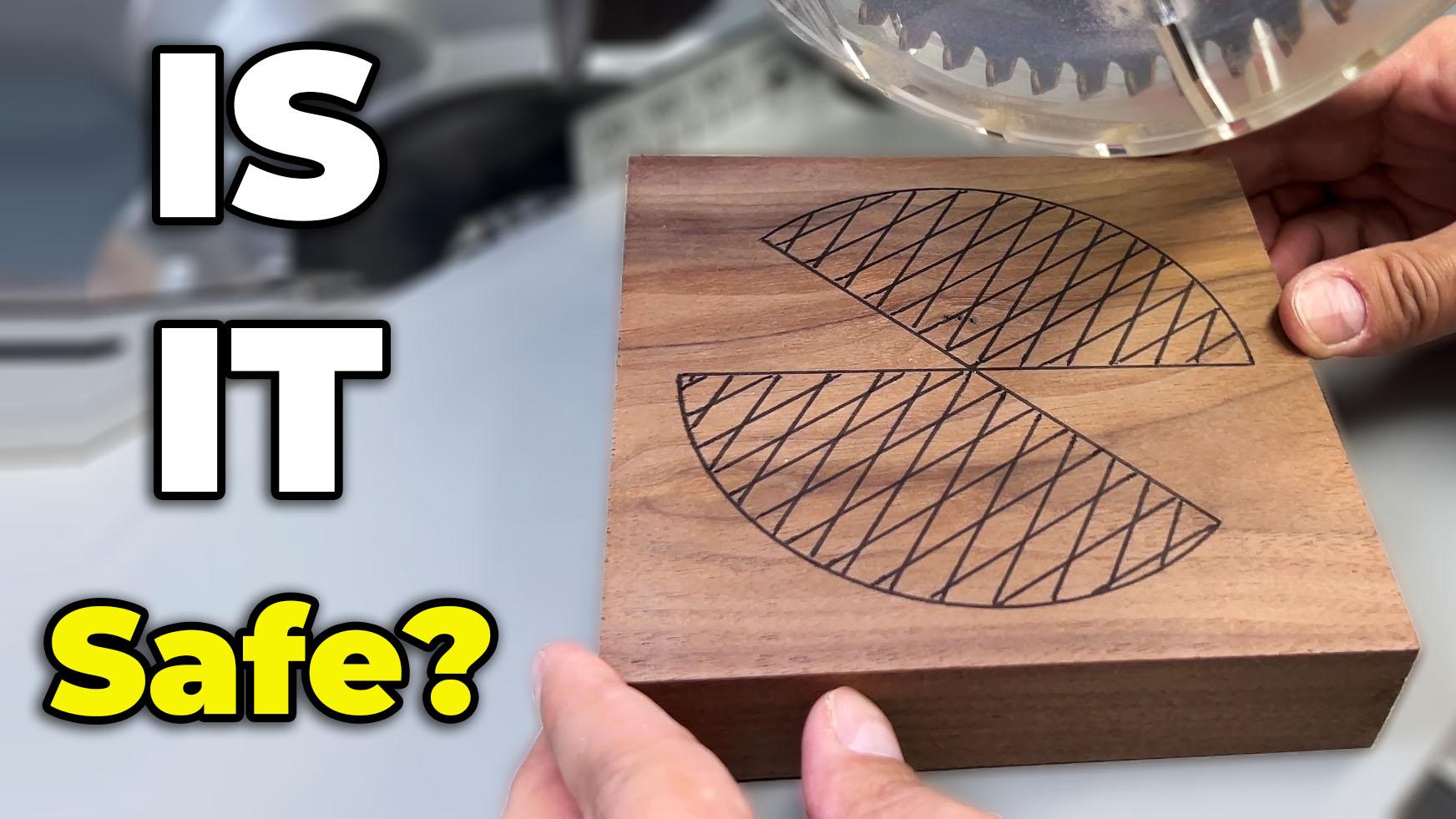
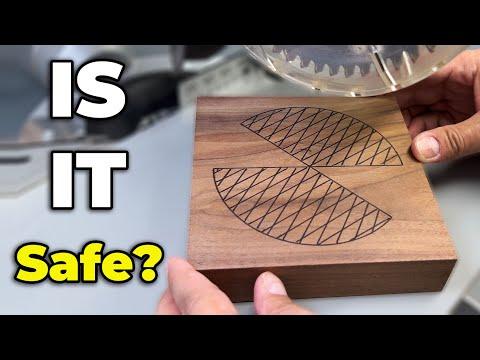
Have you ever used a tool outside of its intended purpose? In this video, I'm attempting to make multiple cuts with a miter saw, and then clean the surface to create a half or even full circle bowl plate. Some might say it's dangerous – so let's find out if it really is!
Supplies
For this project you will need:
Materials:
- Thich walnut piece (or other your preferable other specie)
- wooden dowels
- Melamine/plywood or any other sheet material for the jig base
- Wood finish for desirable application and look
Tools:
- Miter saw
- Ruler
- Square
- Drill, drill press and bits
- 120 grit sandpaper
- any other various bits and bobs which helps to get job done in the workshop
The Jig
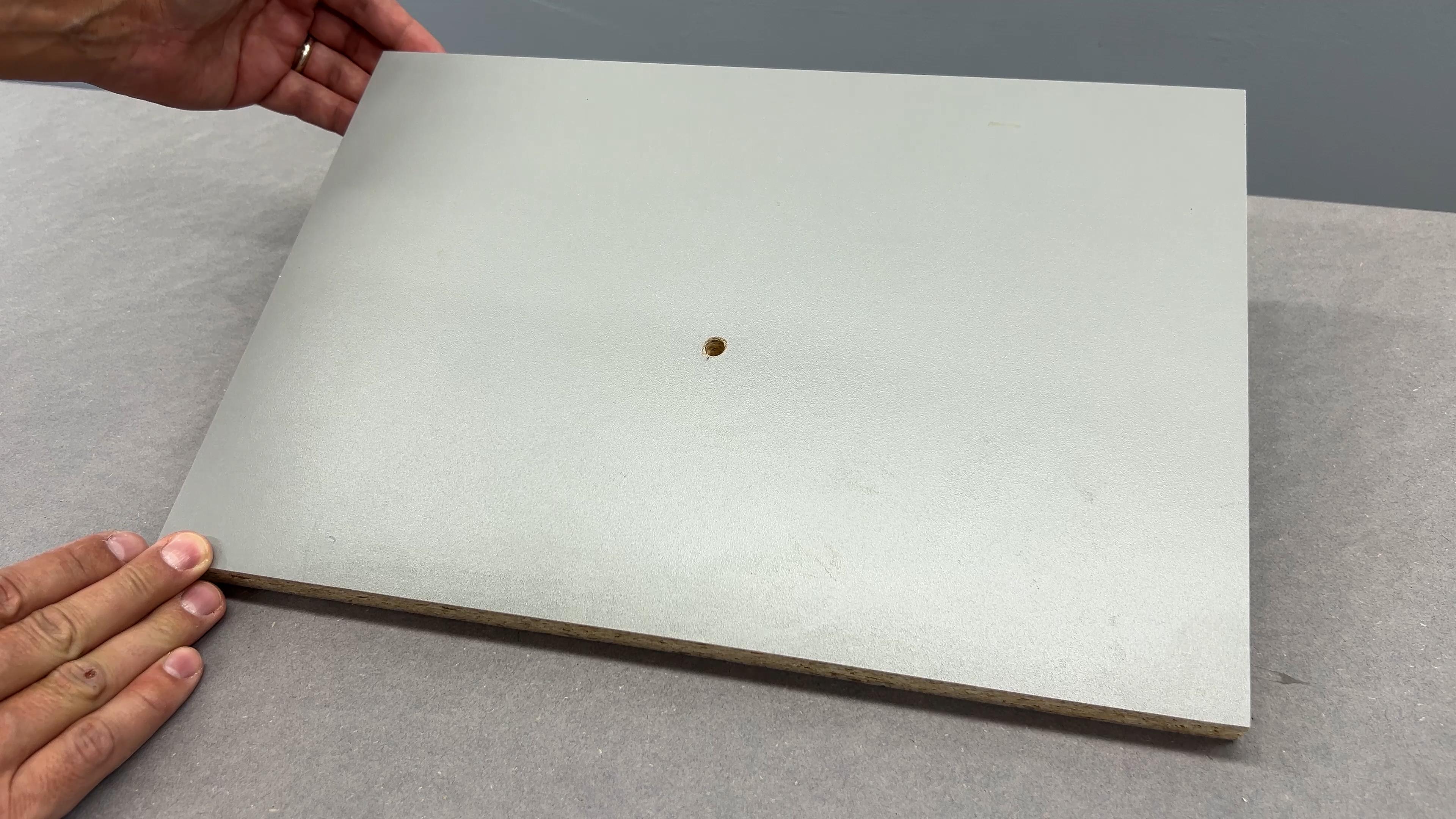
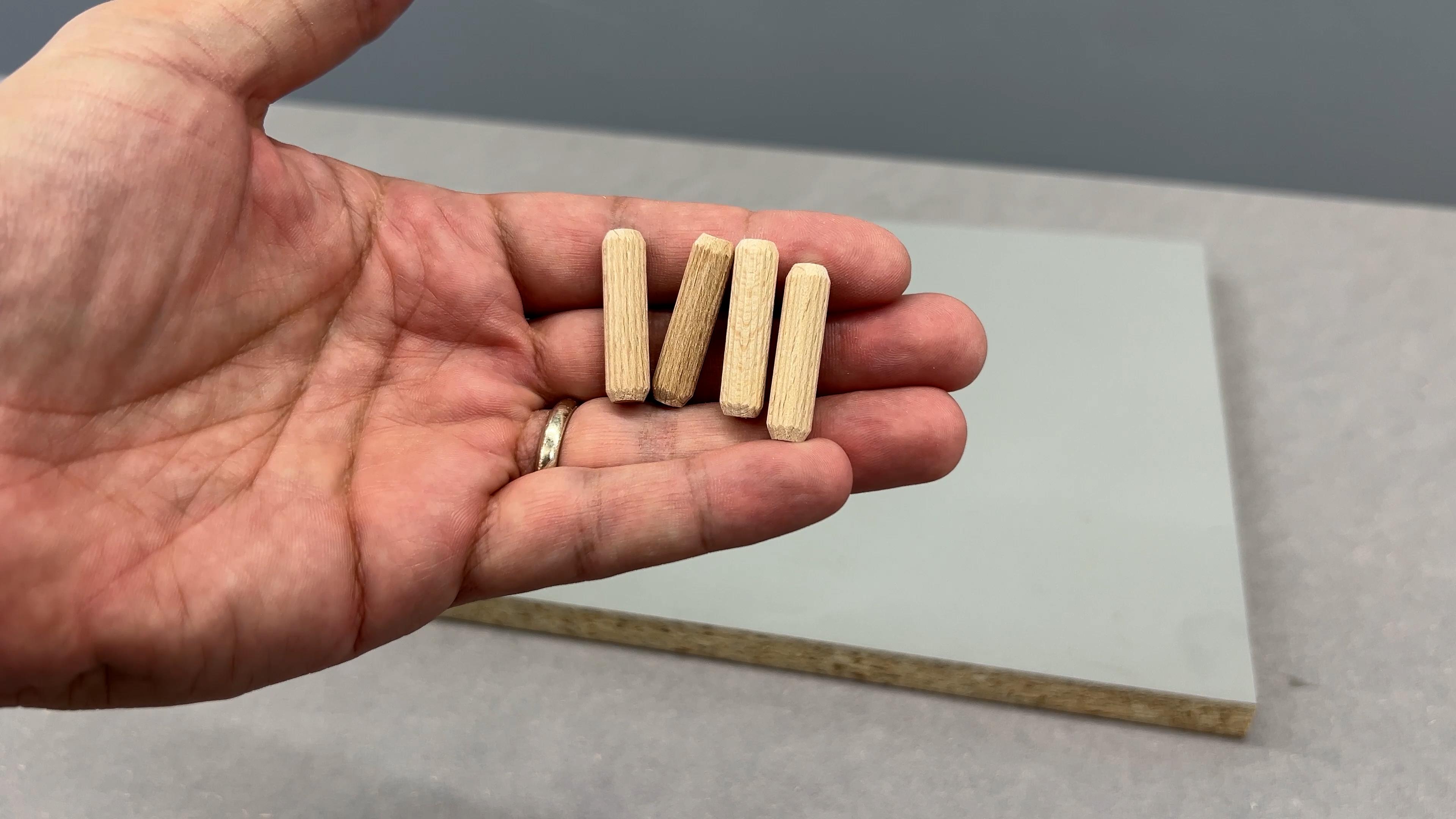
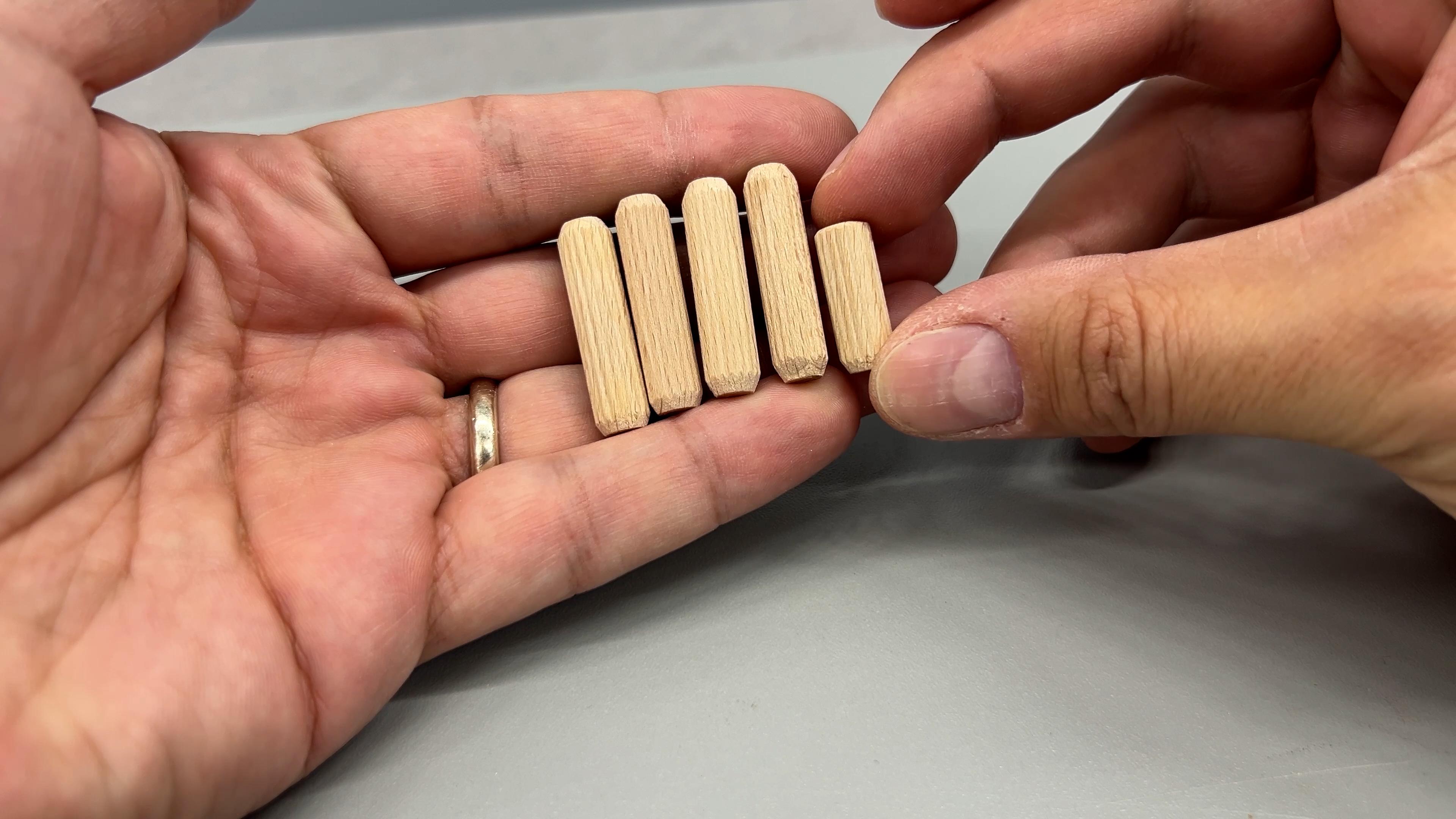
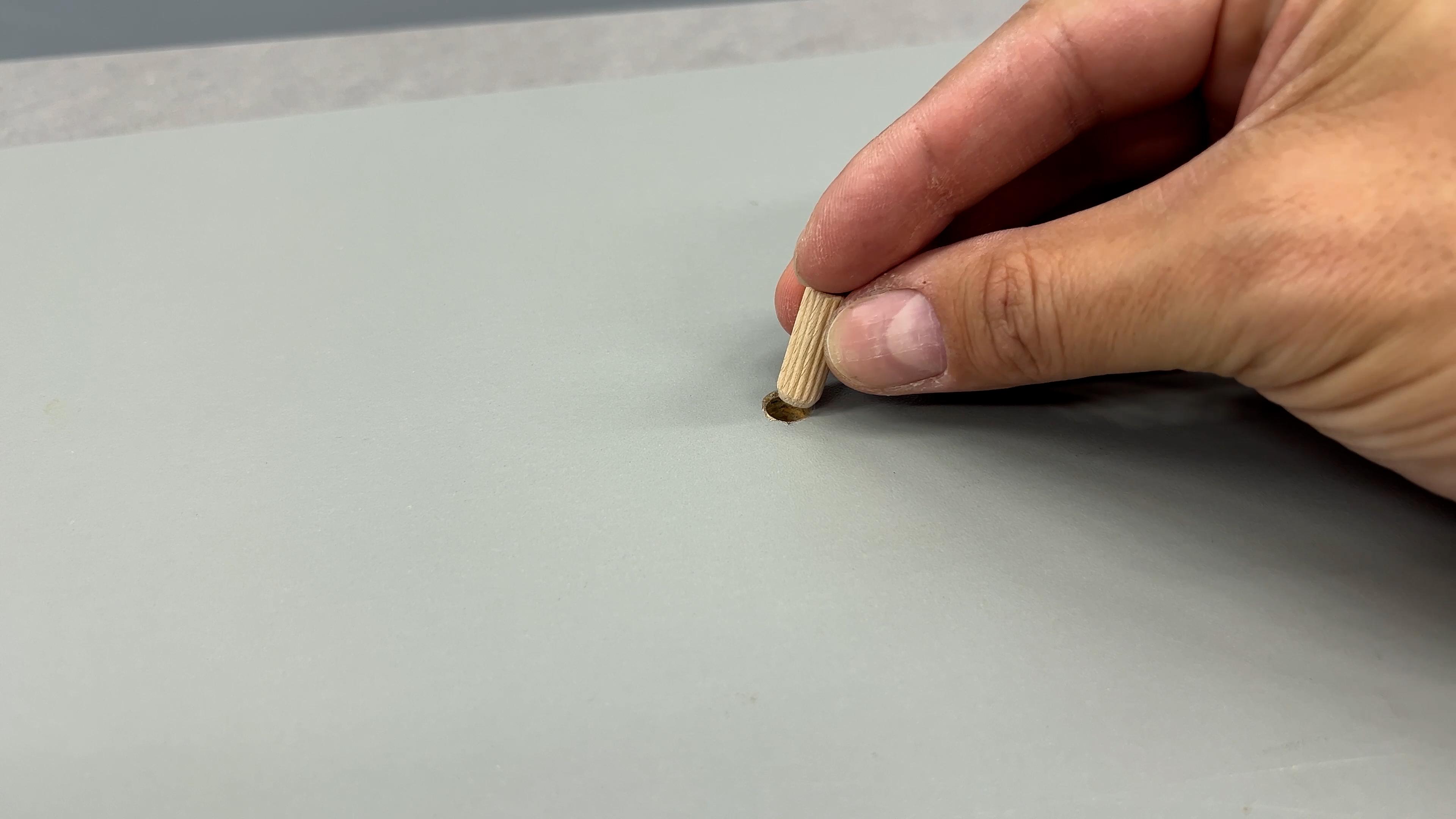
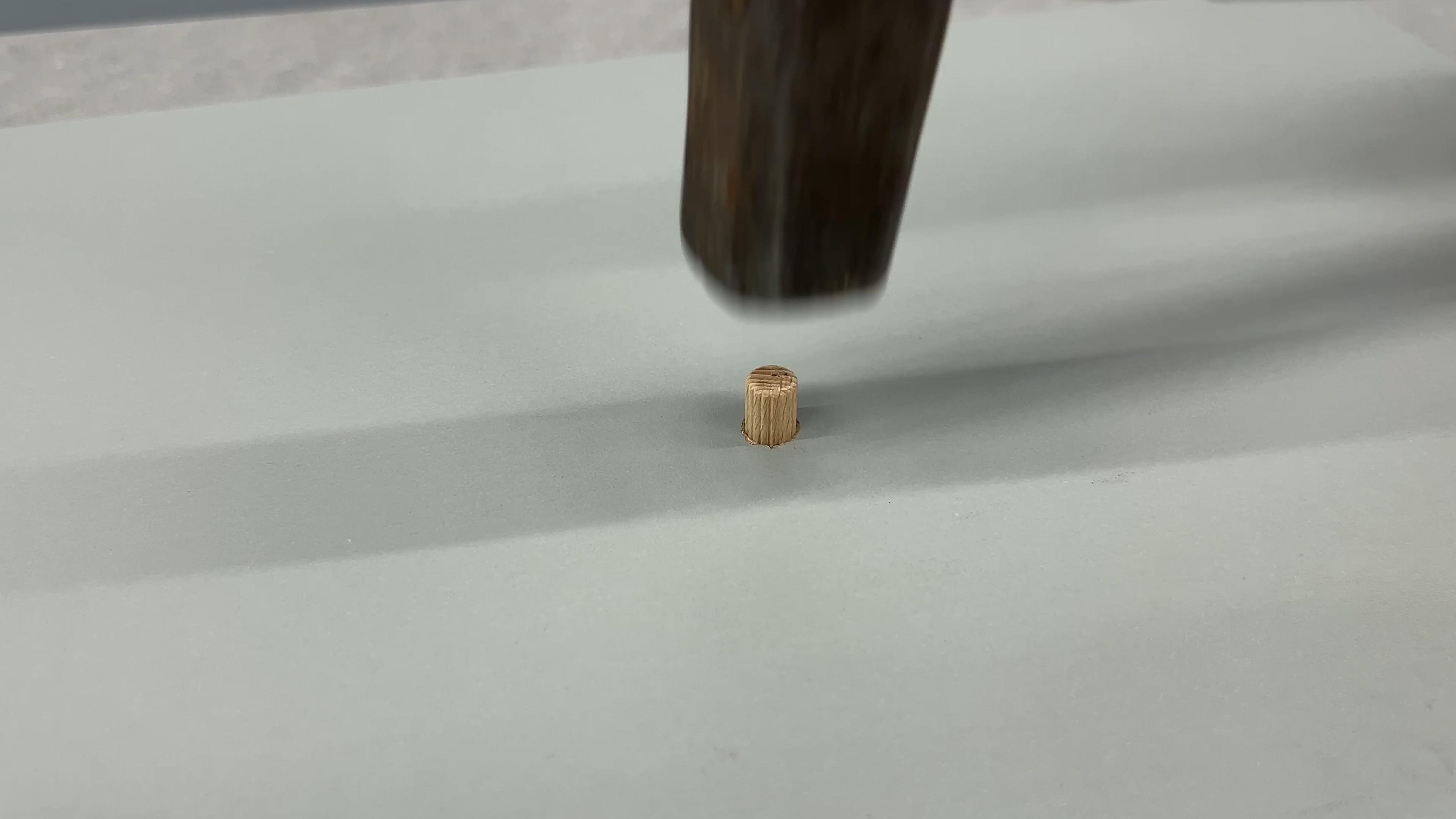
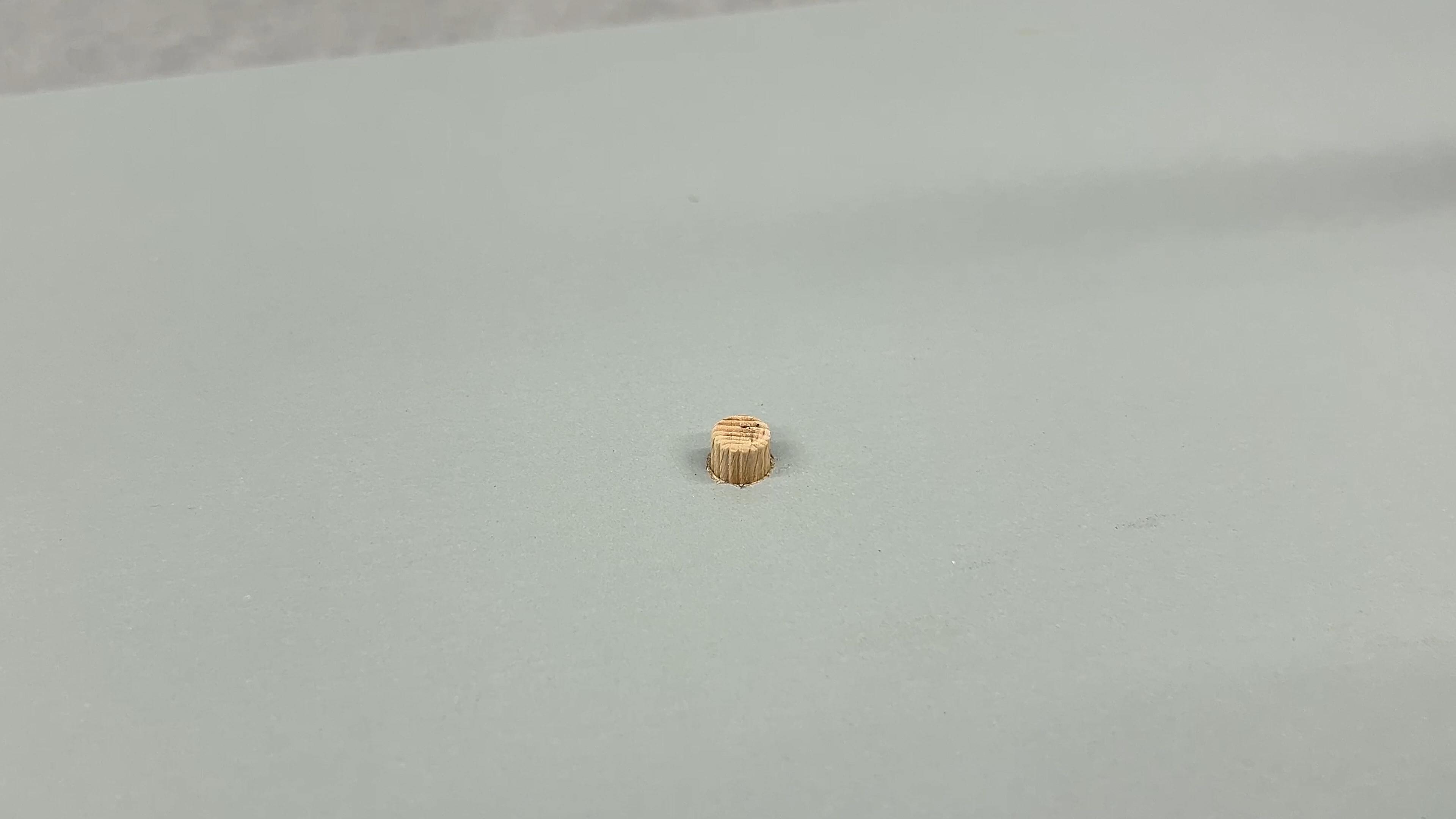
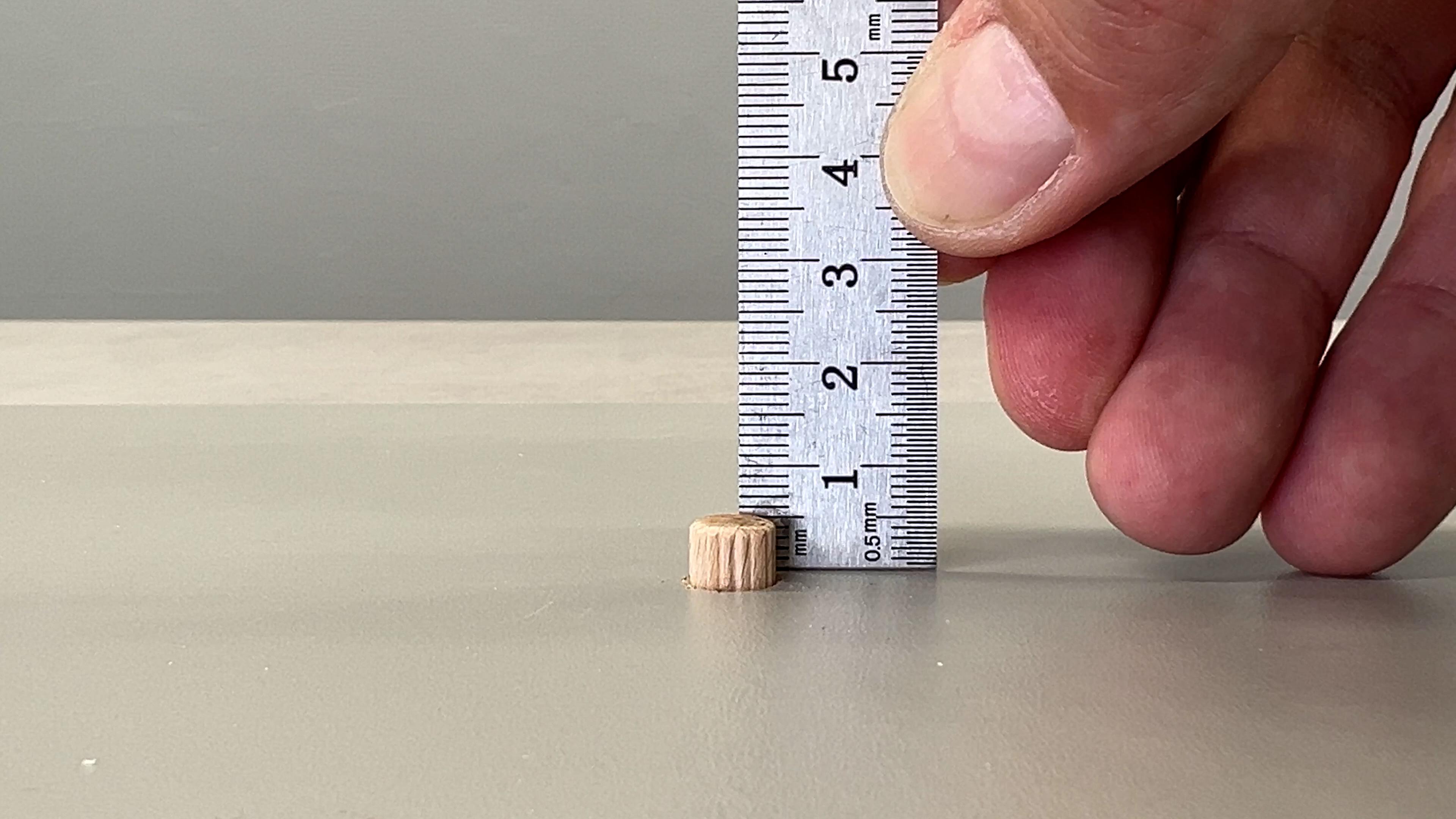
I started with an 18mm melamine board for the jig base. An 8mm hole was drilled to insert a wooden dowel. To make it work, I had to trim down a dowel length and hammer it into the hole. The goal was to have the dowel protrude no more than 5-6mm above the surface.
Preparing Walnut Piece
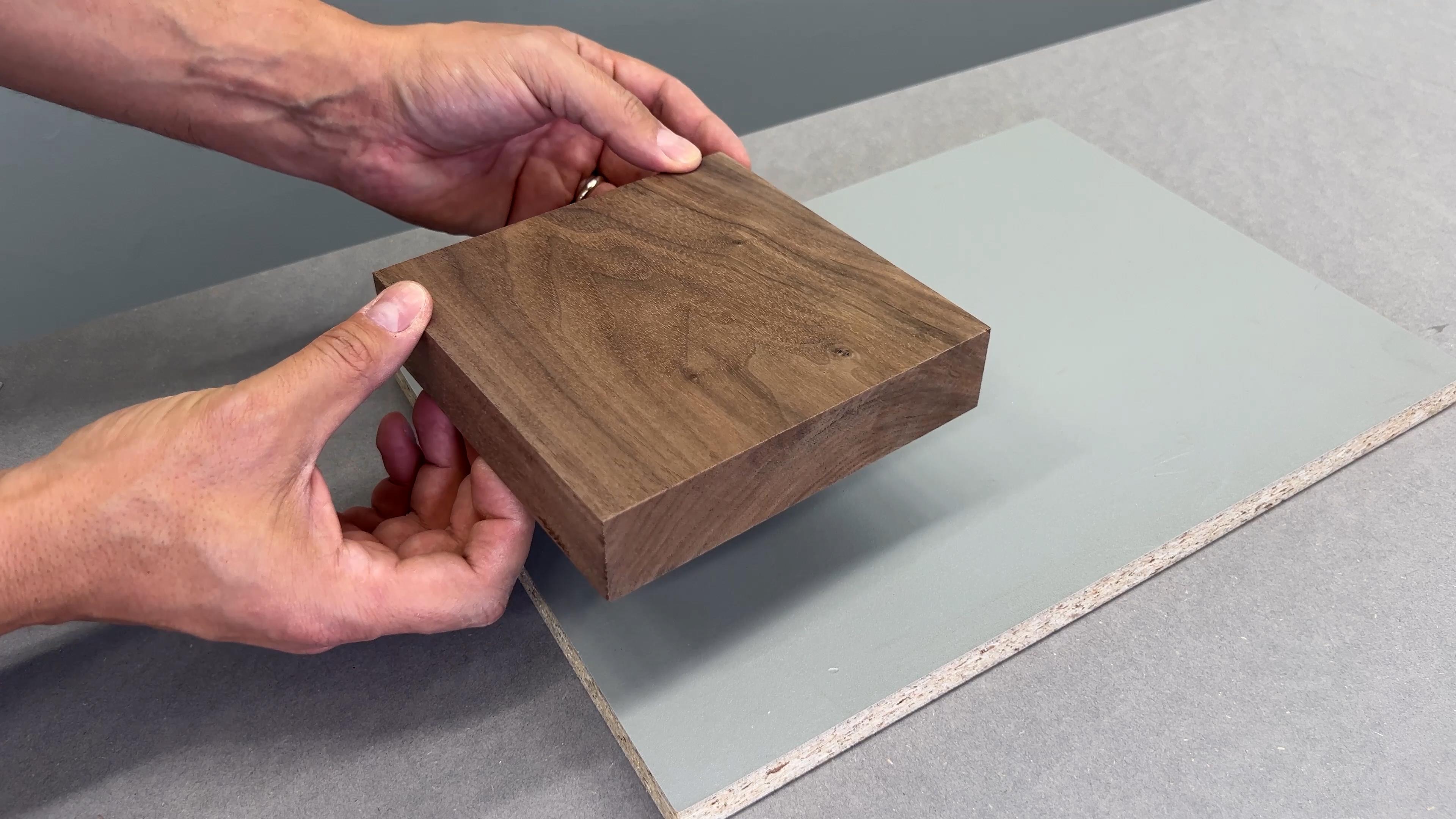
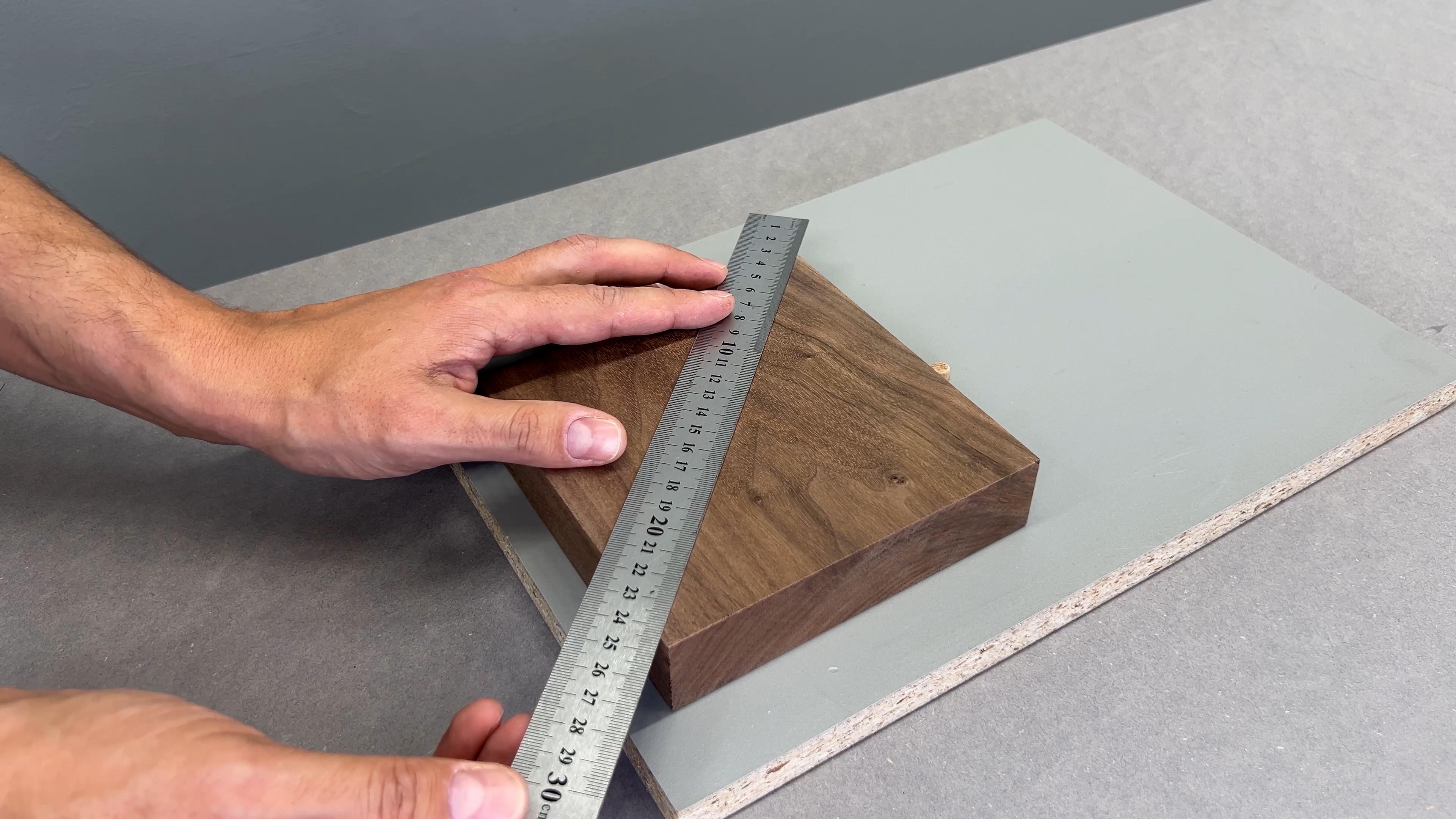
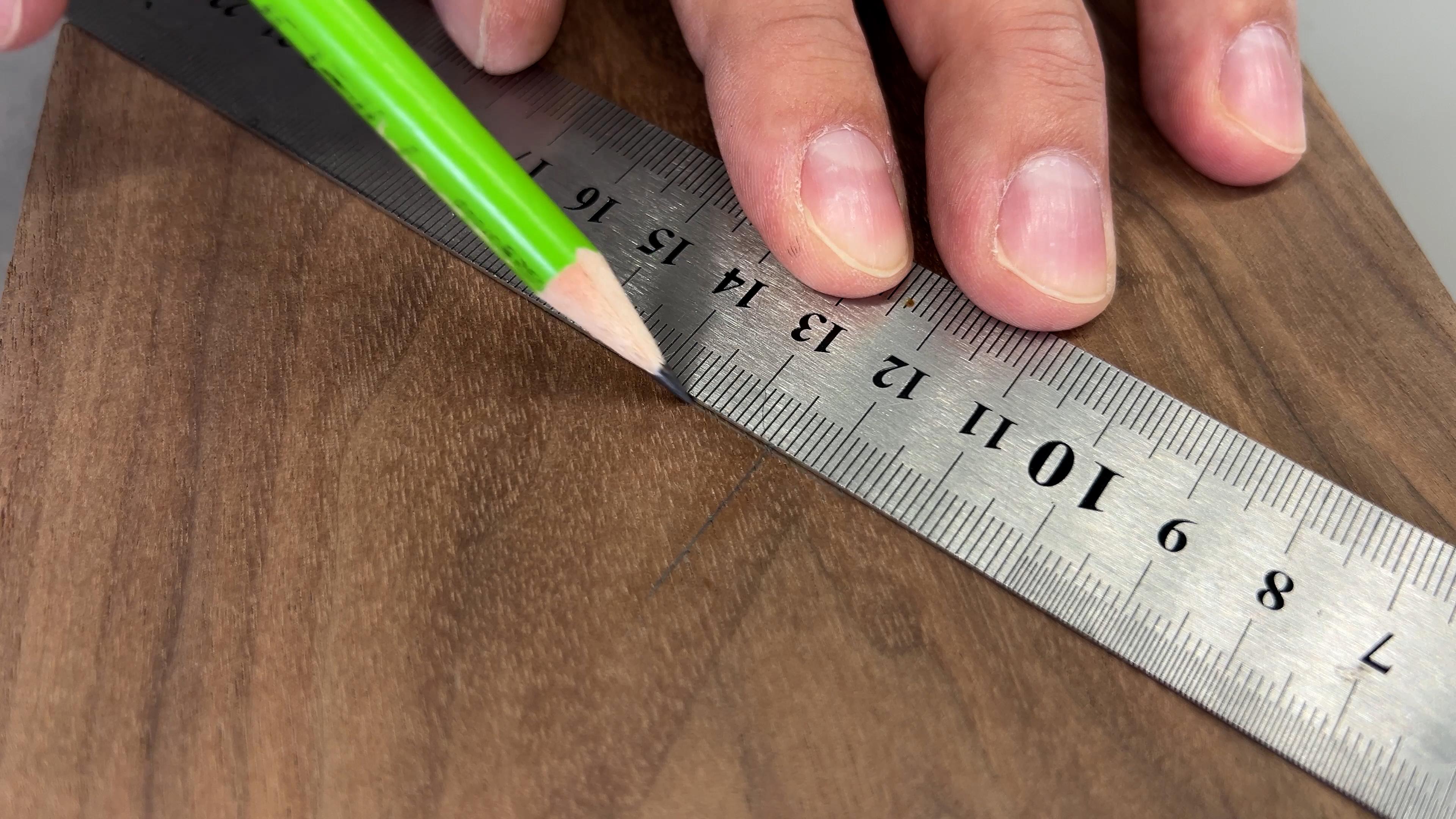
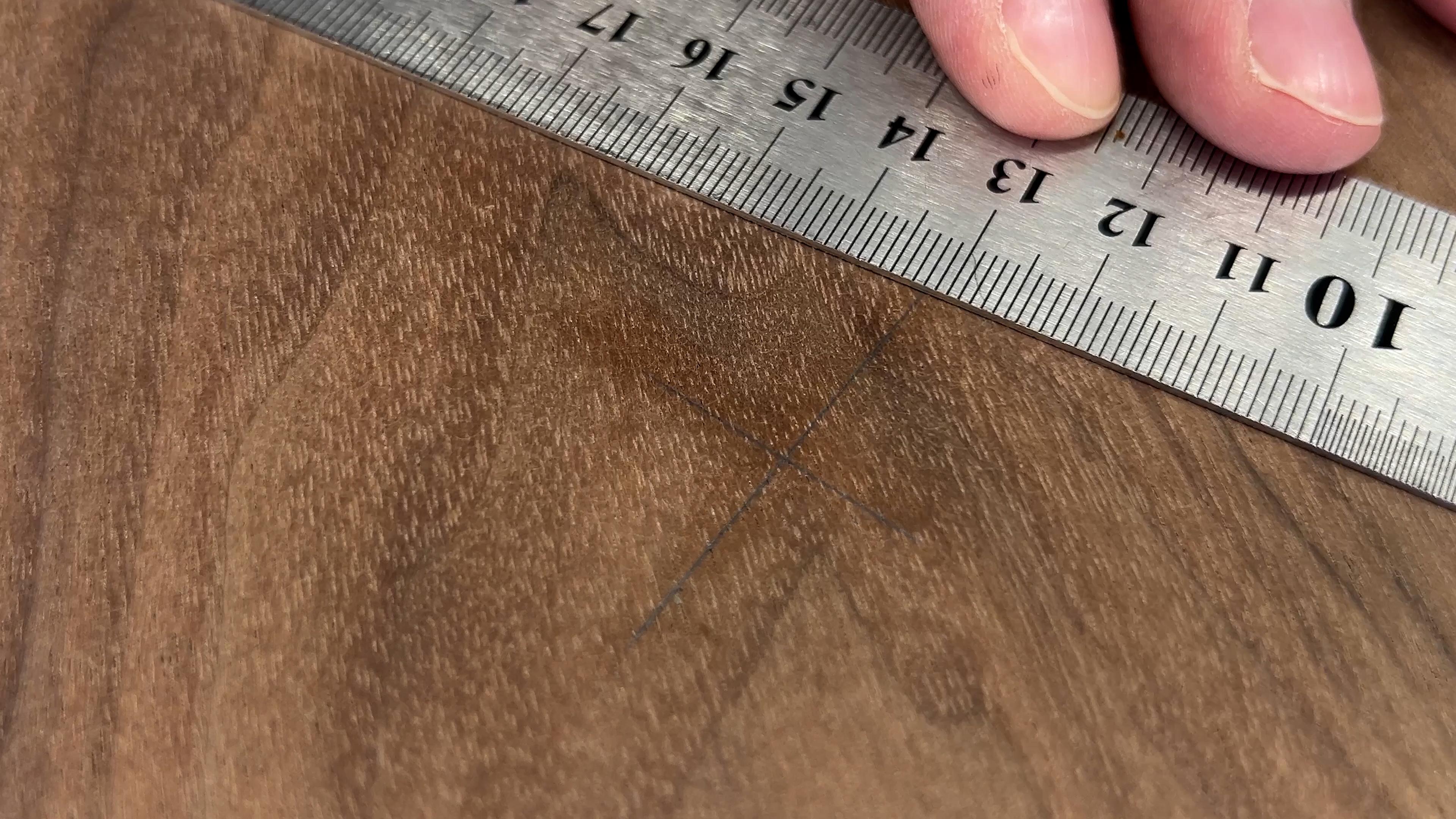
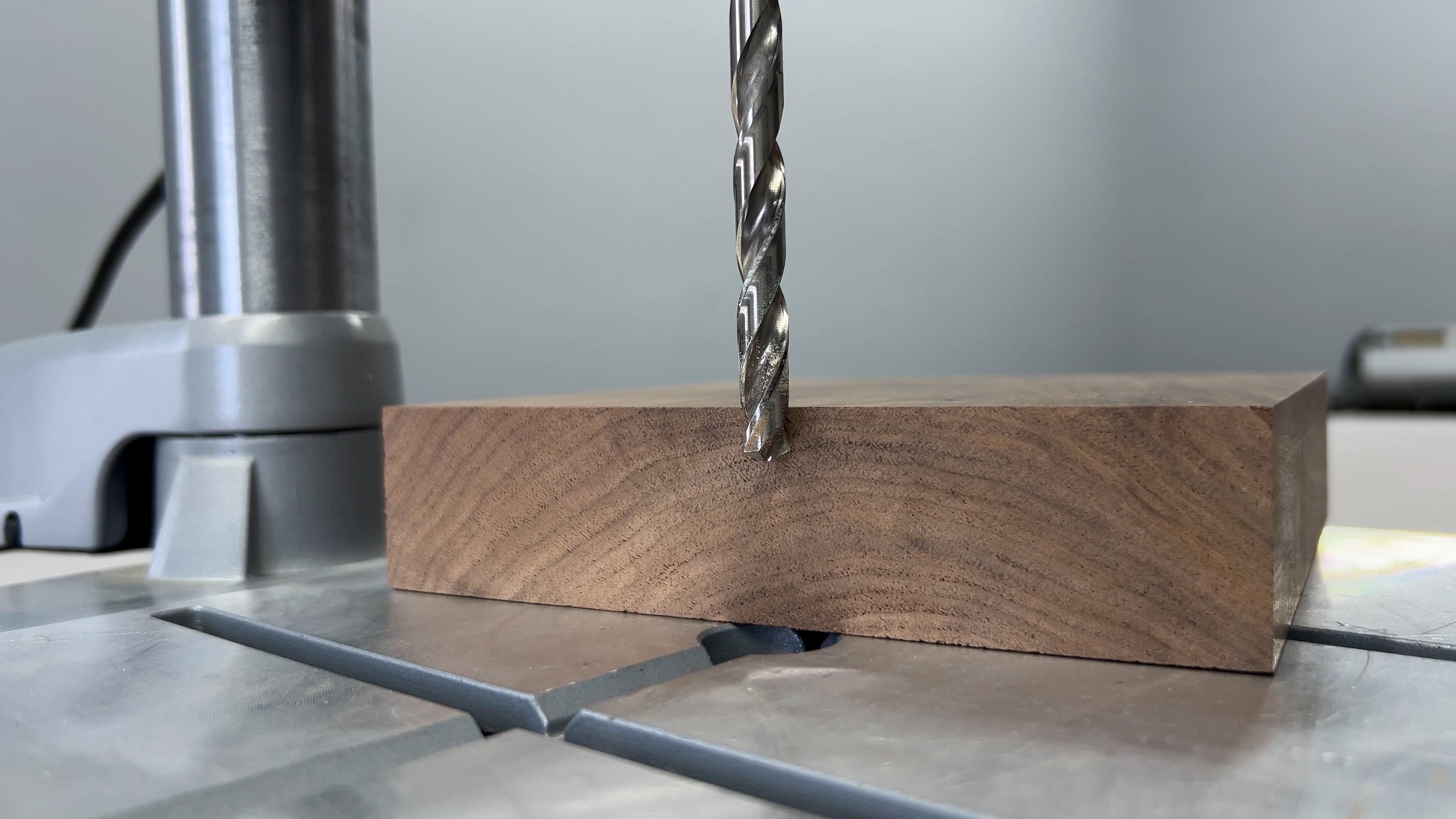
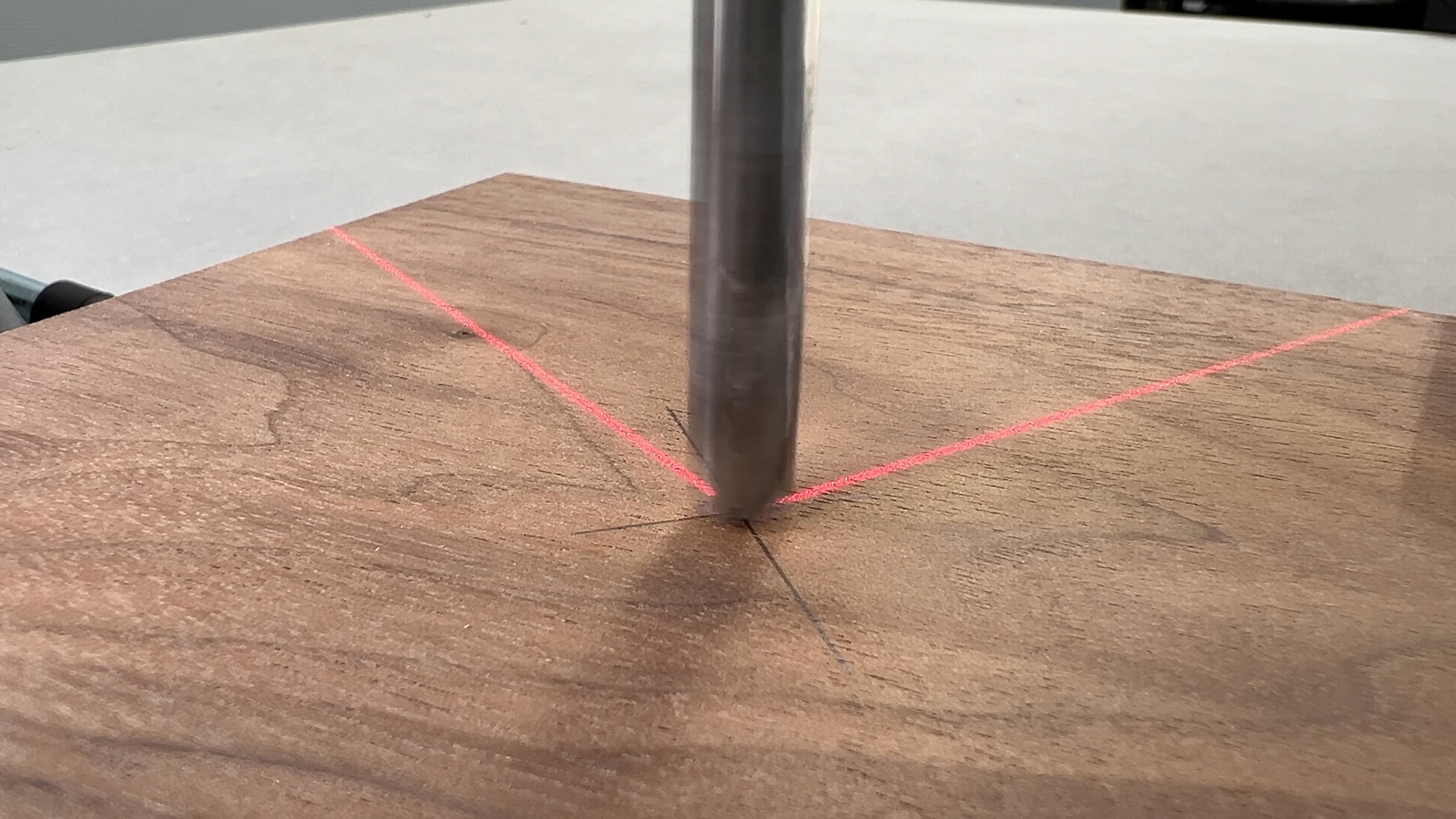
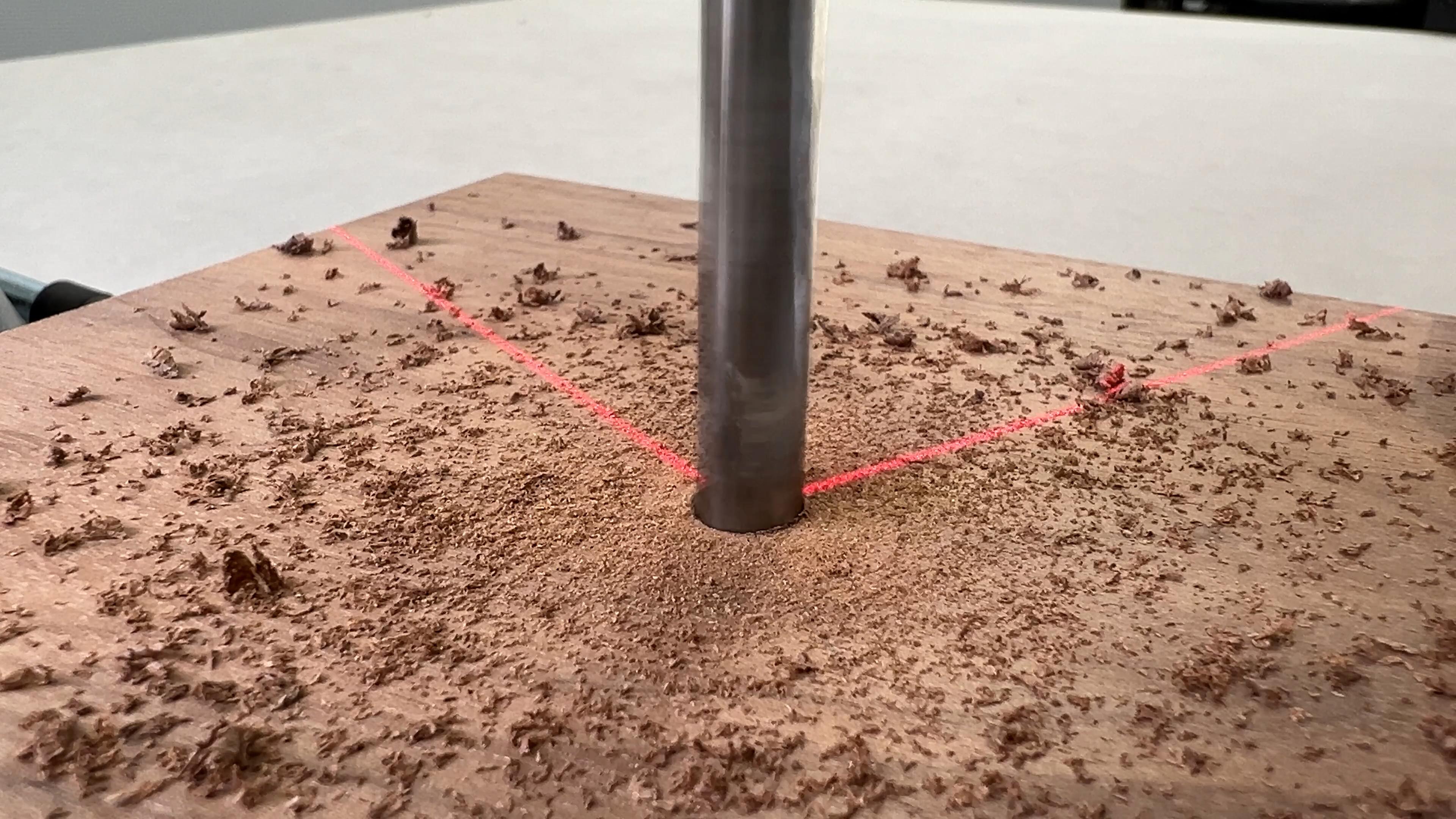
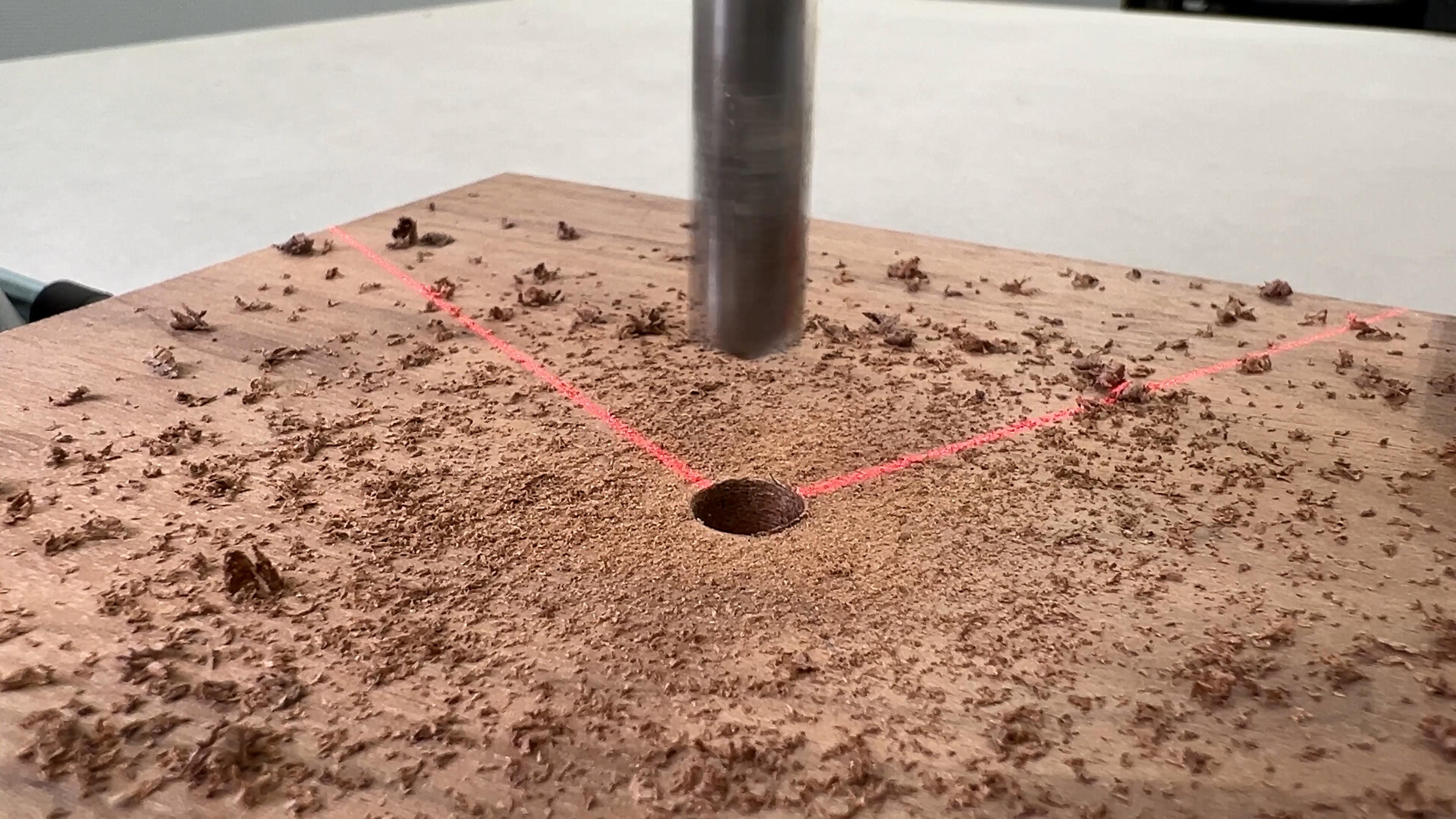
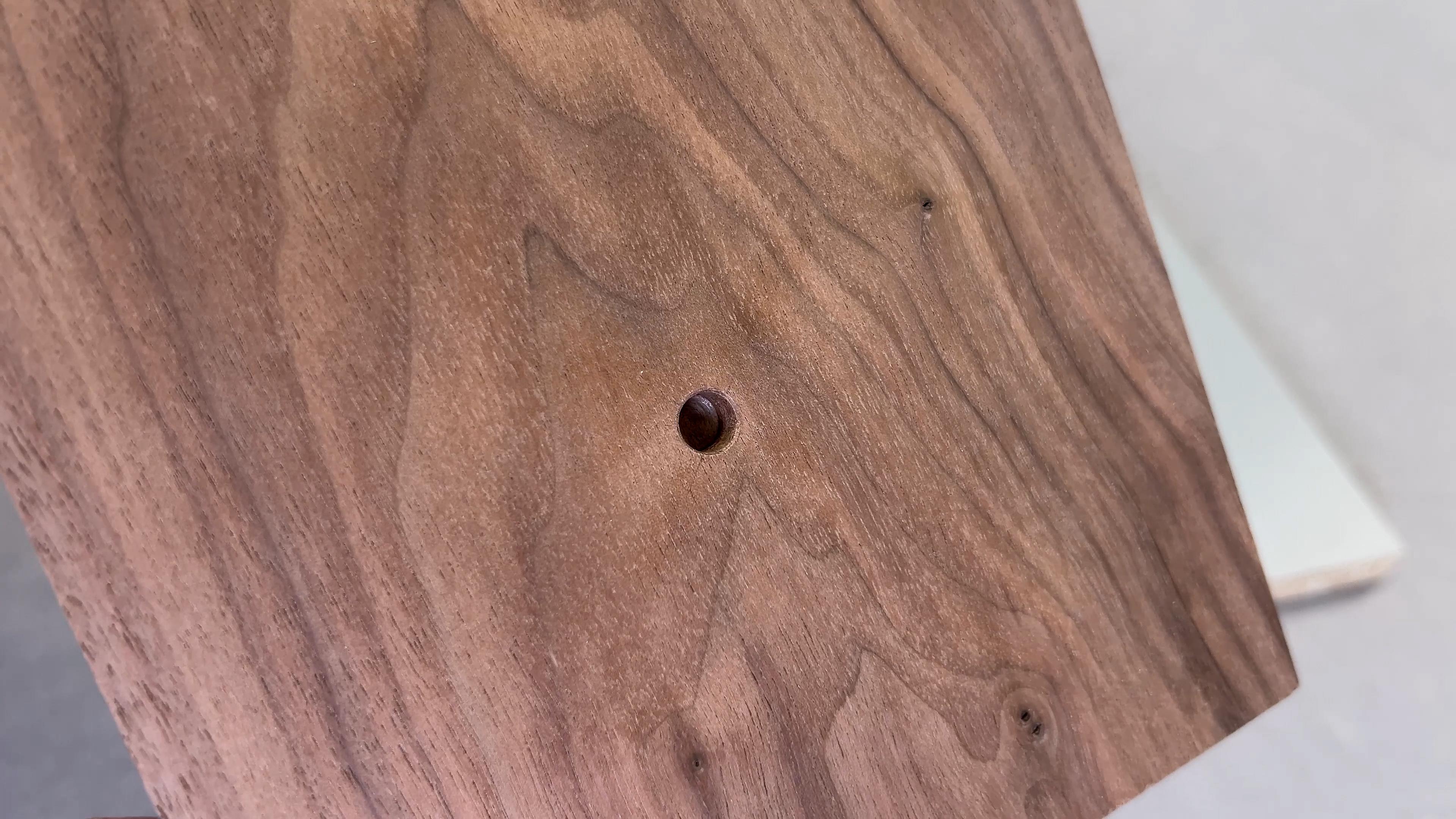
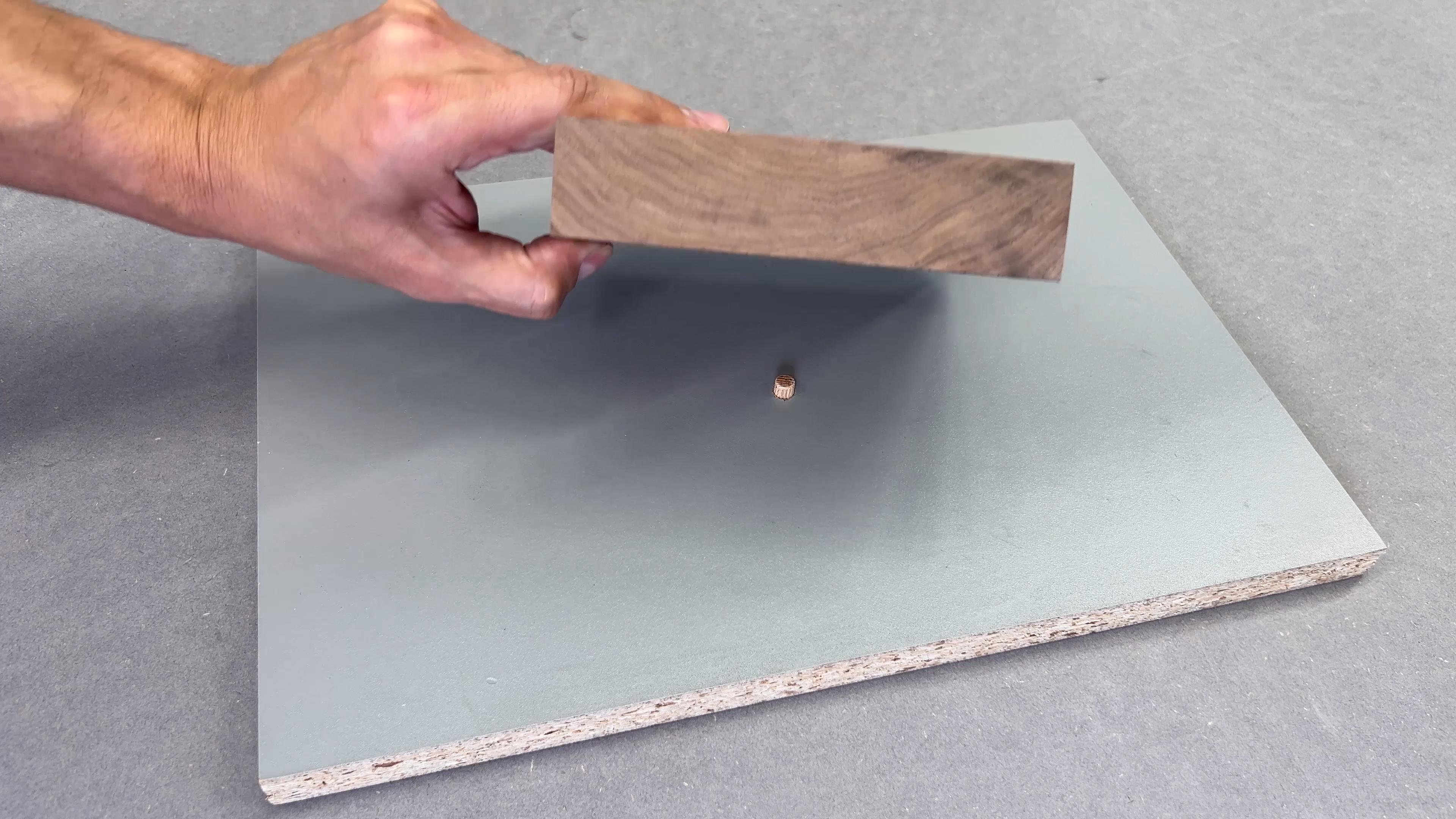
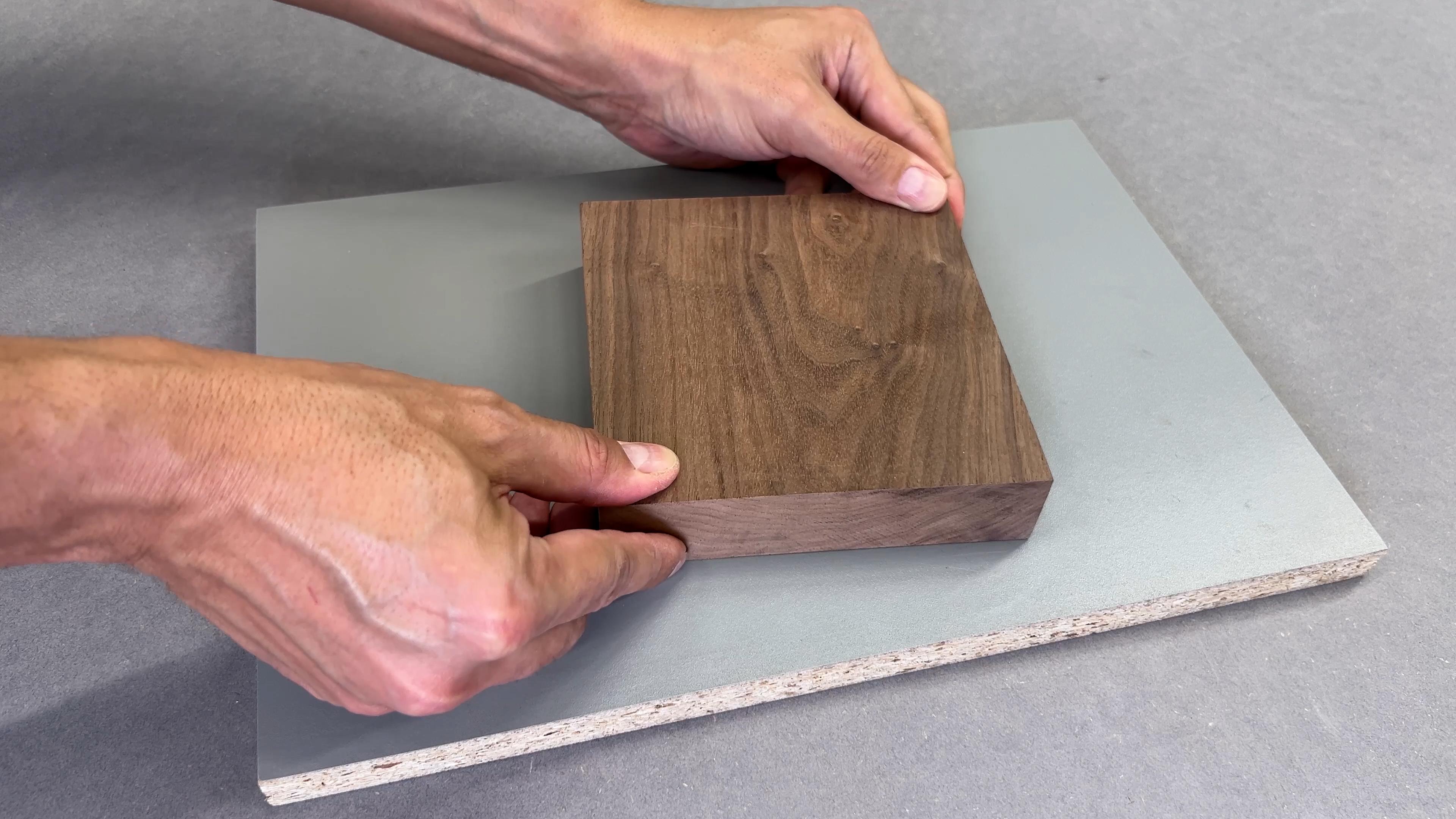
I’ll use this square American walnut piece. Its sides are 155mm and the thickness is 35mm. I marked the center and adjusted the drill press drilling depth to ensure the hole was just a hair deeper than the dowel protrusion. A snug fit will ensure maximum accuracy and stability during the cuts.
Placing the Jig
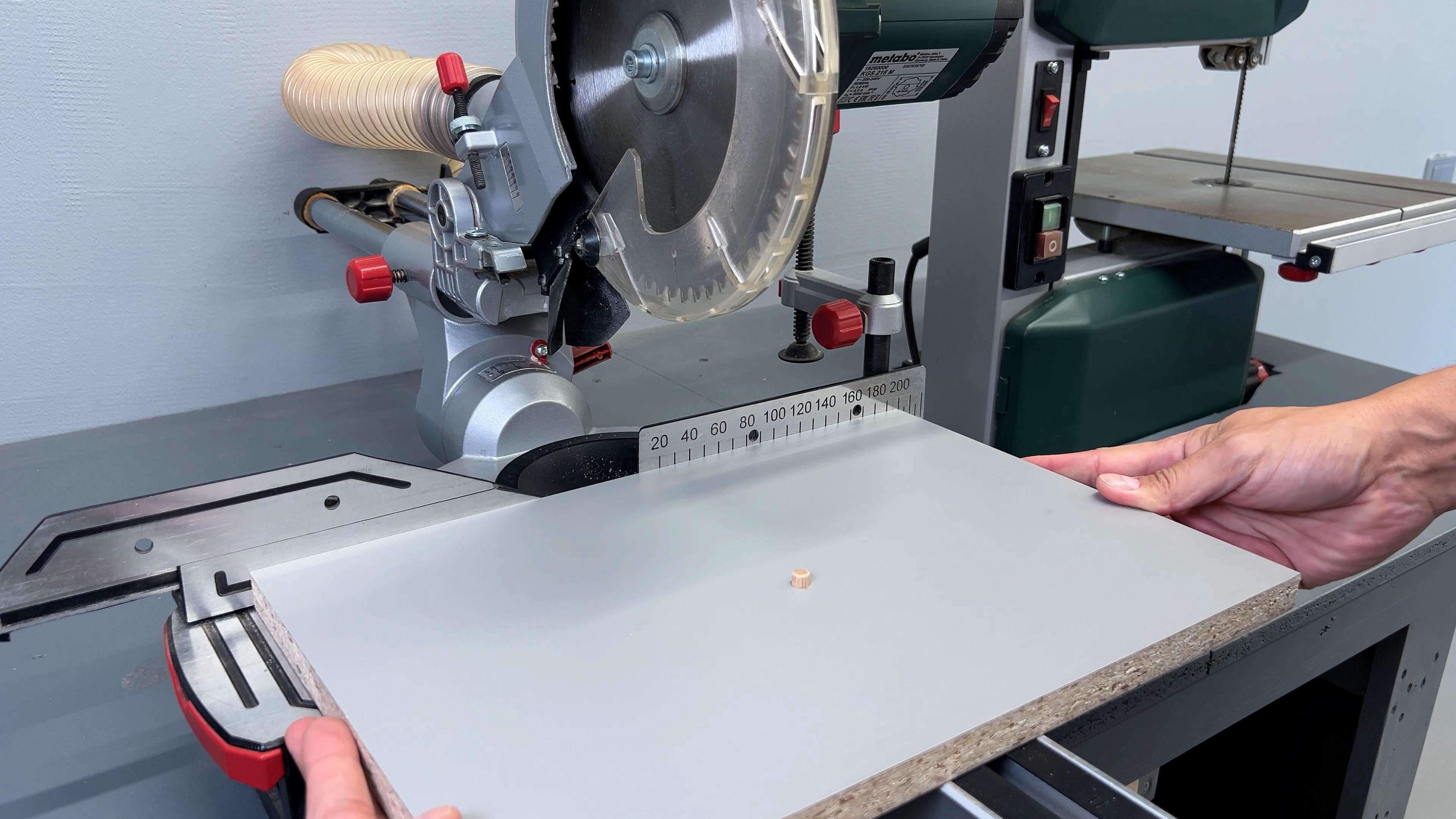
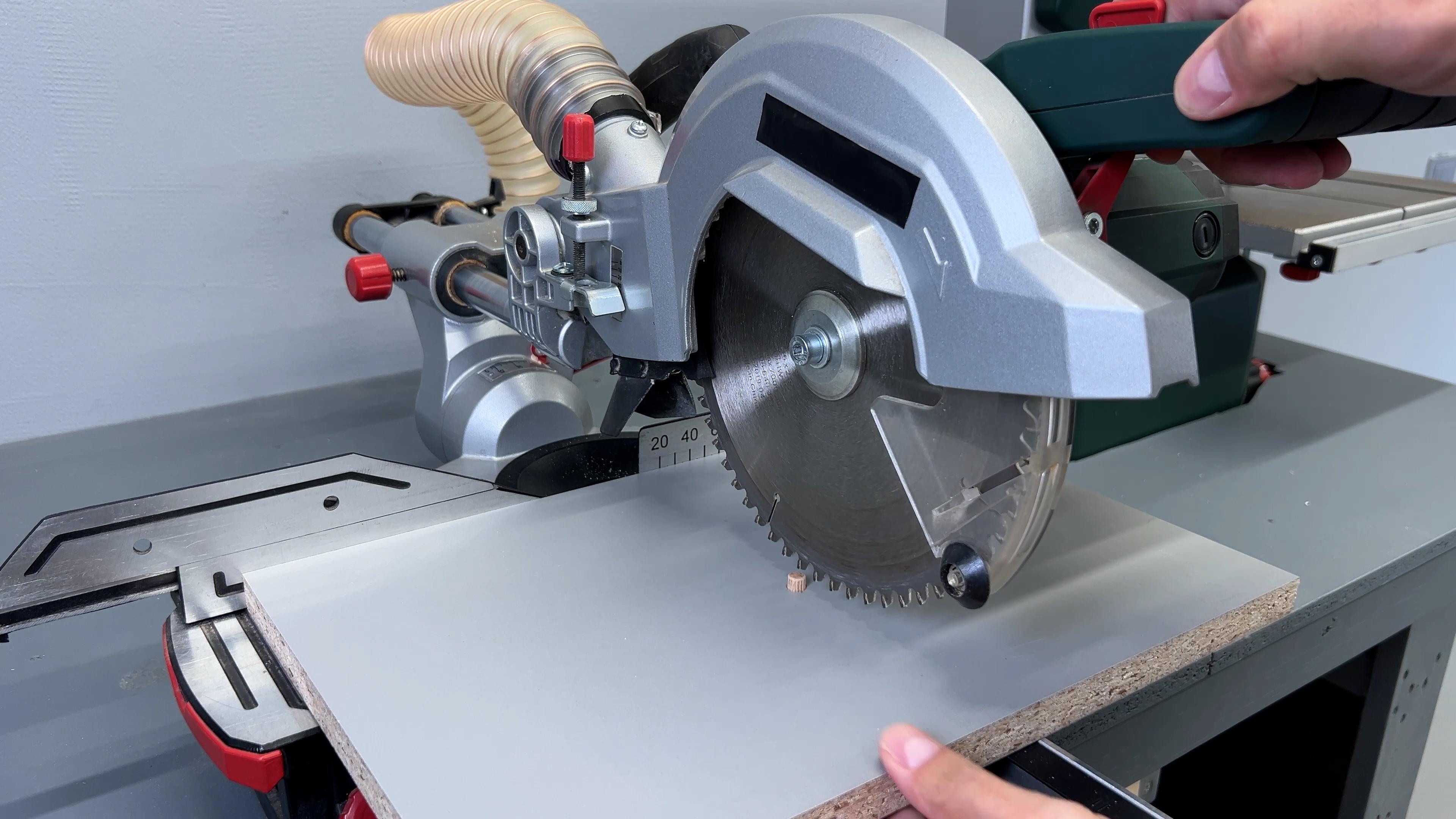
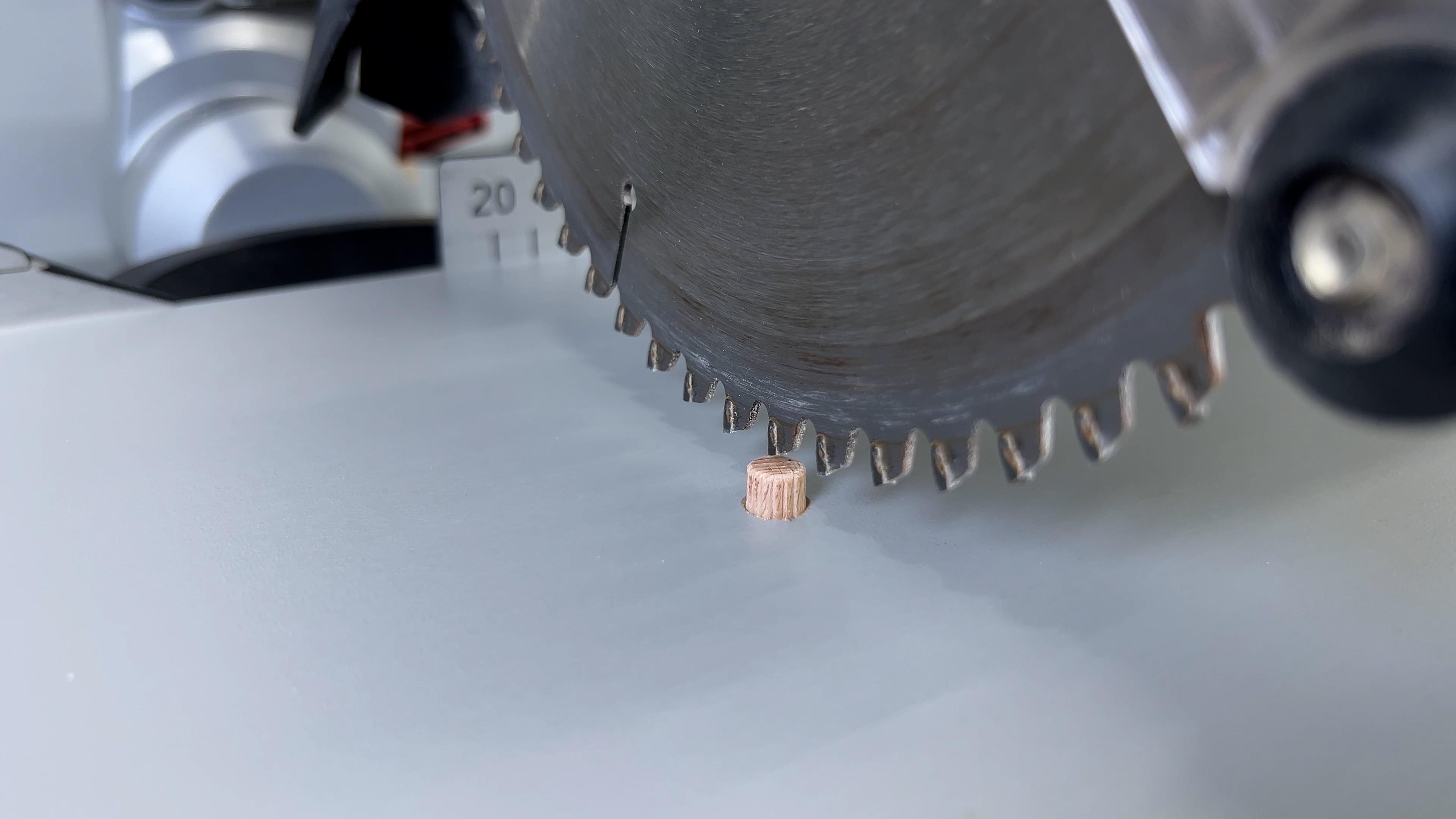
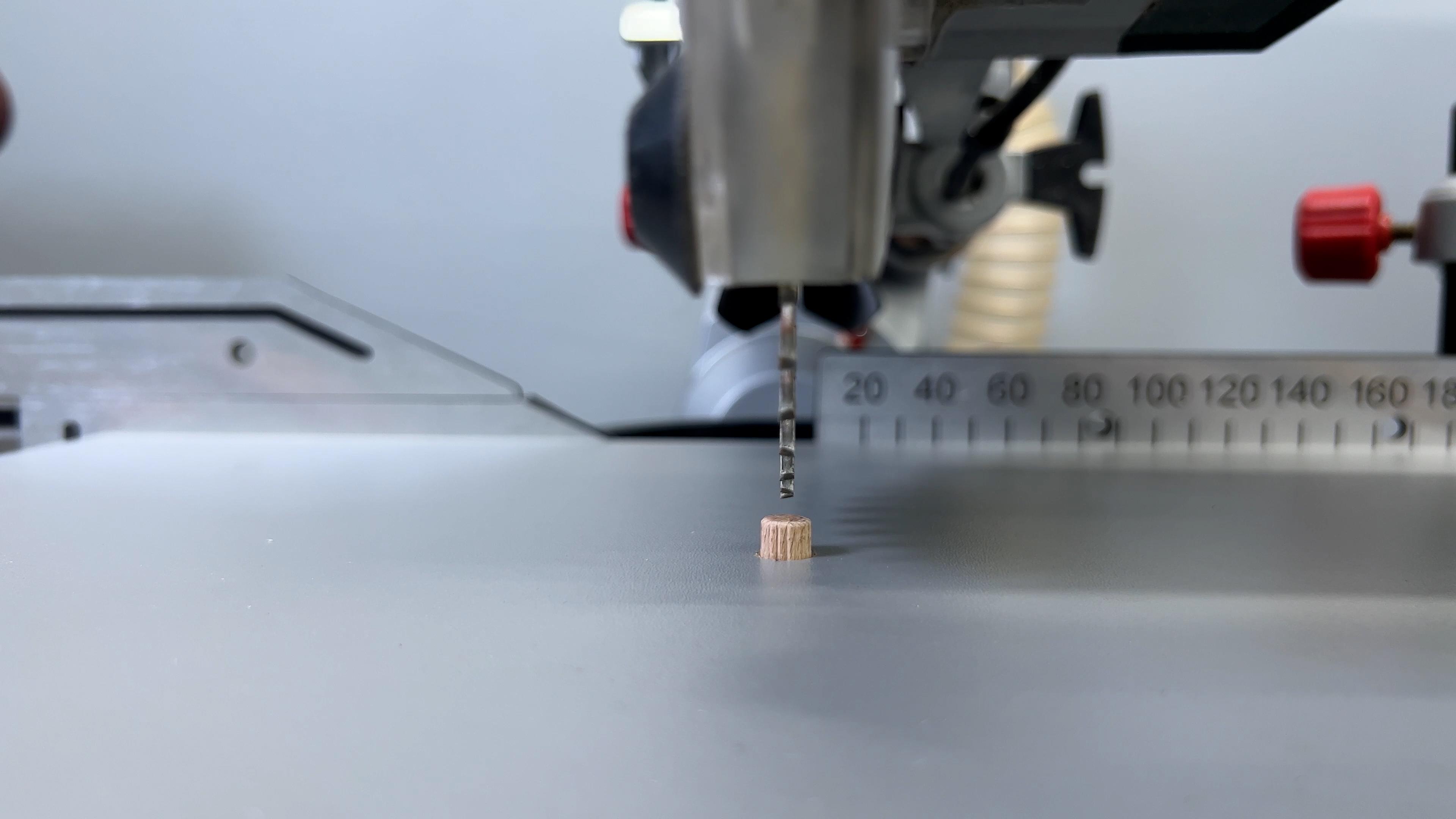
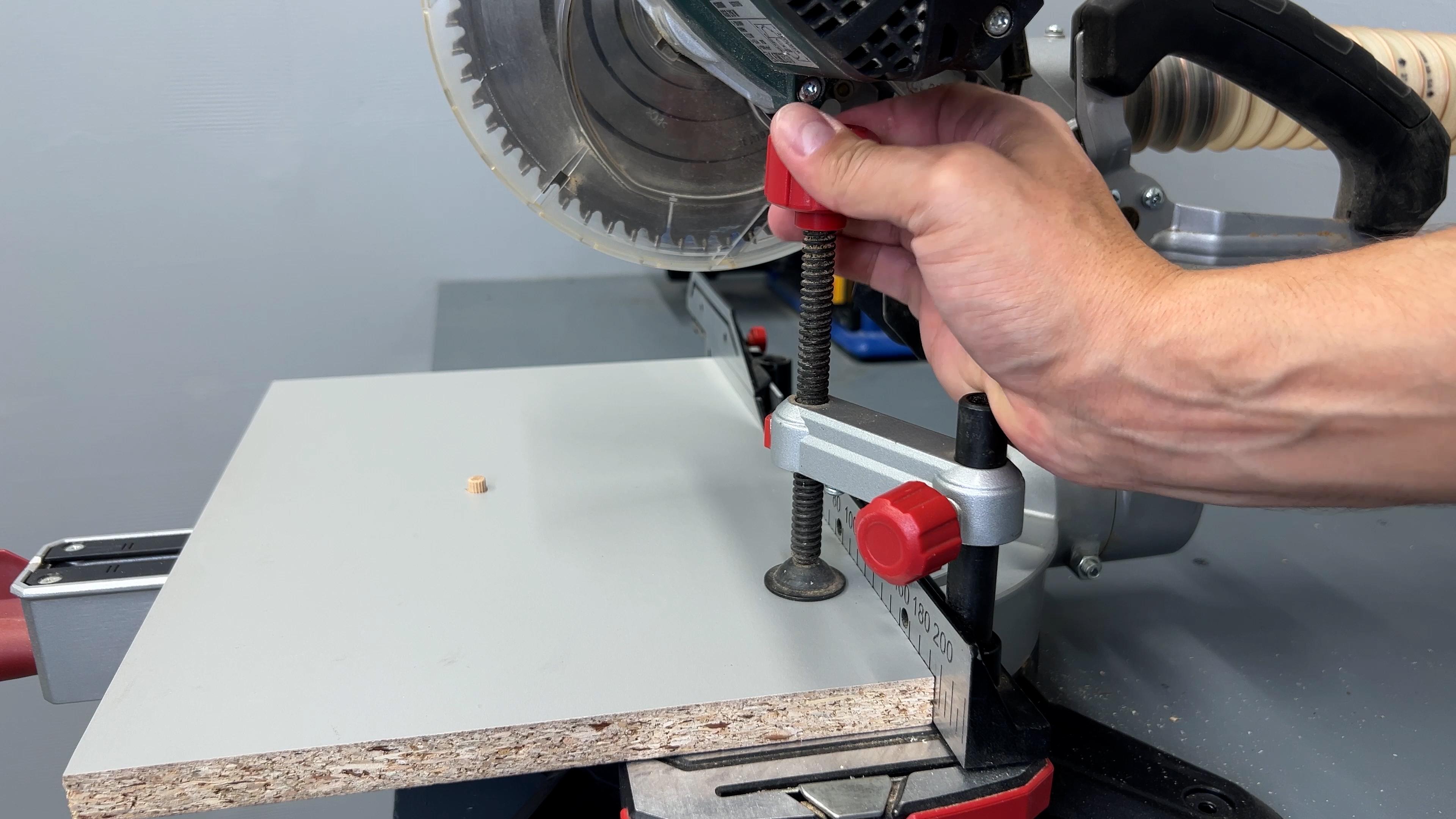
Now, let's move on to the miter saw. First, I adjusted the jig position so that the cutting blade is exactly in the middle of the wooden dowel. Once satisfied with the position, I clamped the board down.
Adjusting the Blade Position
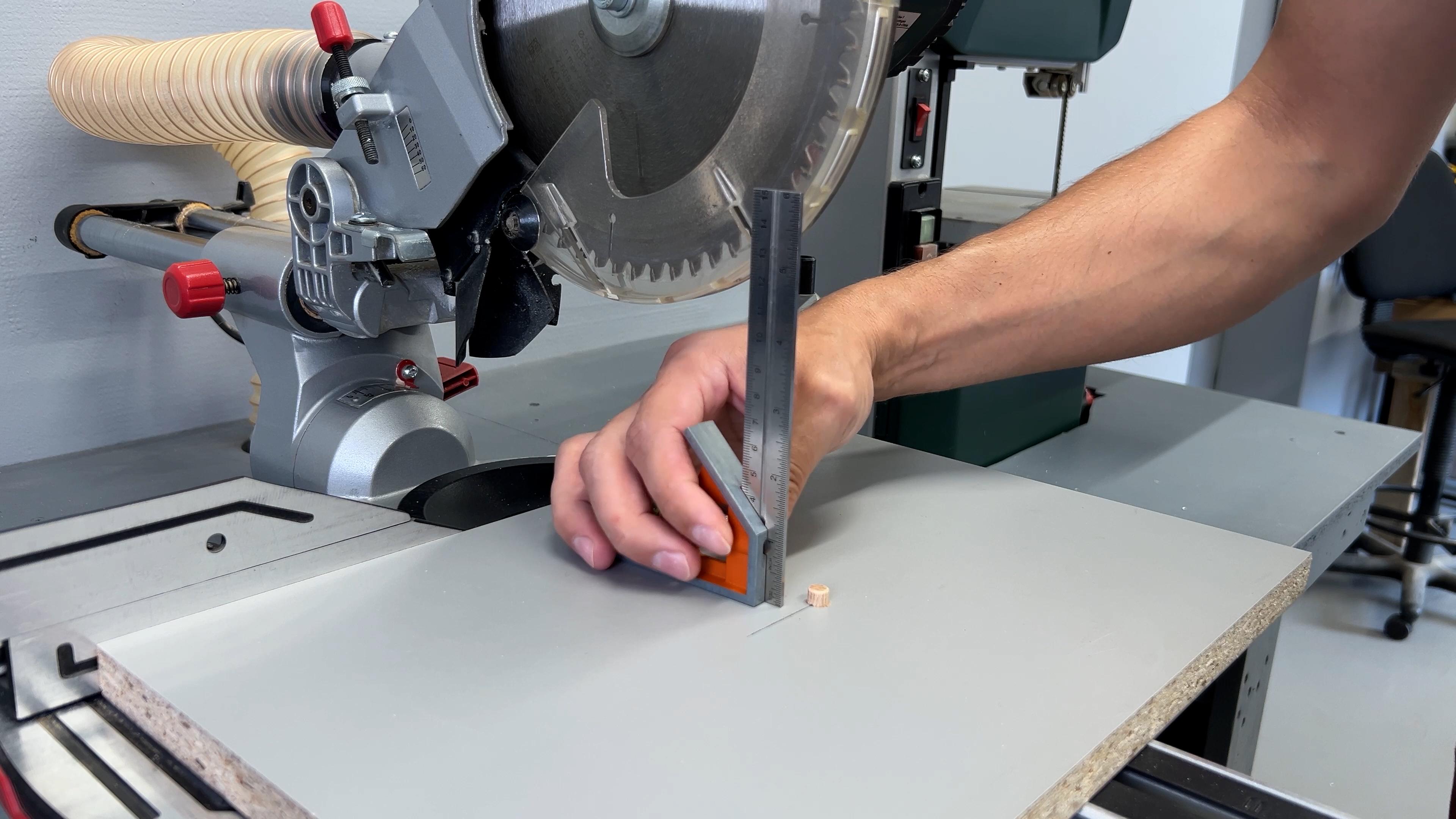

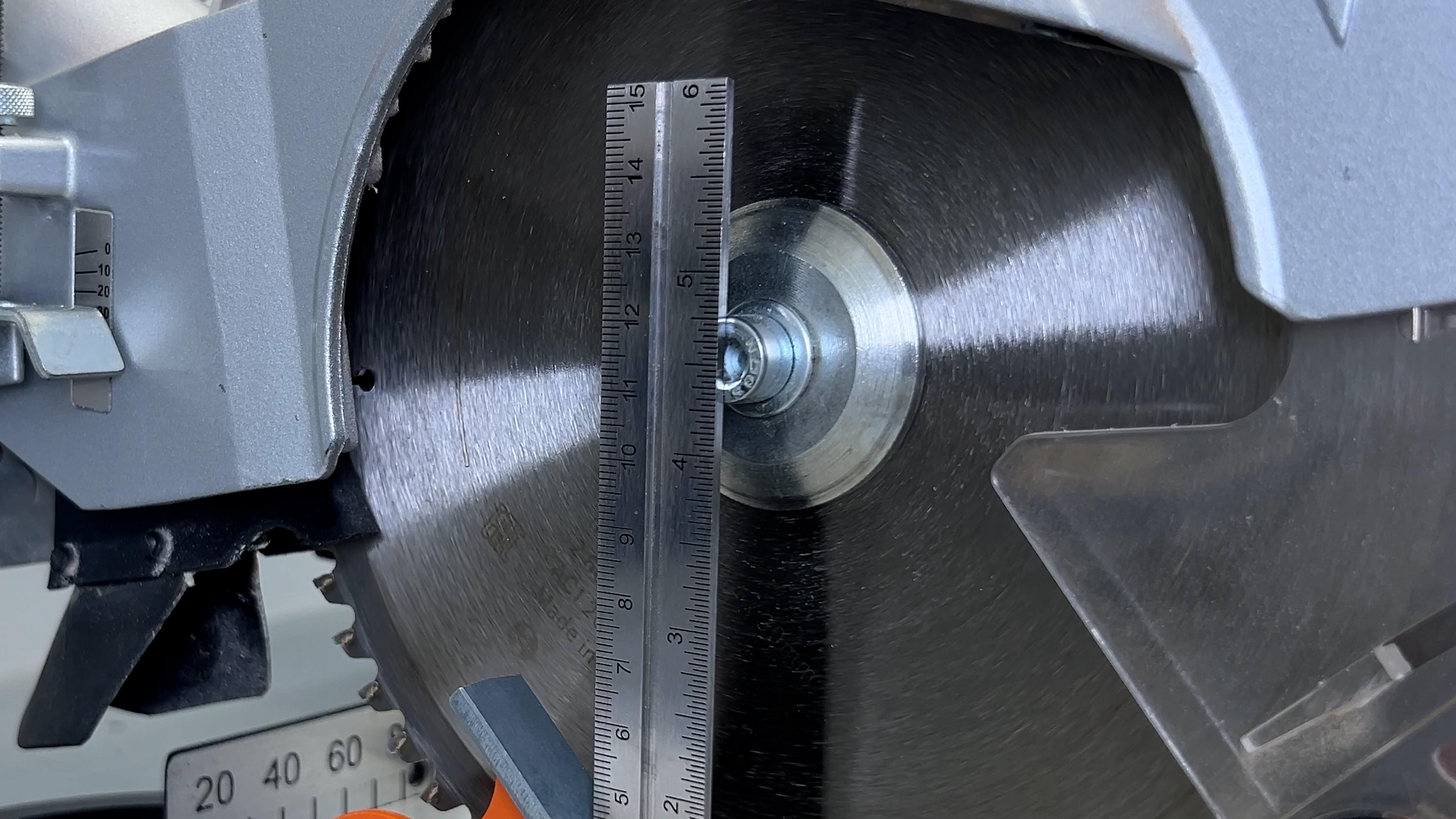
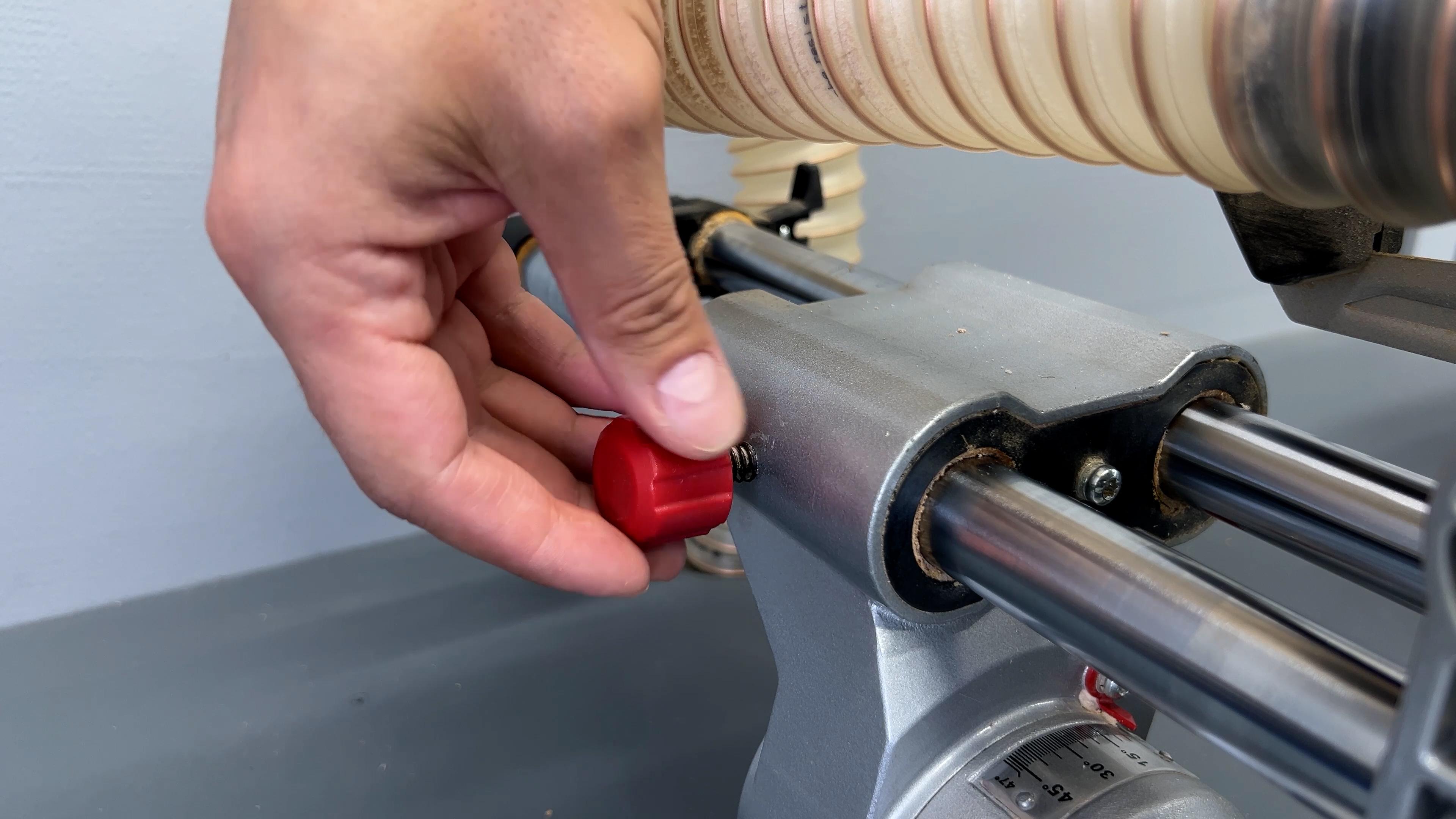
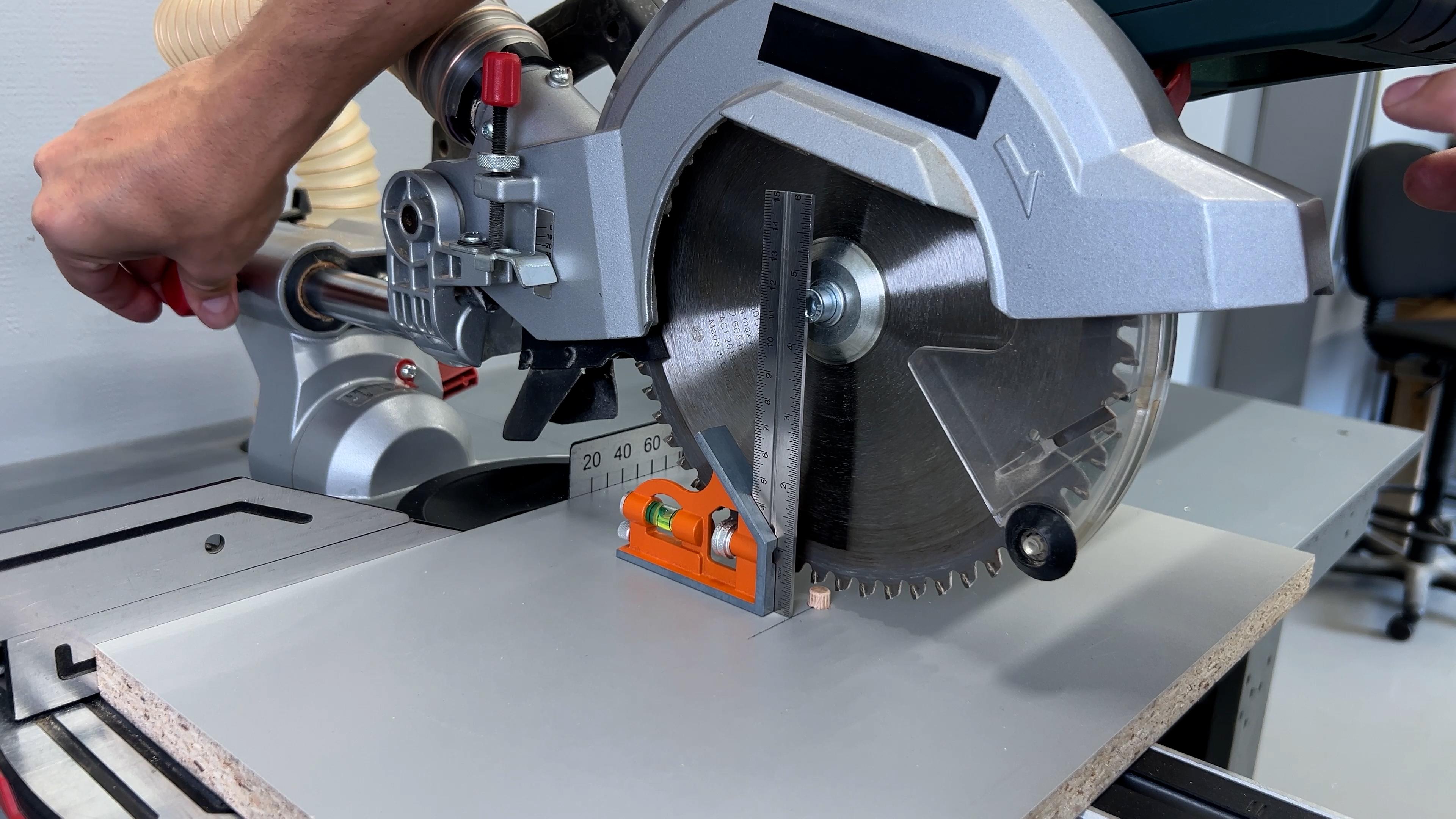
With one cutting axis adjusted, let's do the same with the other. The center of the cutting disc should be directly above the center of the wooden dowel. In this case, I need to adjust and lock the miter saw sliders. The center of the disc was found with the help of the square, and the miter saw slider could be locked.
Setting the Cutting Depth
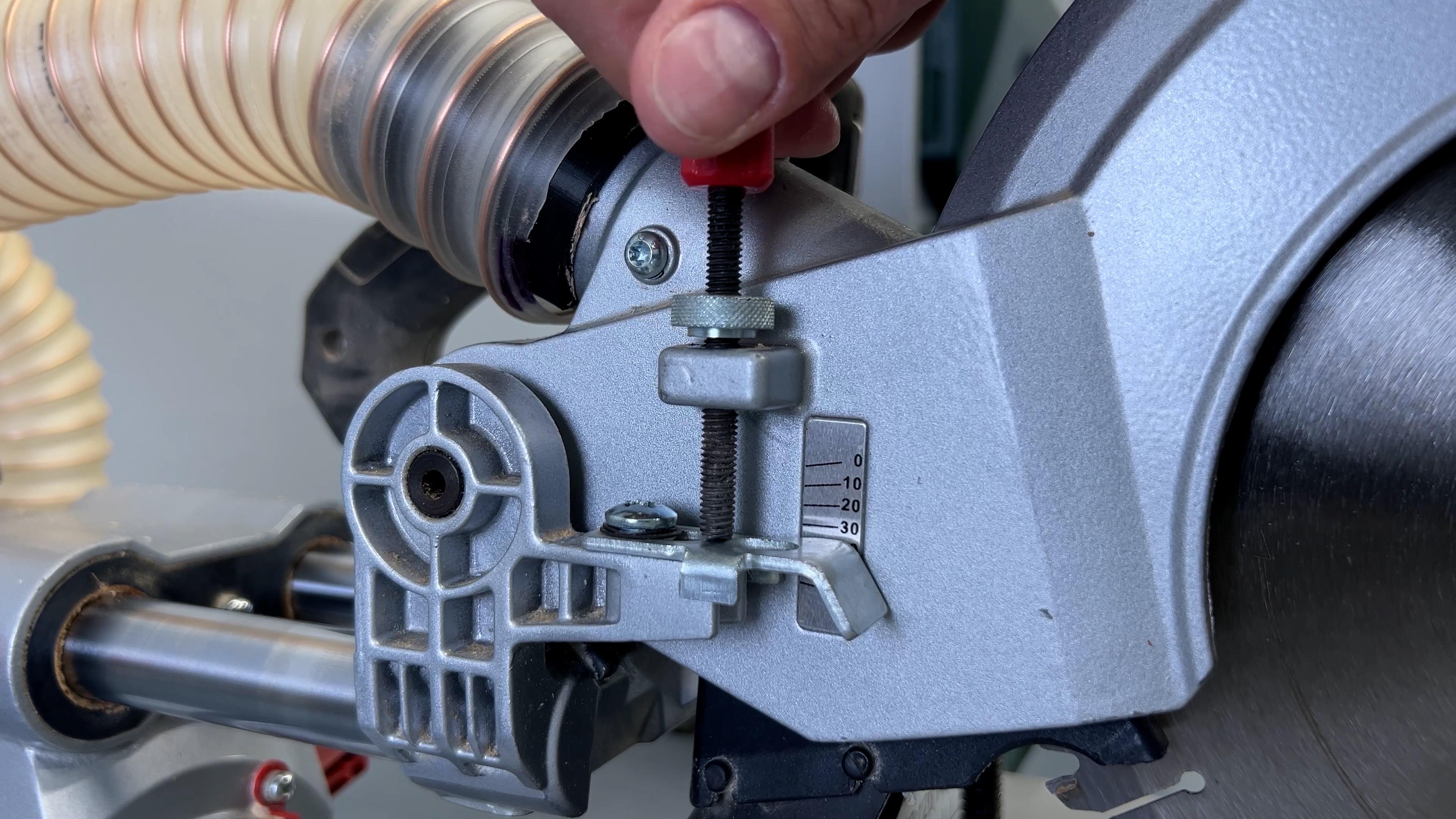
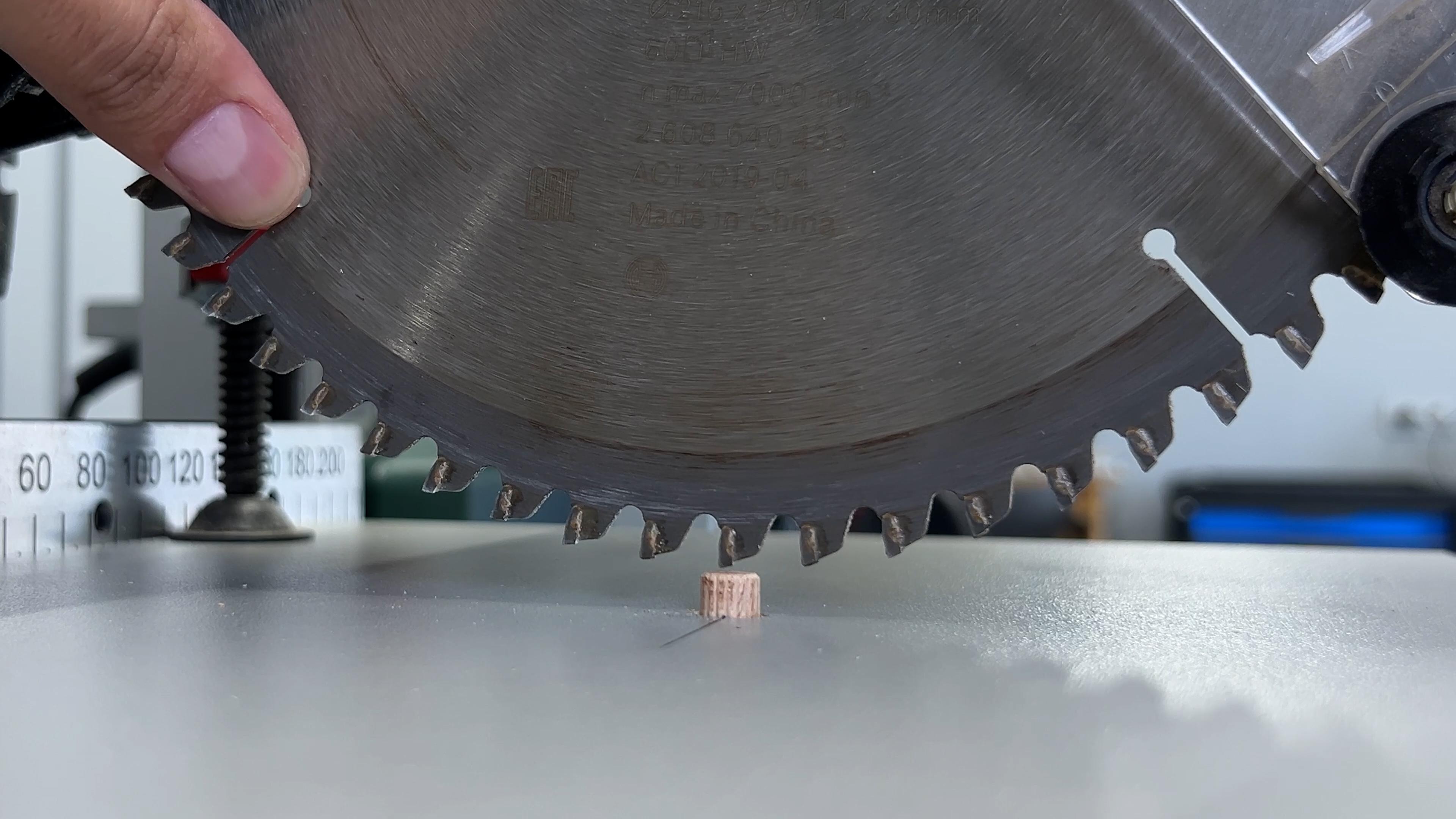
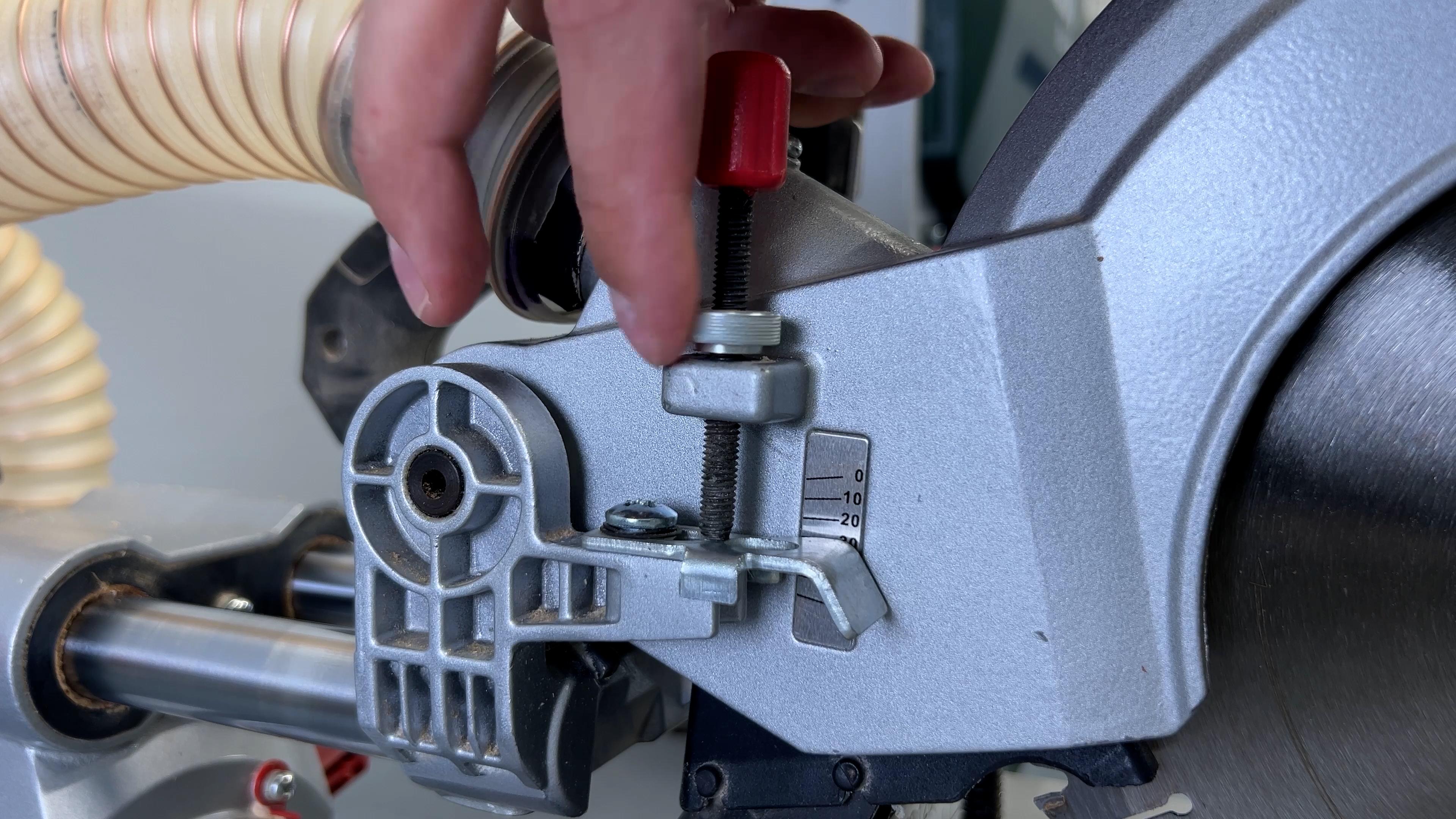
Lastly, I need to adjust the cutting depth. I need to lower the blade as deeply as possible while still keeping a few millimeters of gap between the blade and the dowel.
Small Preview
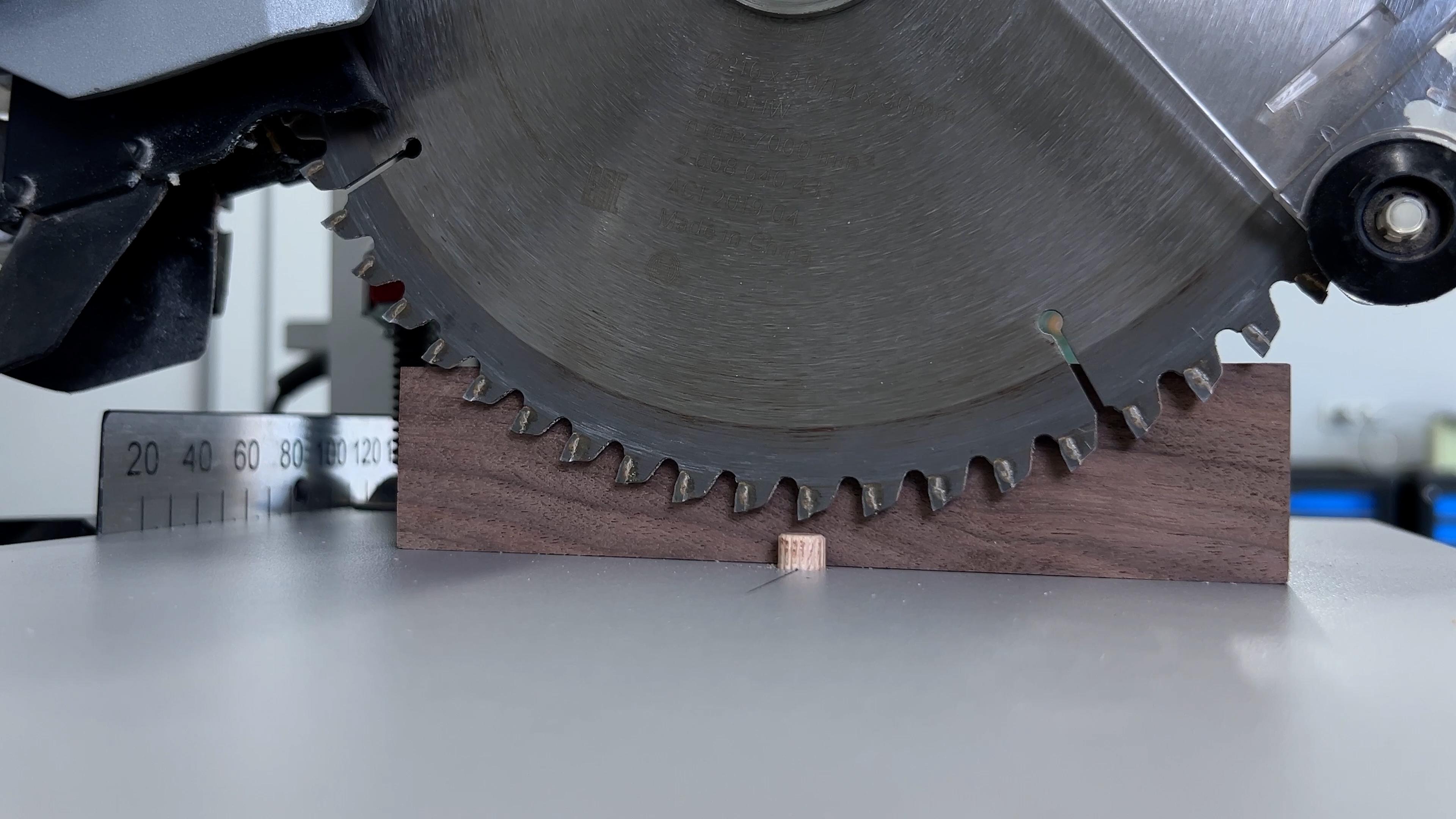

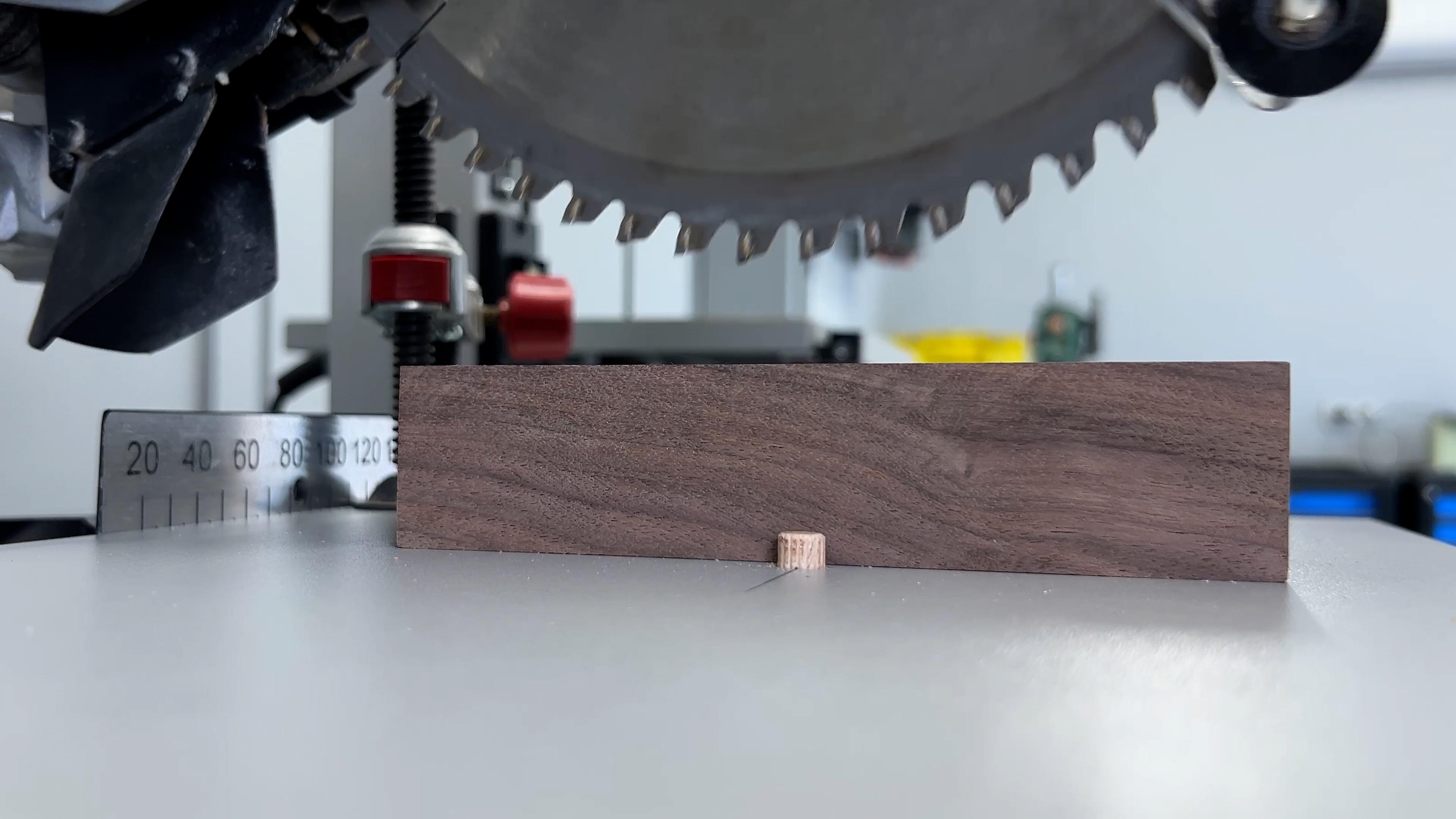
Here is the idea within the side view. This will be my lowest possible depth, but I will start a bit higher and gradually lower the blade to avoid any mistakes. If the blade goes too deep - the hole will be reached and exposed at the surface.
If someone is curious I’m using a 216mm diameter cutting disc with 60 teeths.
First Cutting Iteration
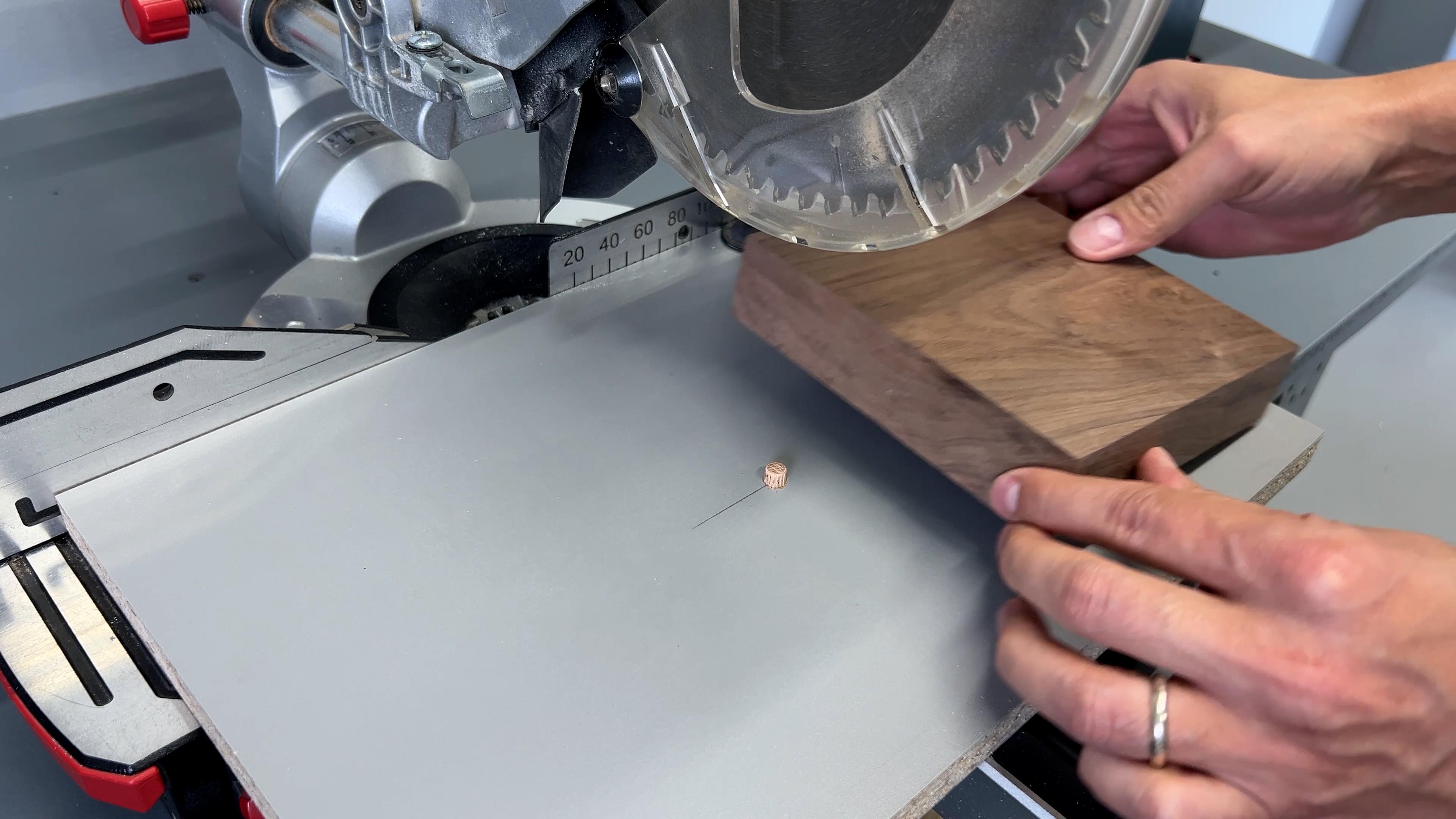
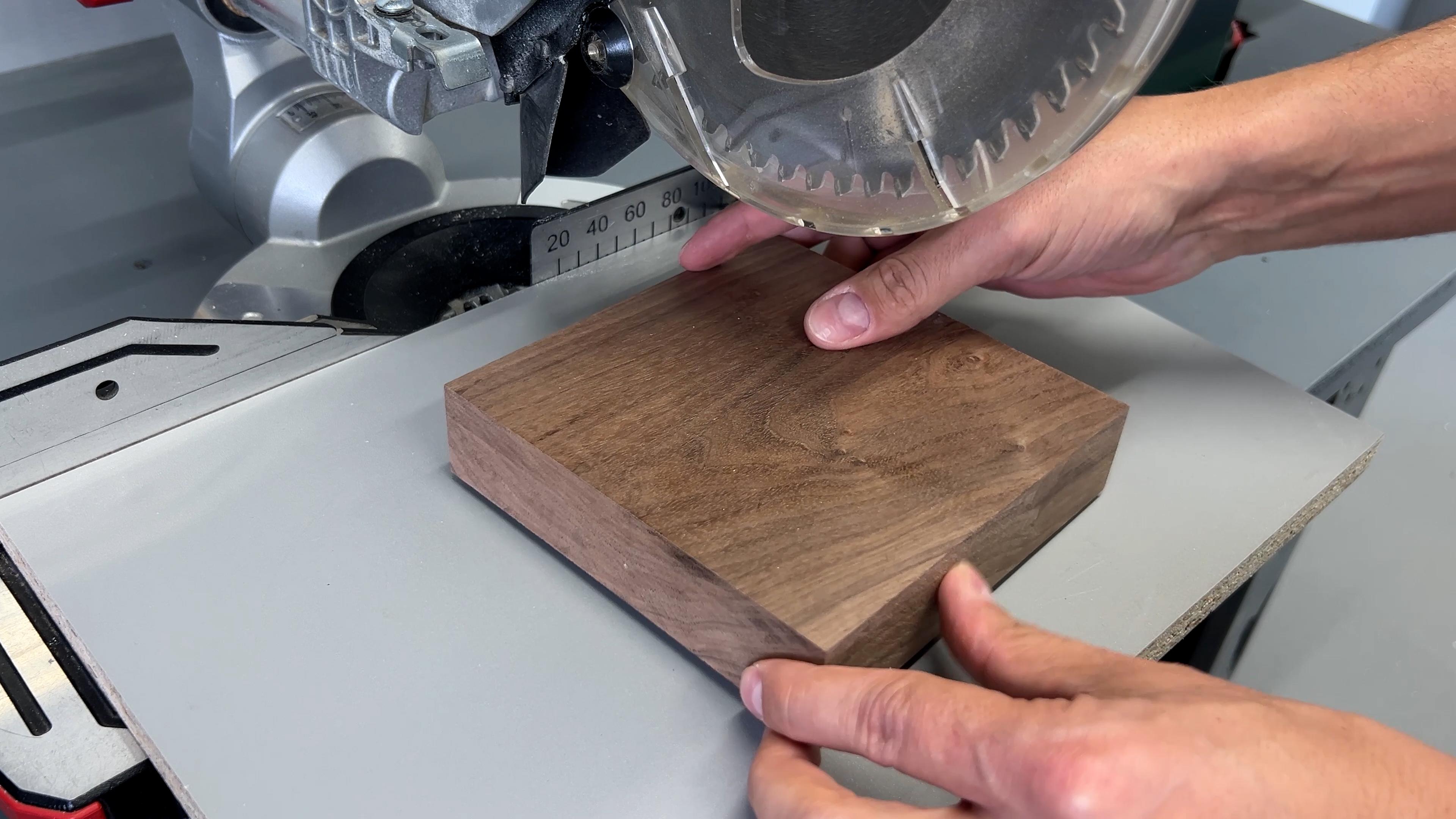
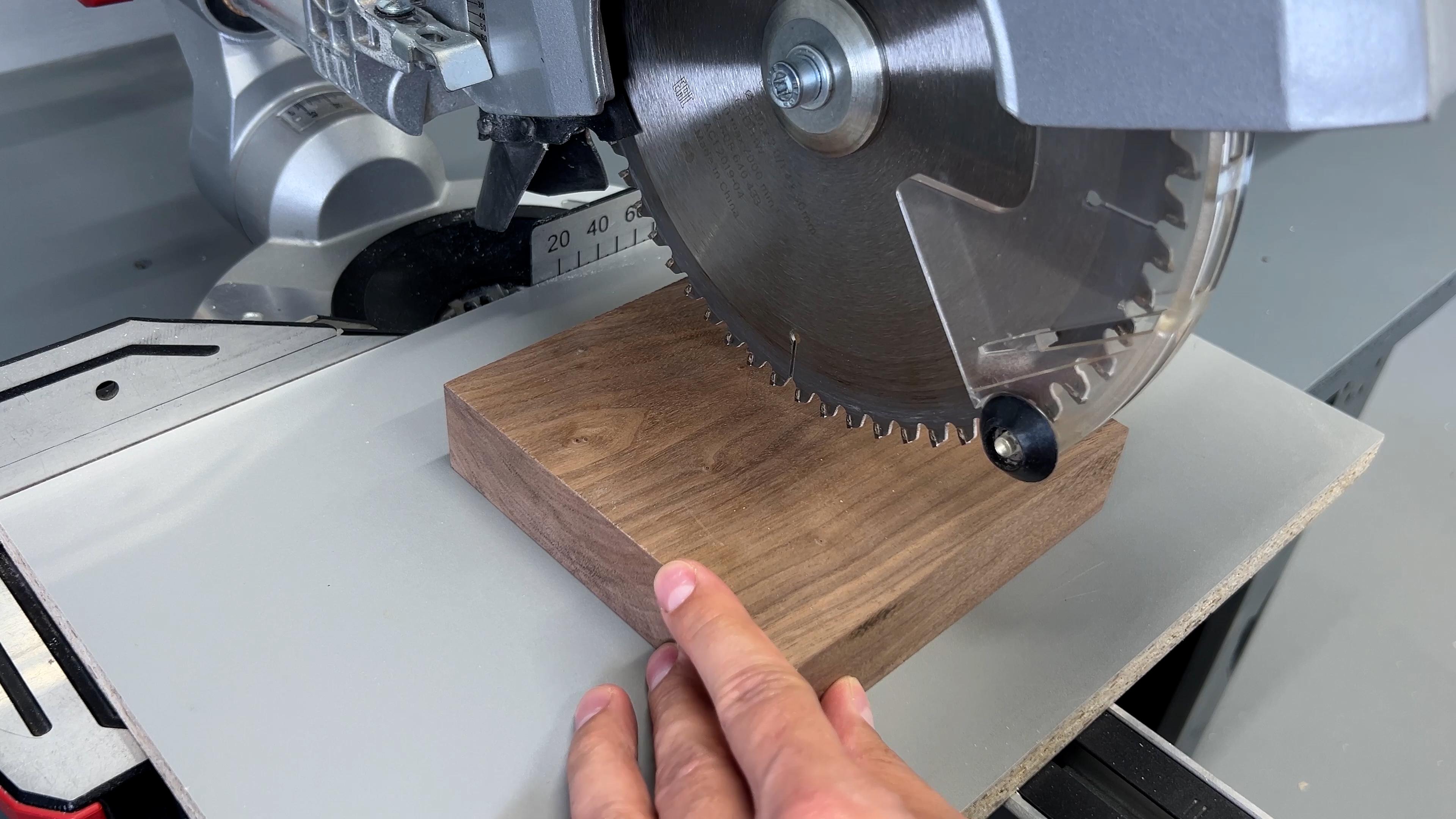
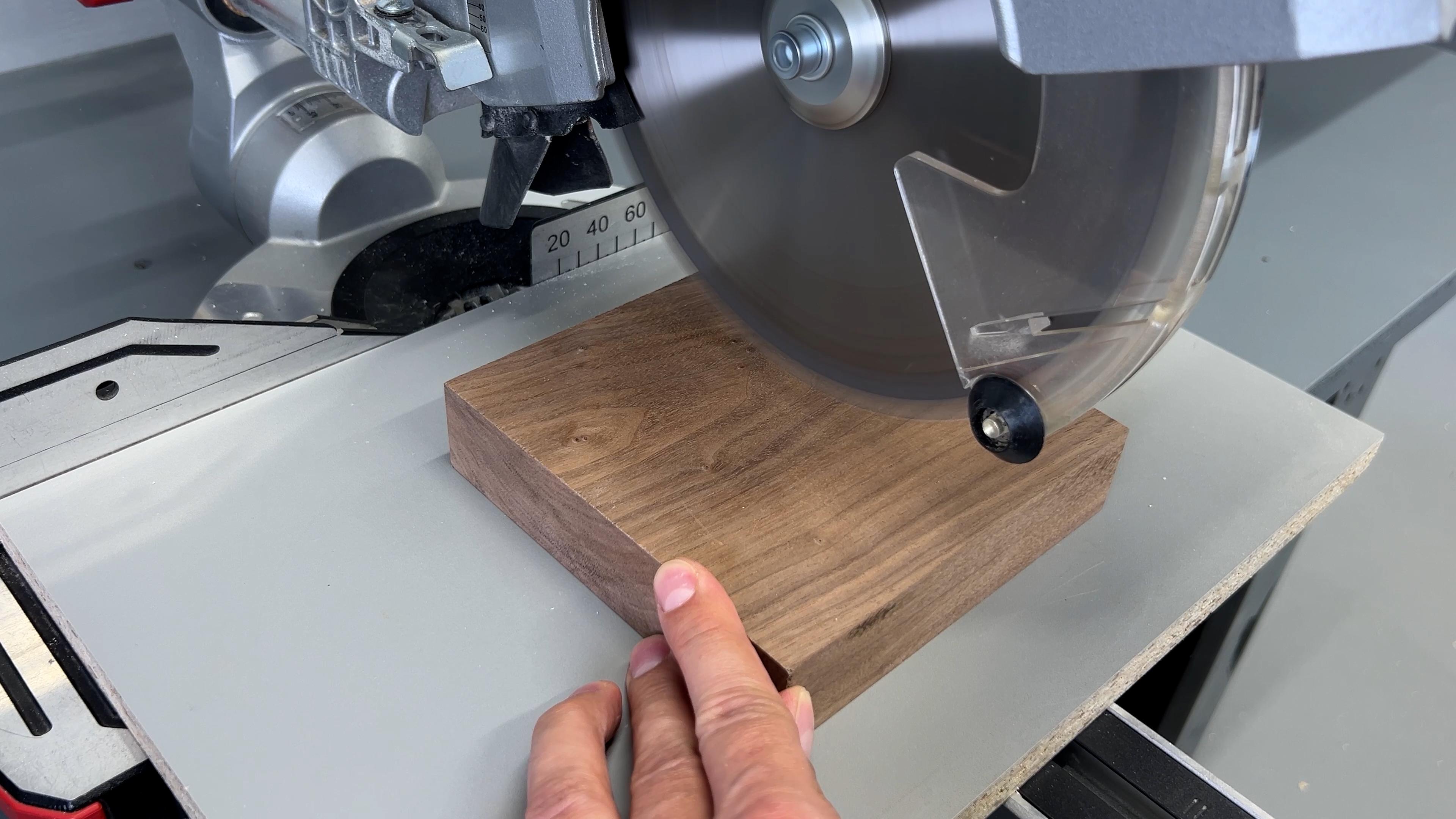
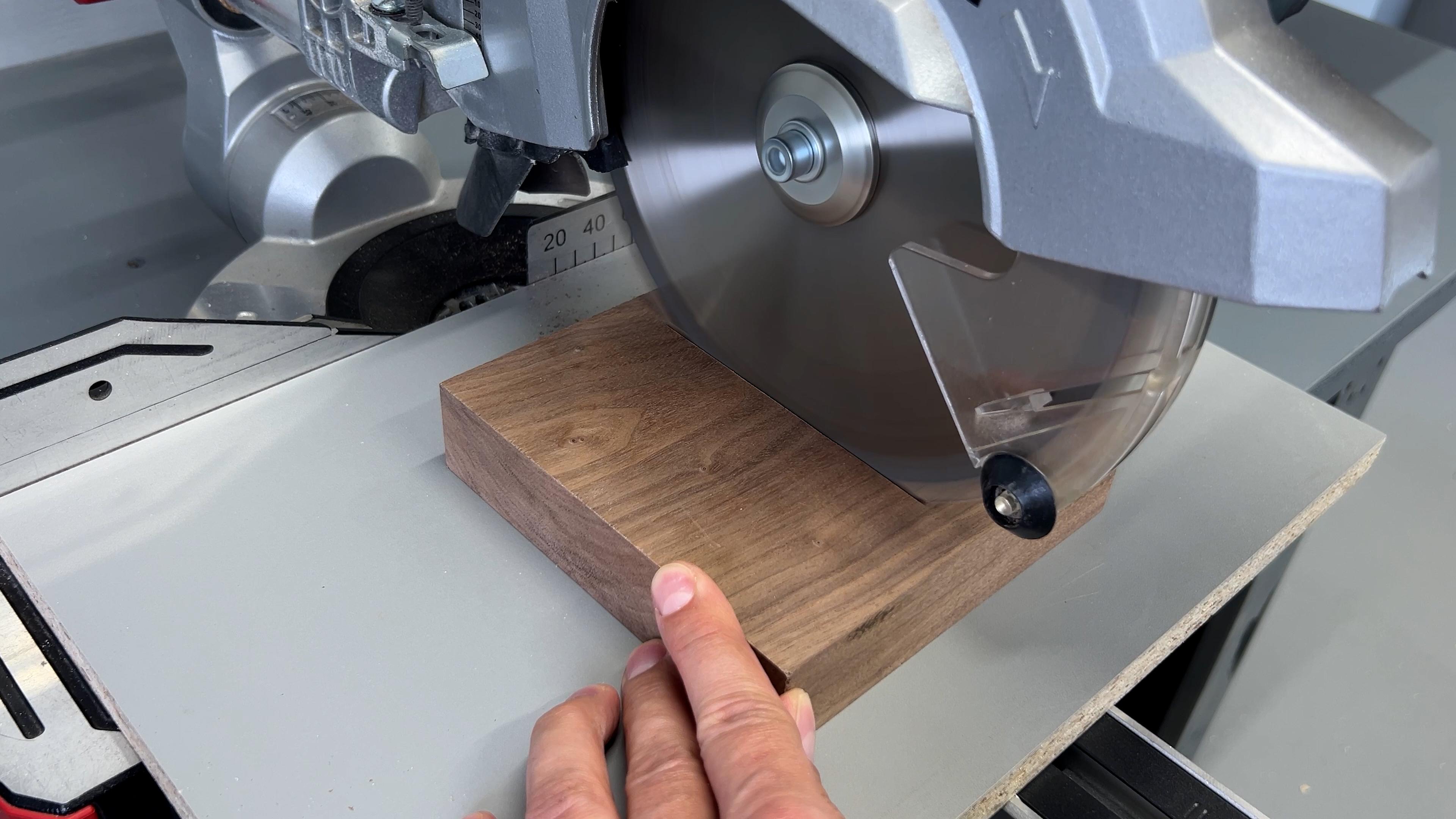
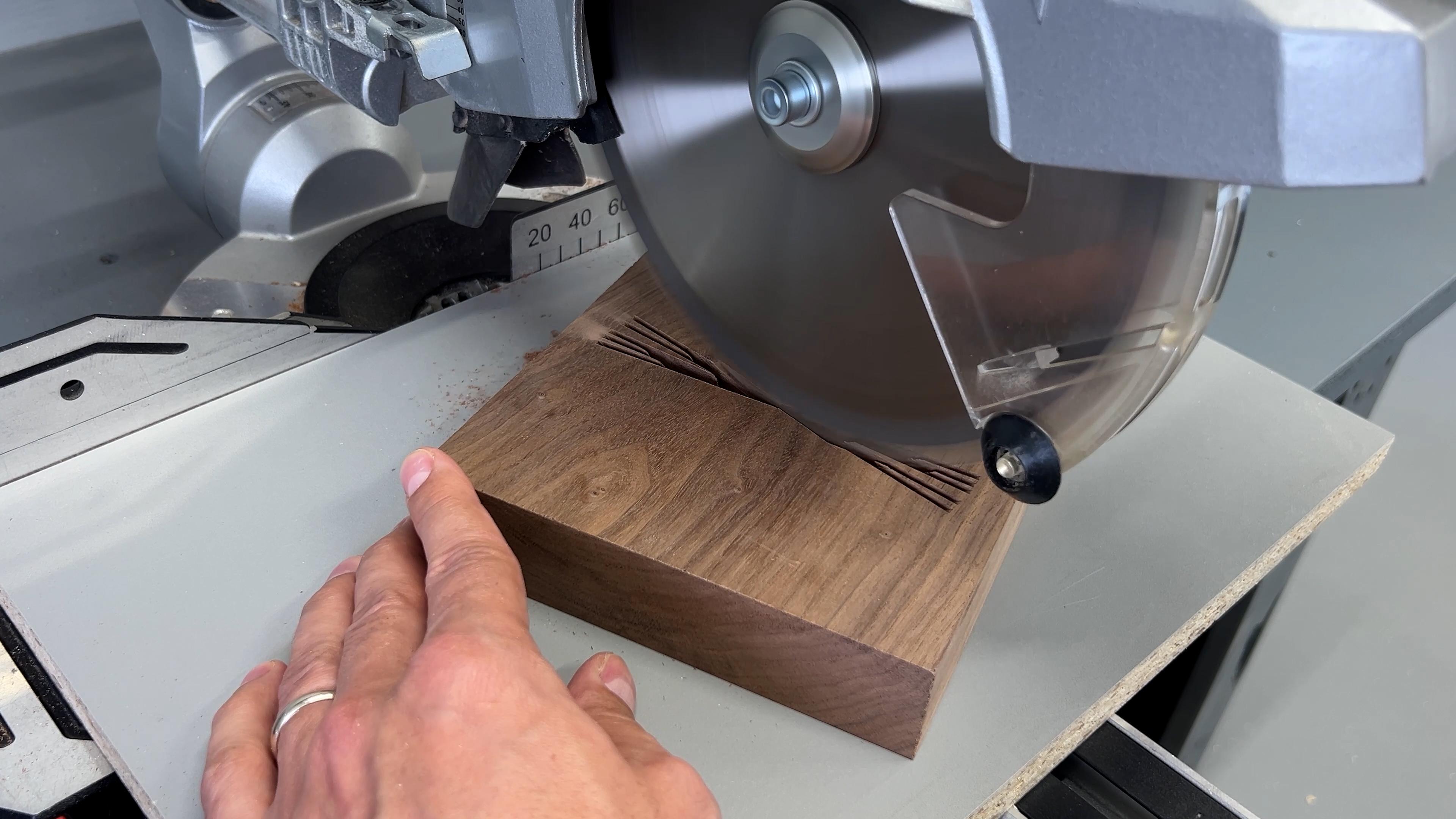
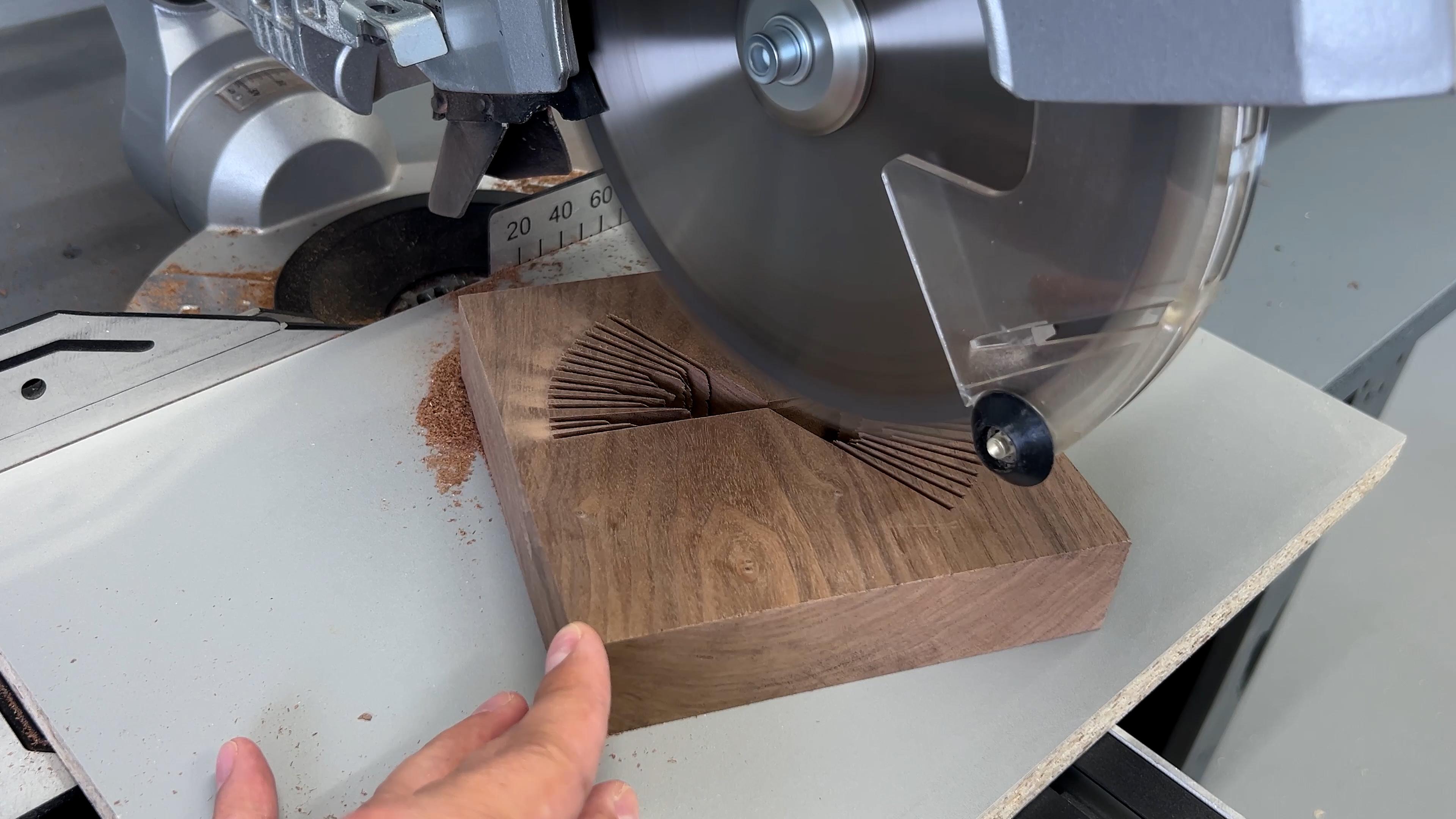
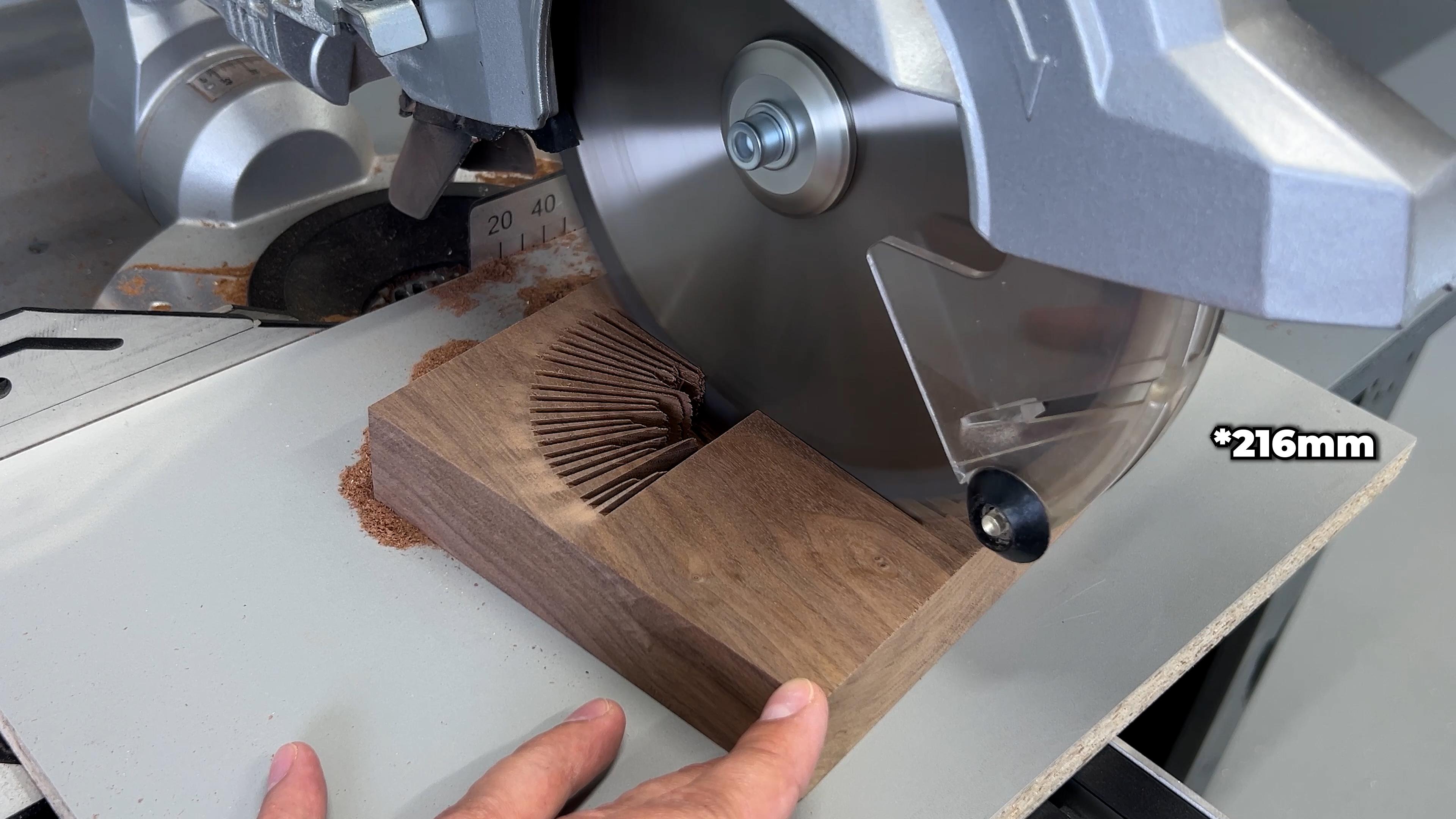
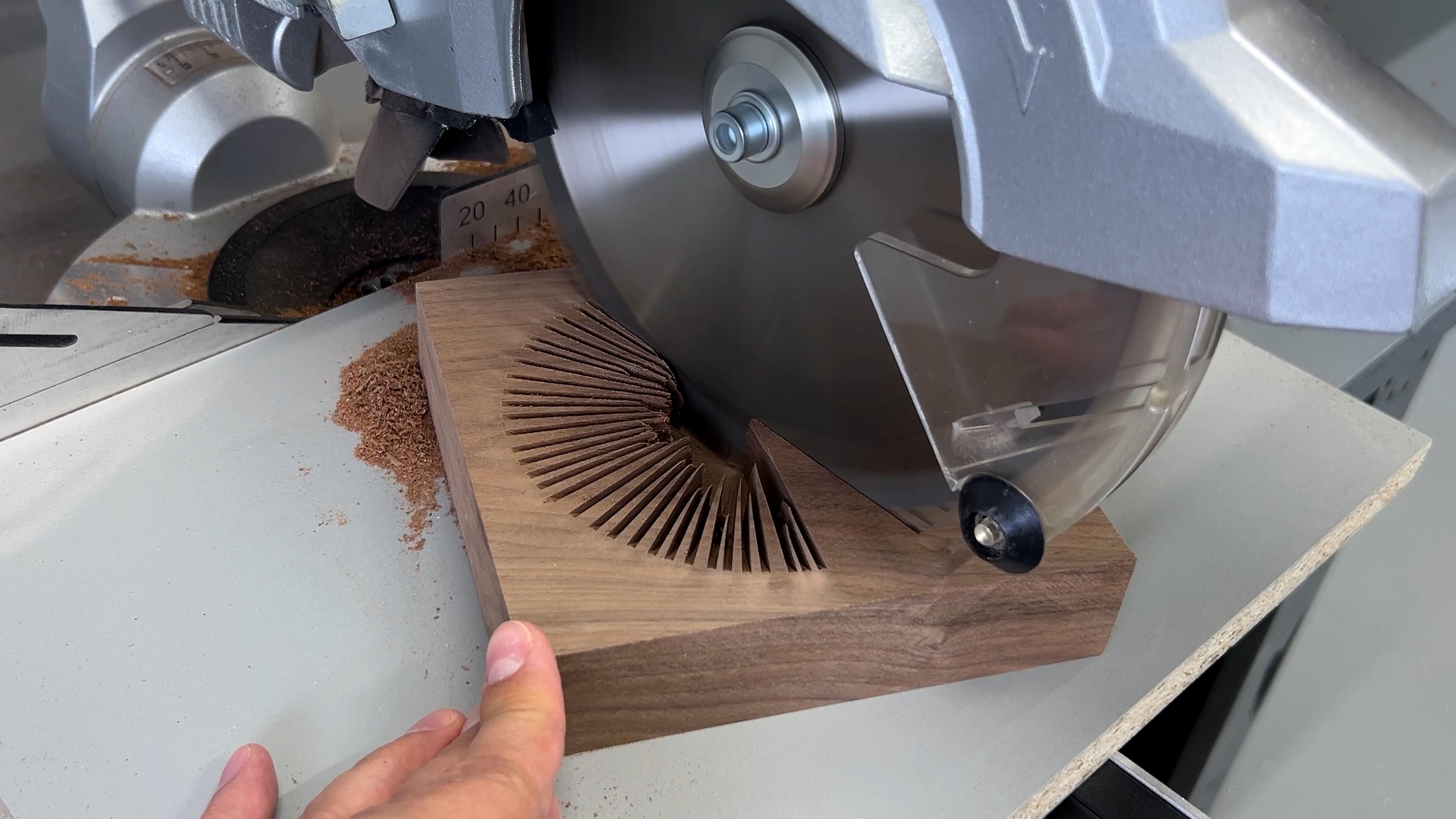

Mounted walnut piece in place, double-checked if it sits snug and flat on the jig, and fired up the miter saw for an endless cuts marathon. The process is quite simple and repetitive. After each cut, I made a small turn to expose a fresh surface for the upcoming cut. I worked slowly, keeping an eye on where my hand is holding.
Cleaning Leftovers

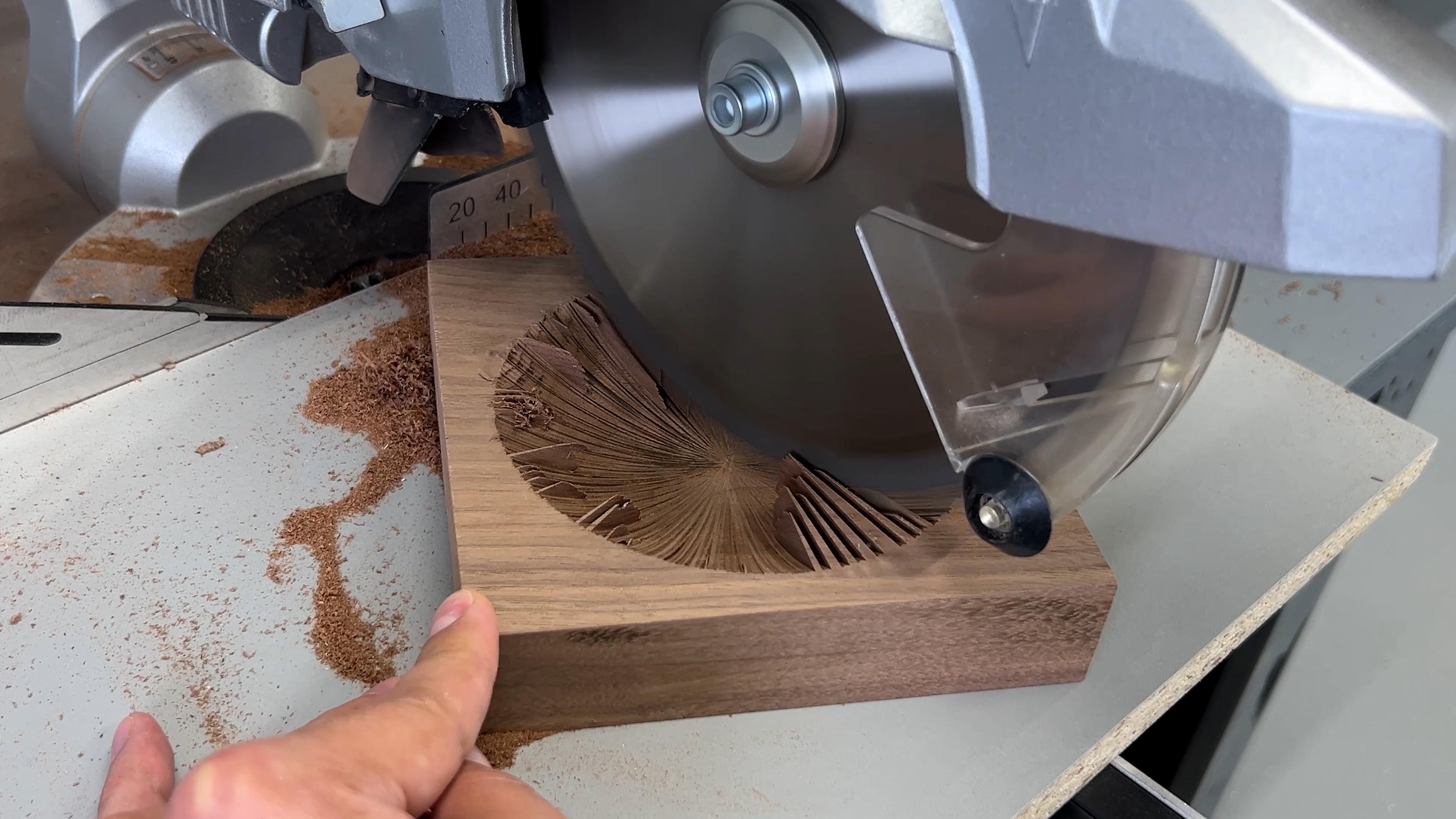
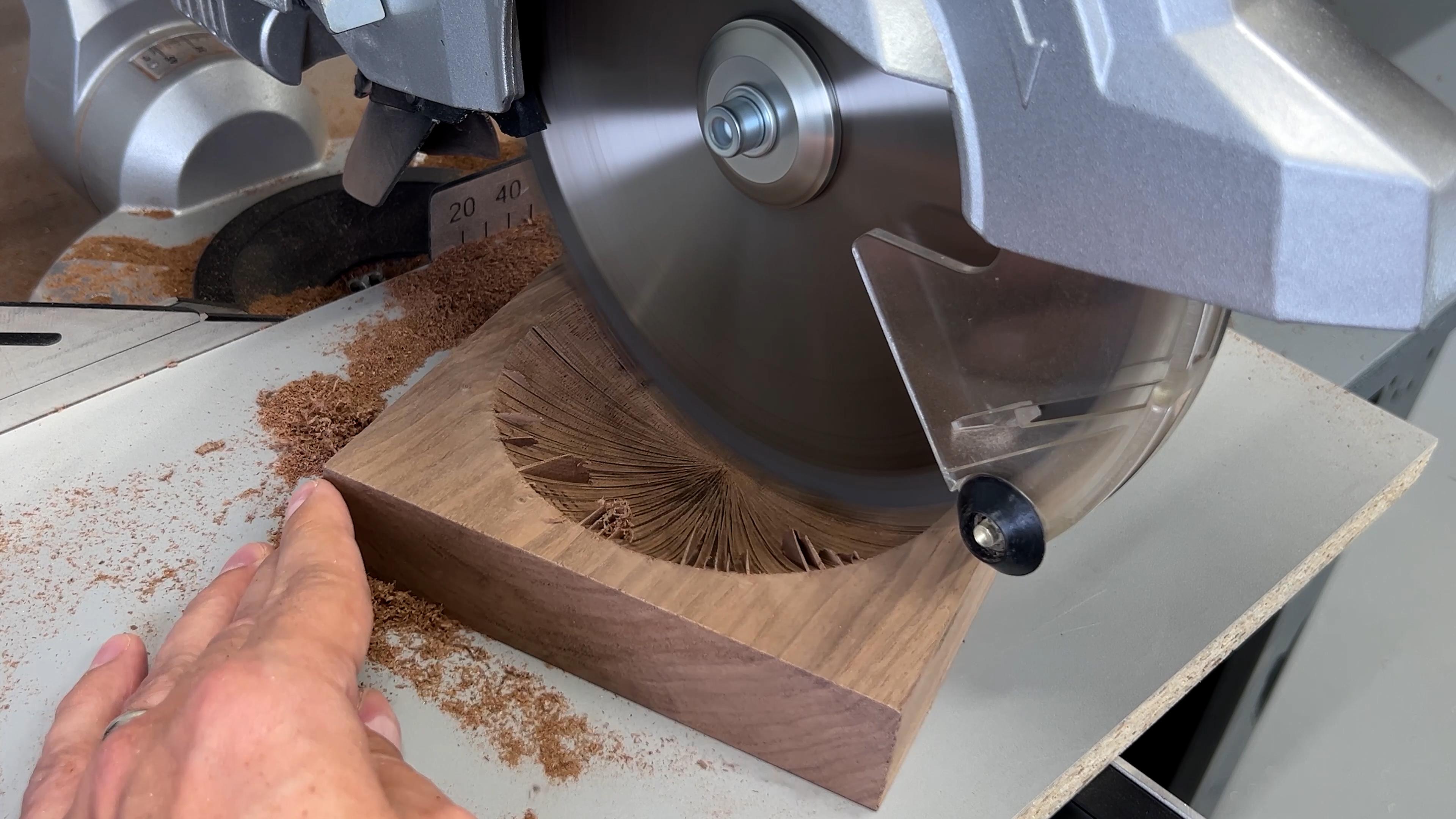
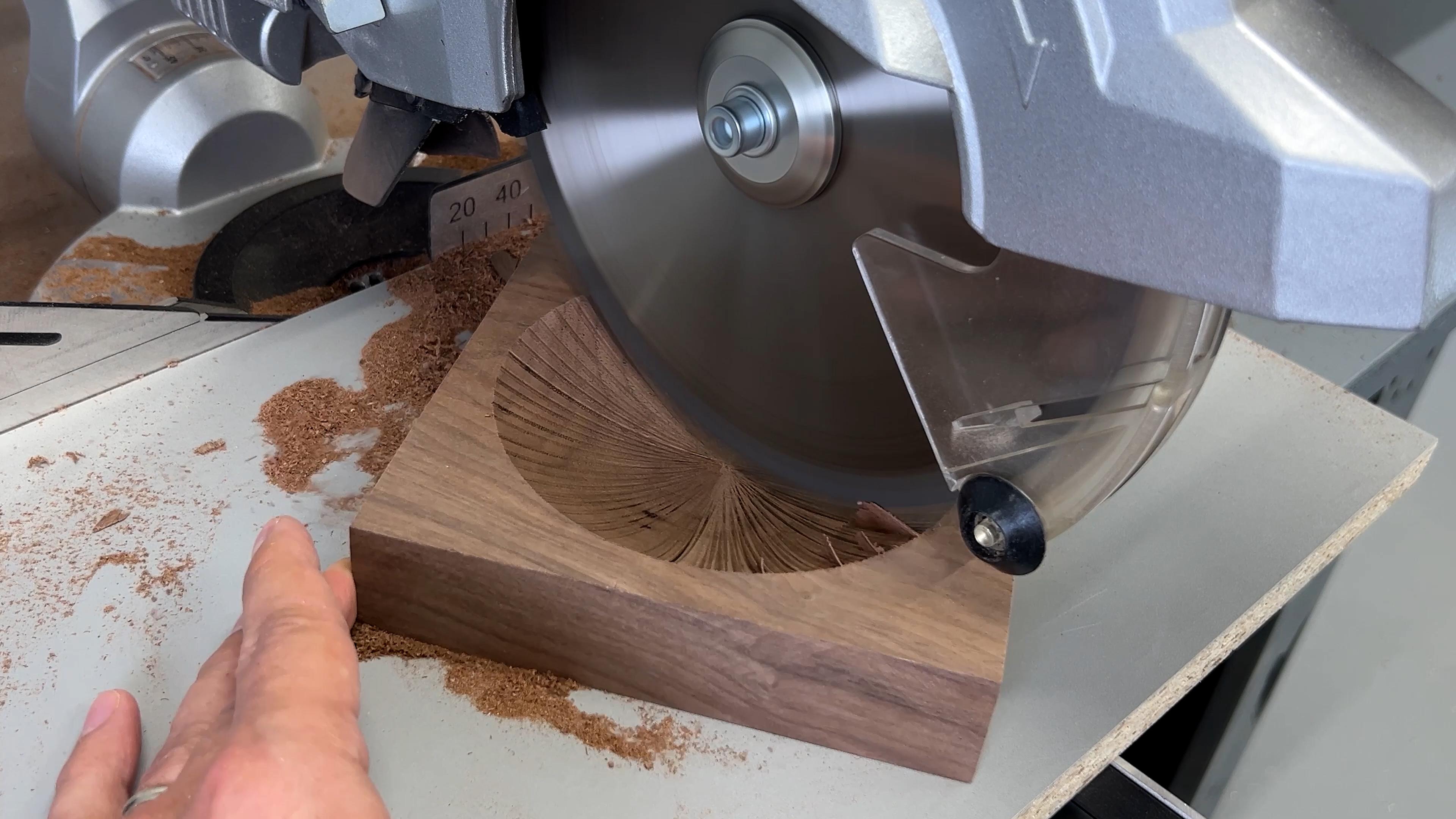
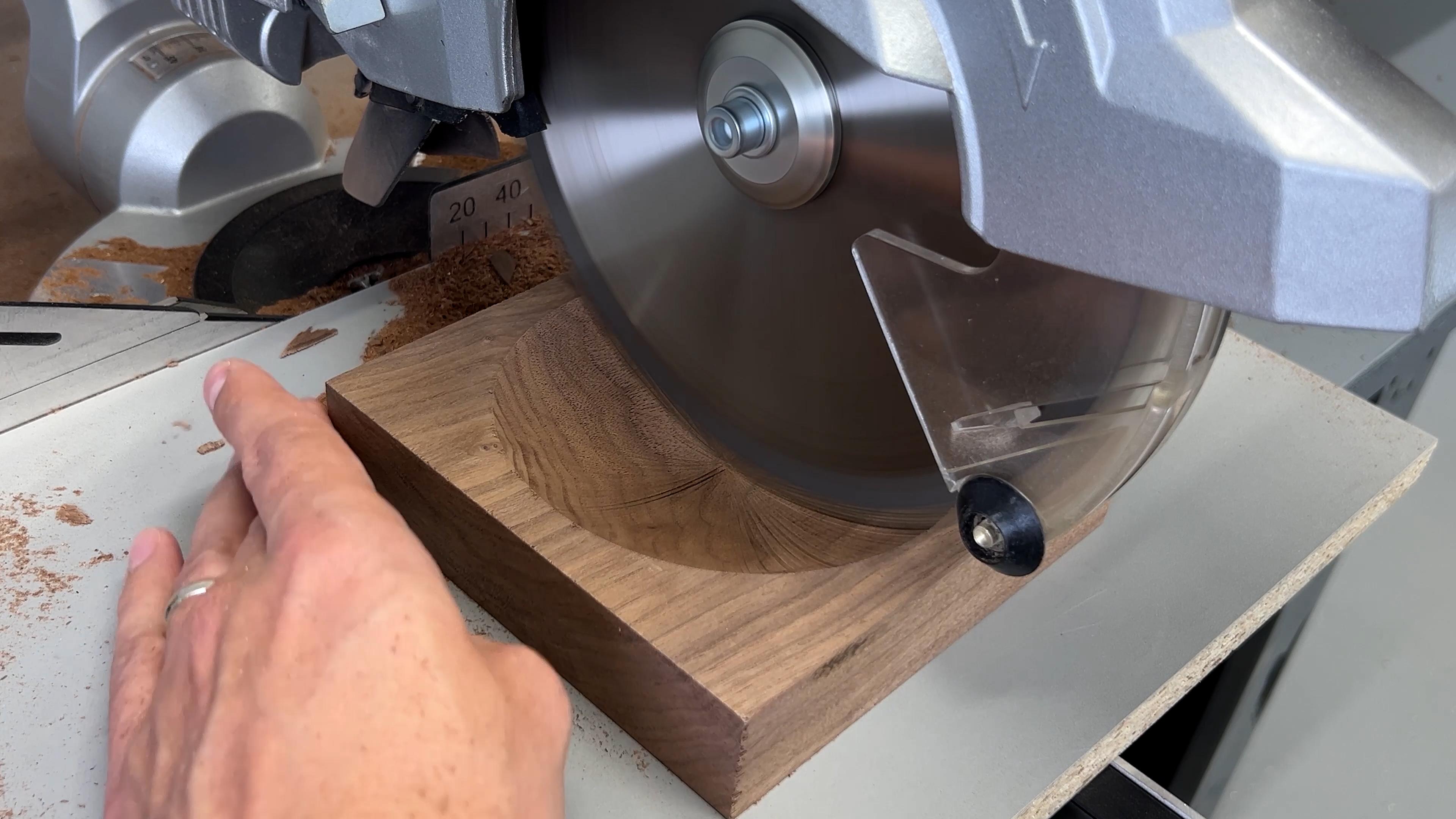
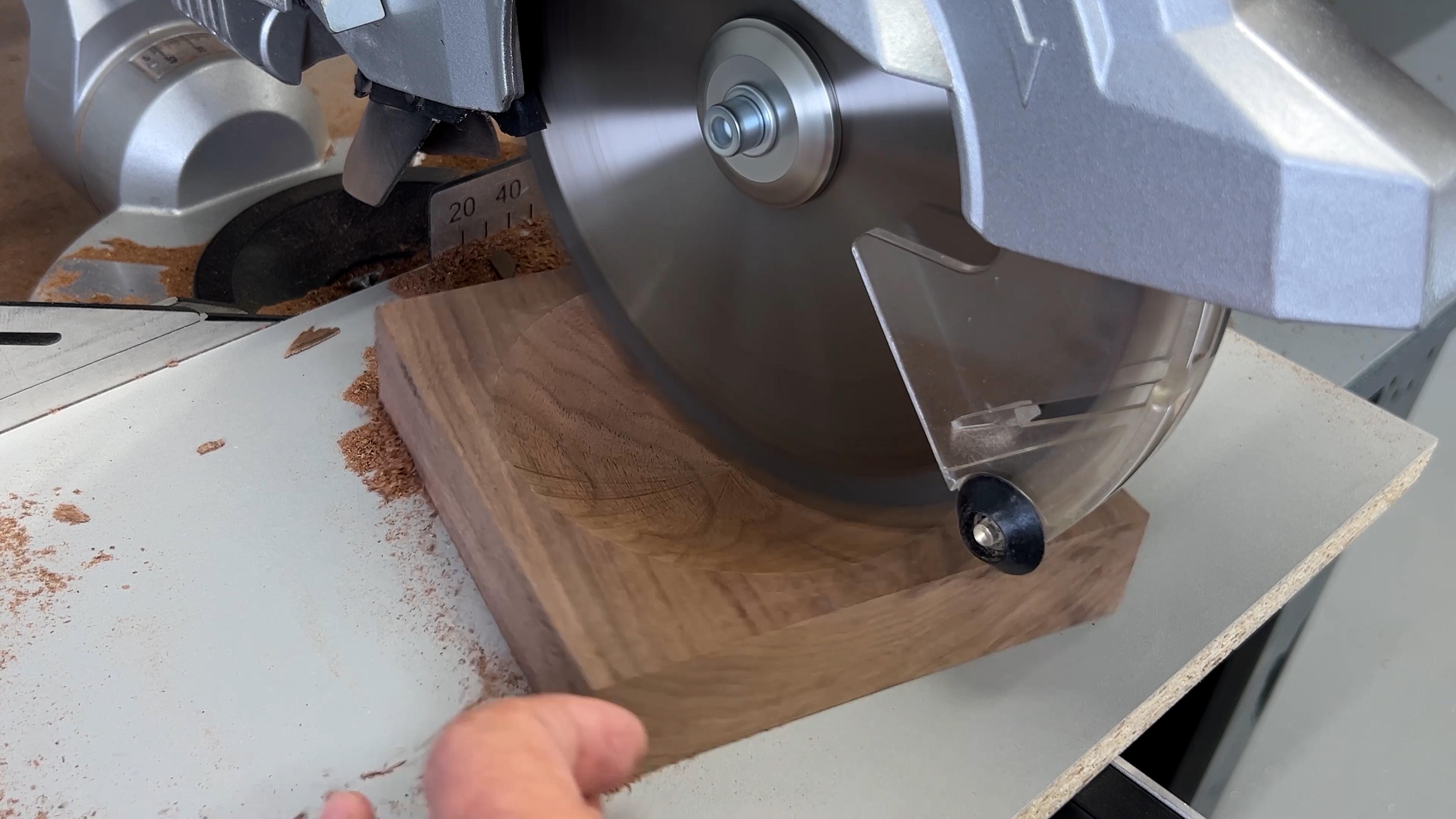
Cut by cut, I sliced a full circle. Then I made one more pass to trim down the leftovers.
Deepening the Bowl
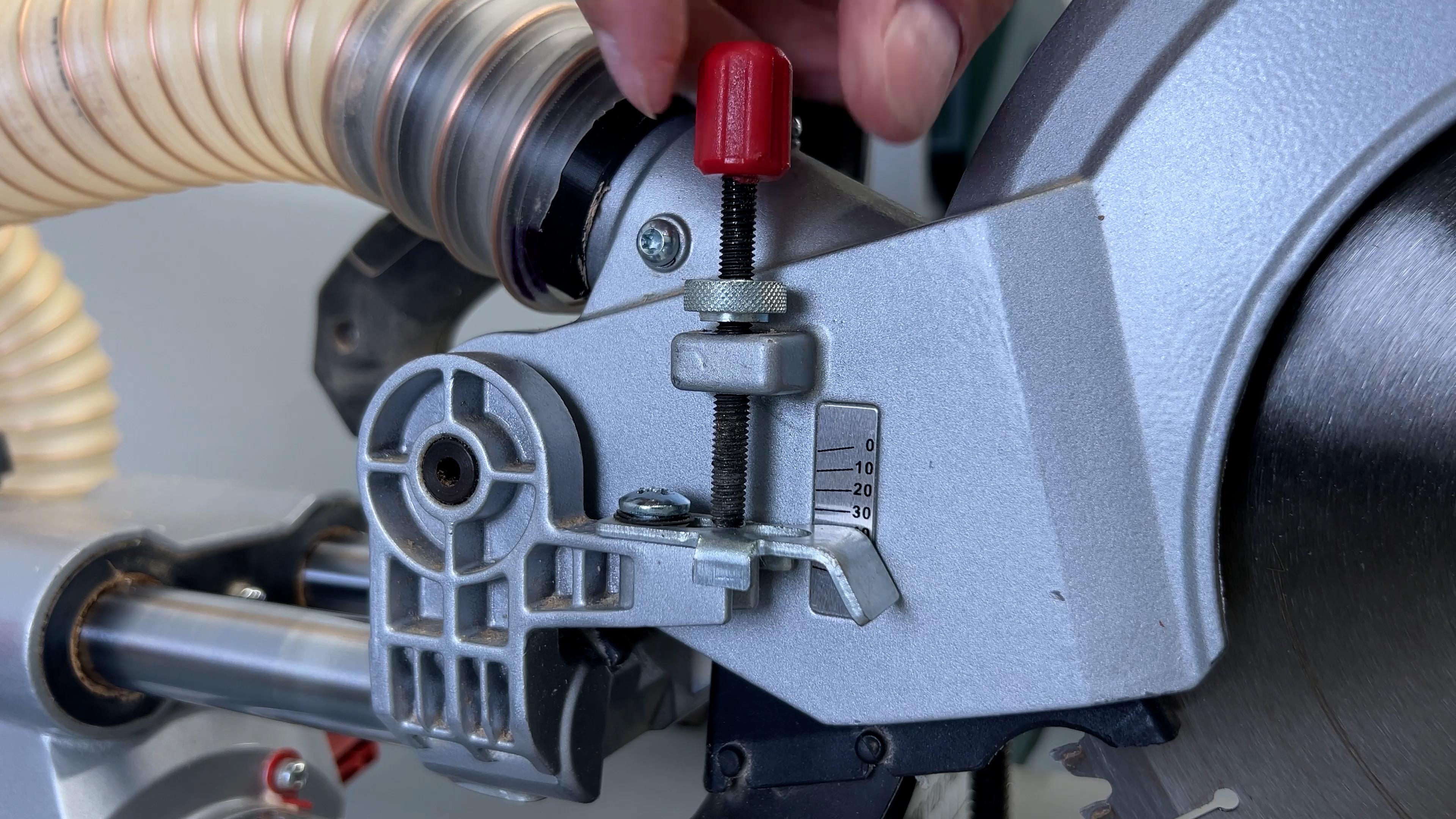
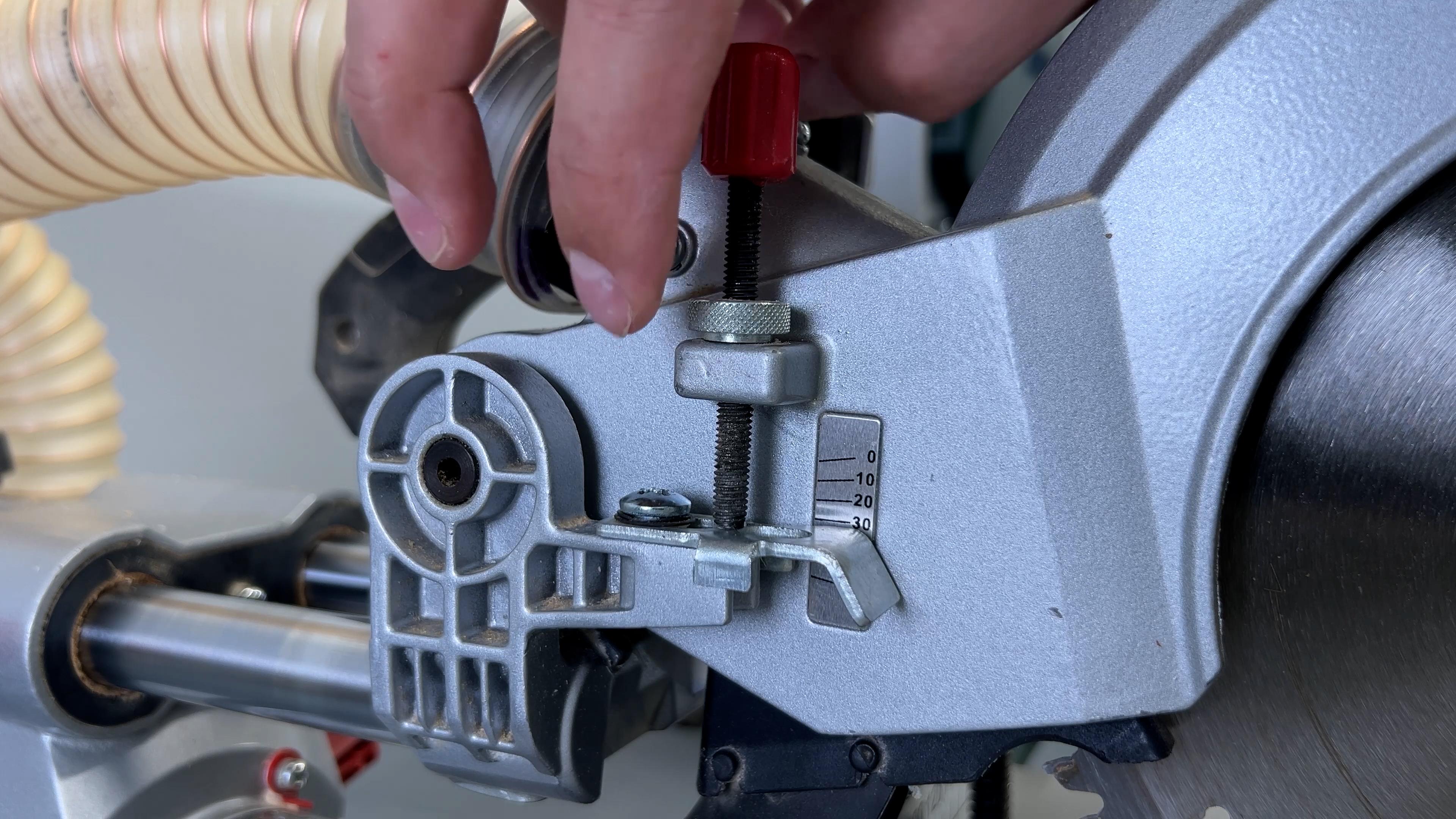
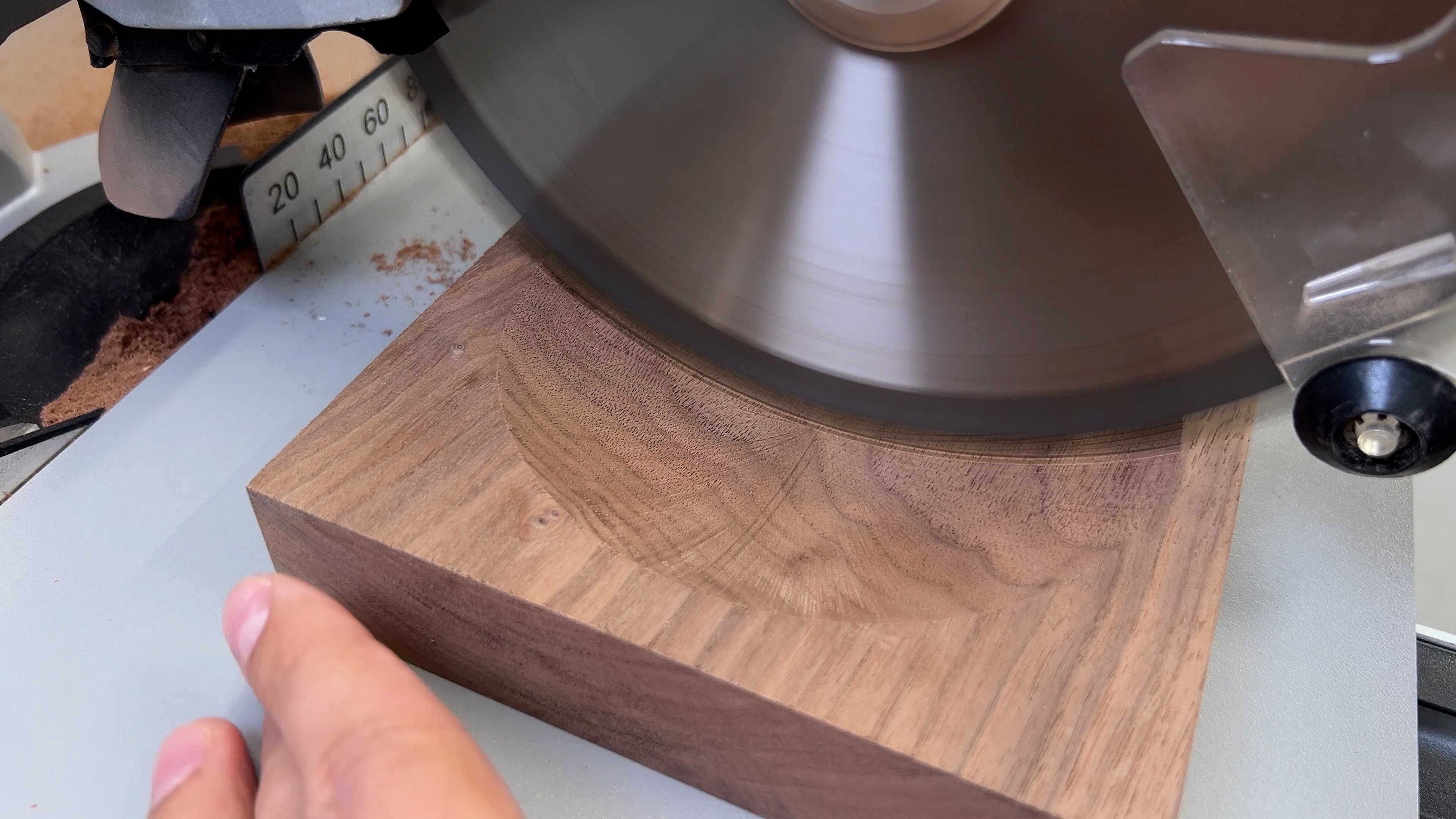
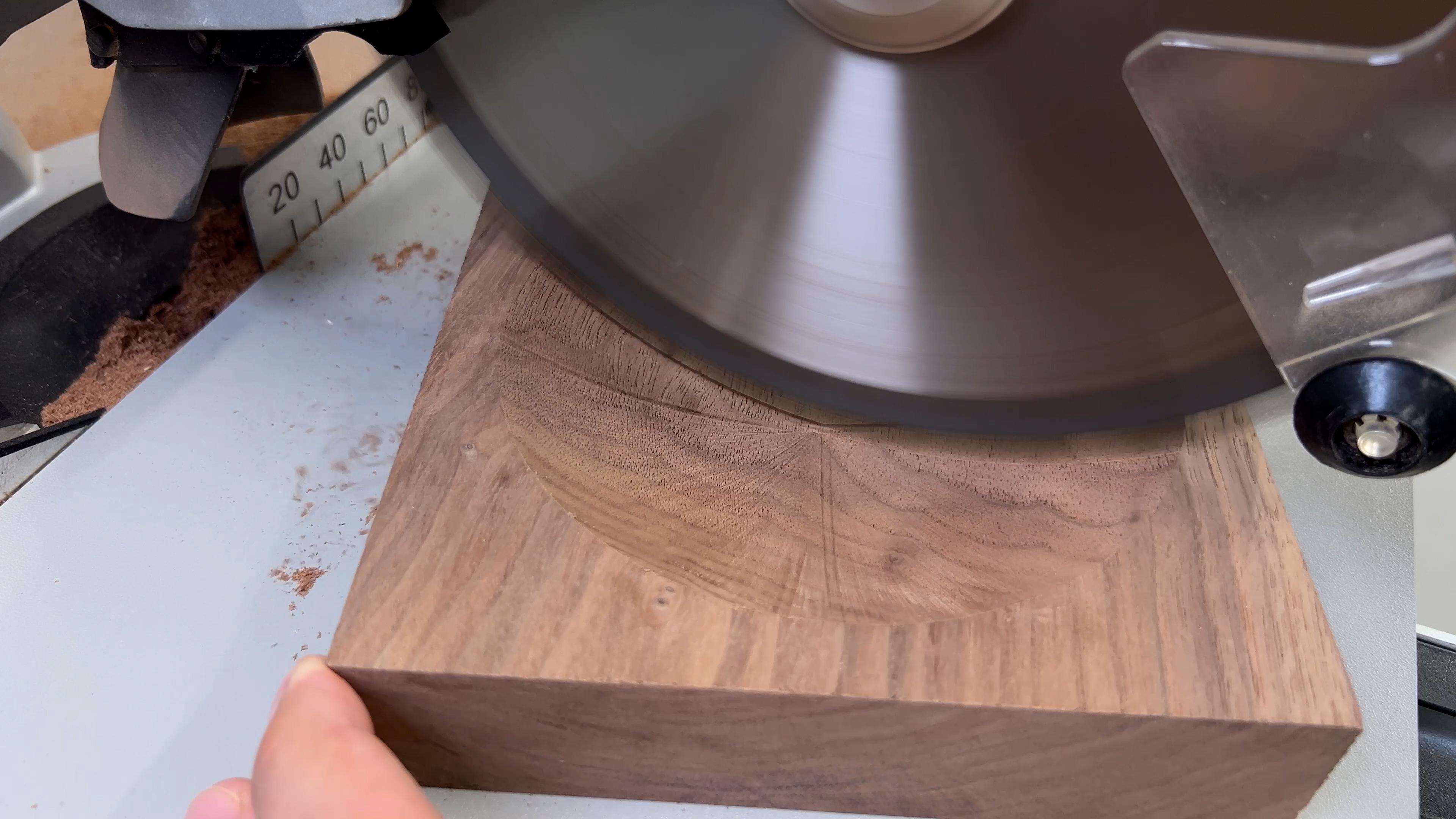
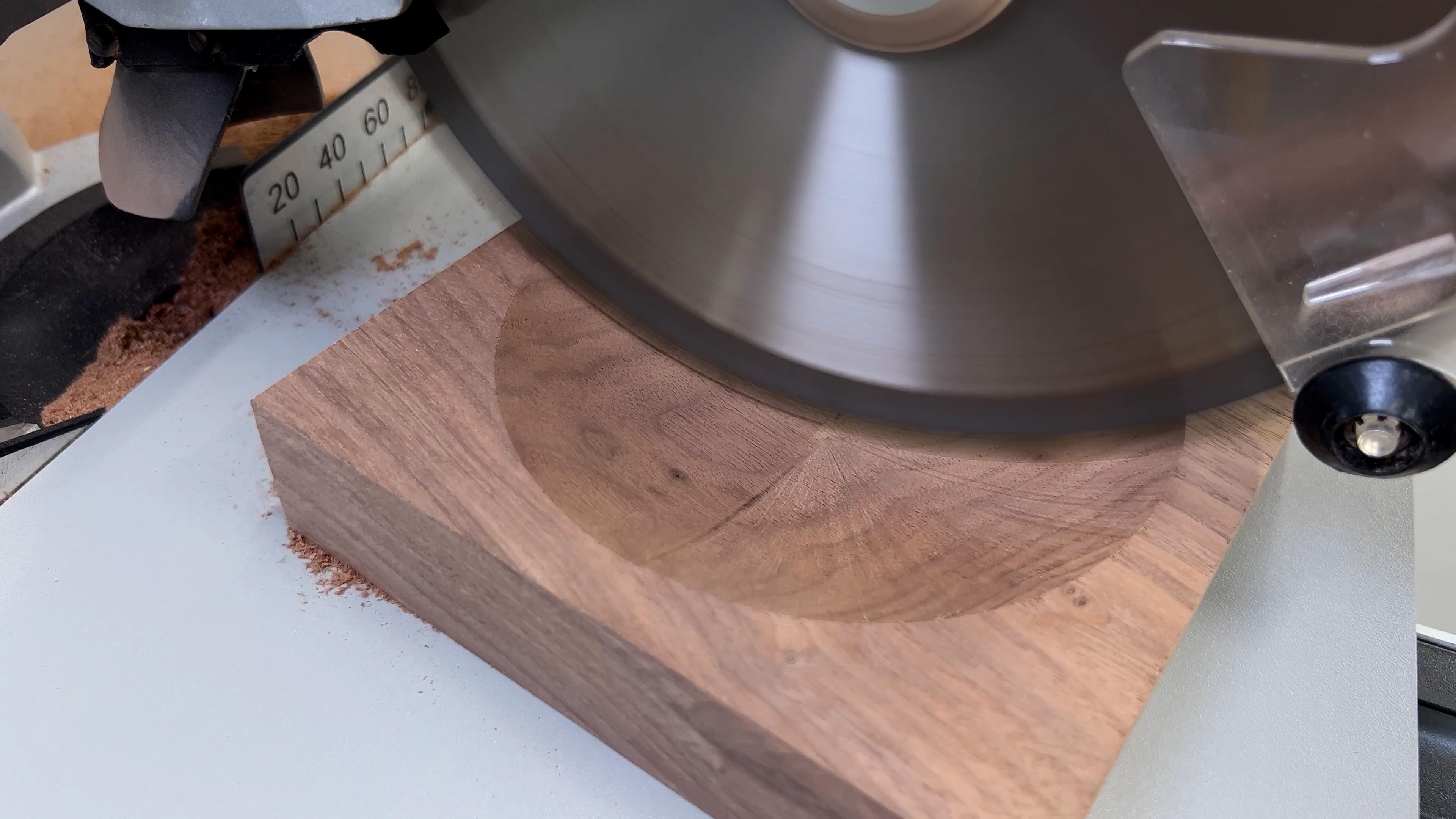
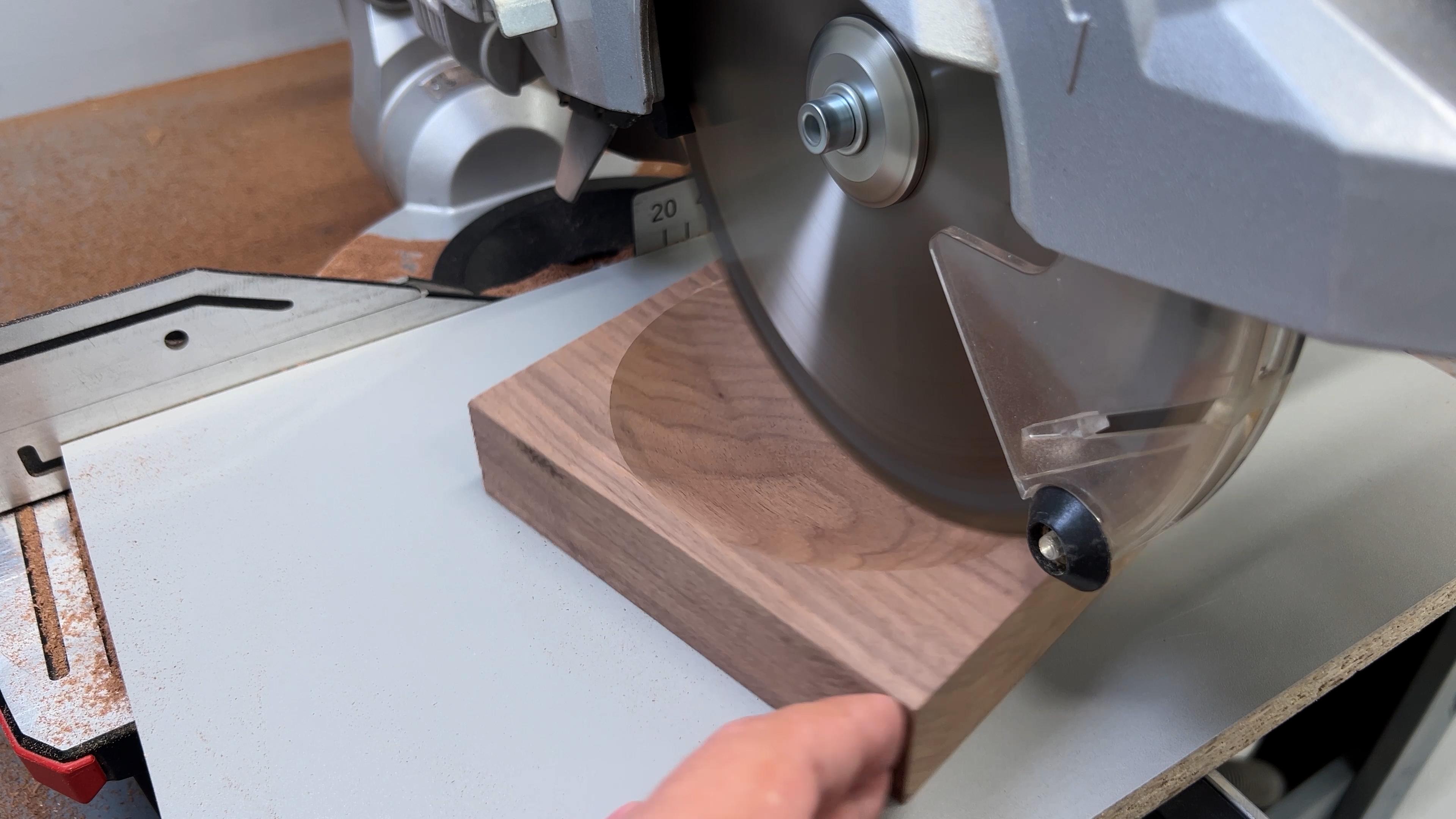
The majority of wood was removed, so I lowered the blade and spun the walnut piece to clean up the surface. I have to admit – I was a bit surprised by how well it worked!
From this point, I'm going to lower the blade in small increments and deepen the bowl plate. It took me only two passes until I reached my lowest possible mark. If I go deeper, the drilled hole will be exposed in the middle, and the piece will be ruined.
Up until now, I was quite happy with my dust collection on this miter saw. But looking at the buildup around the tool now, I definitely will take a look at how to improve it.
One Piece Is Done!
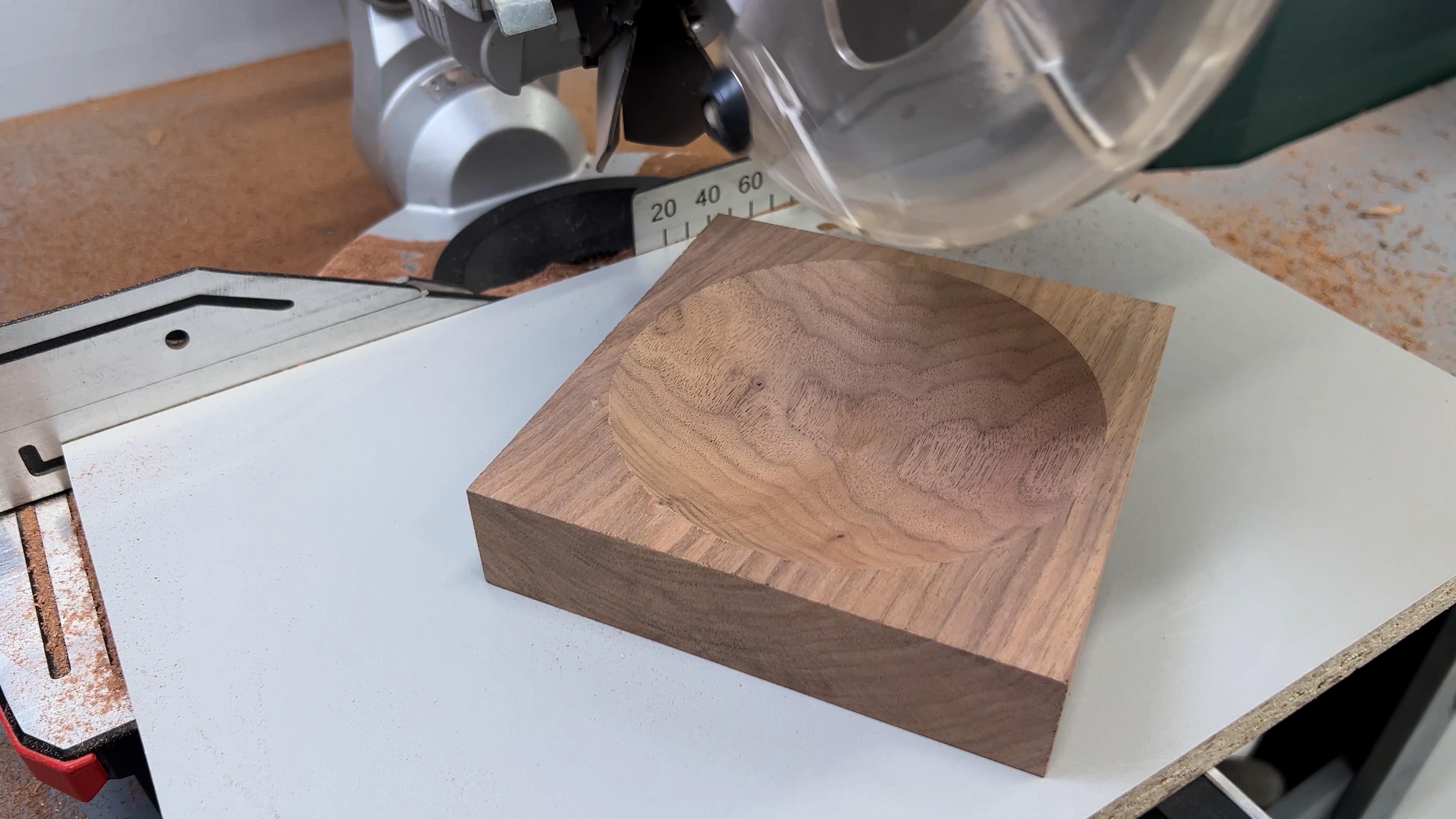
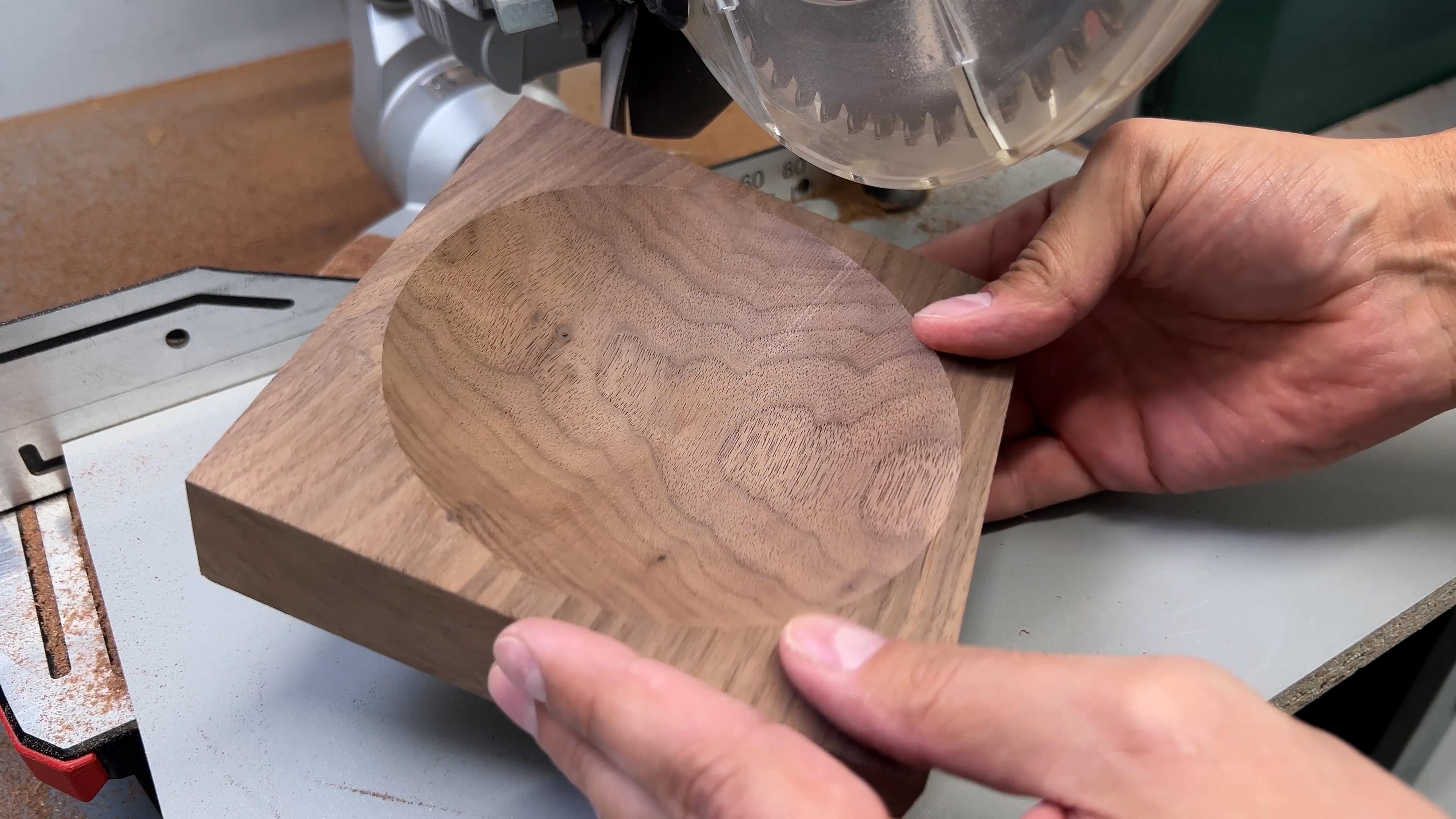
This one came out really nice. I have to admit it looks quite interesting to see round and square shapes in one place! But what about some different shapes?
A Bit Different Shape
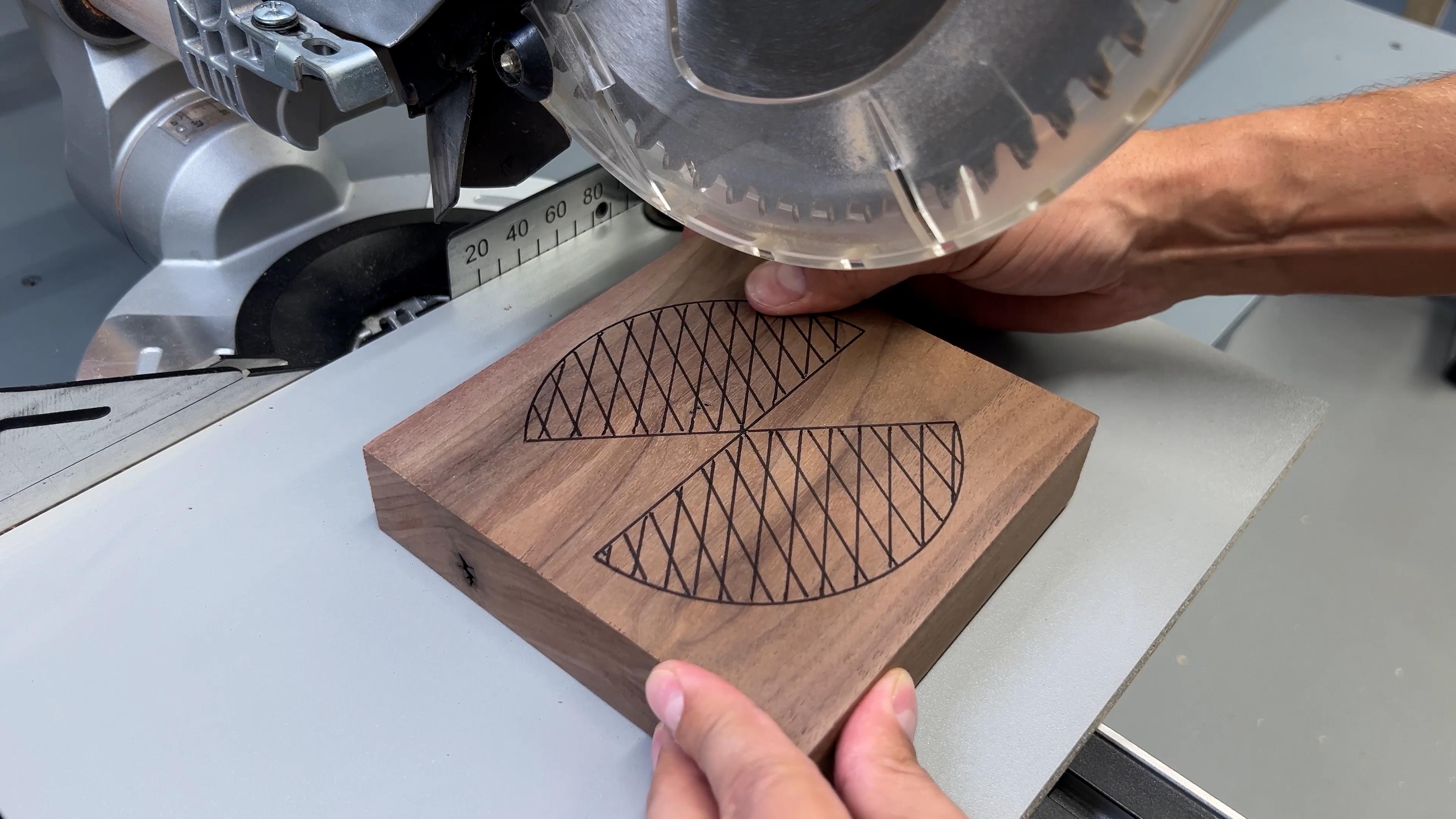
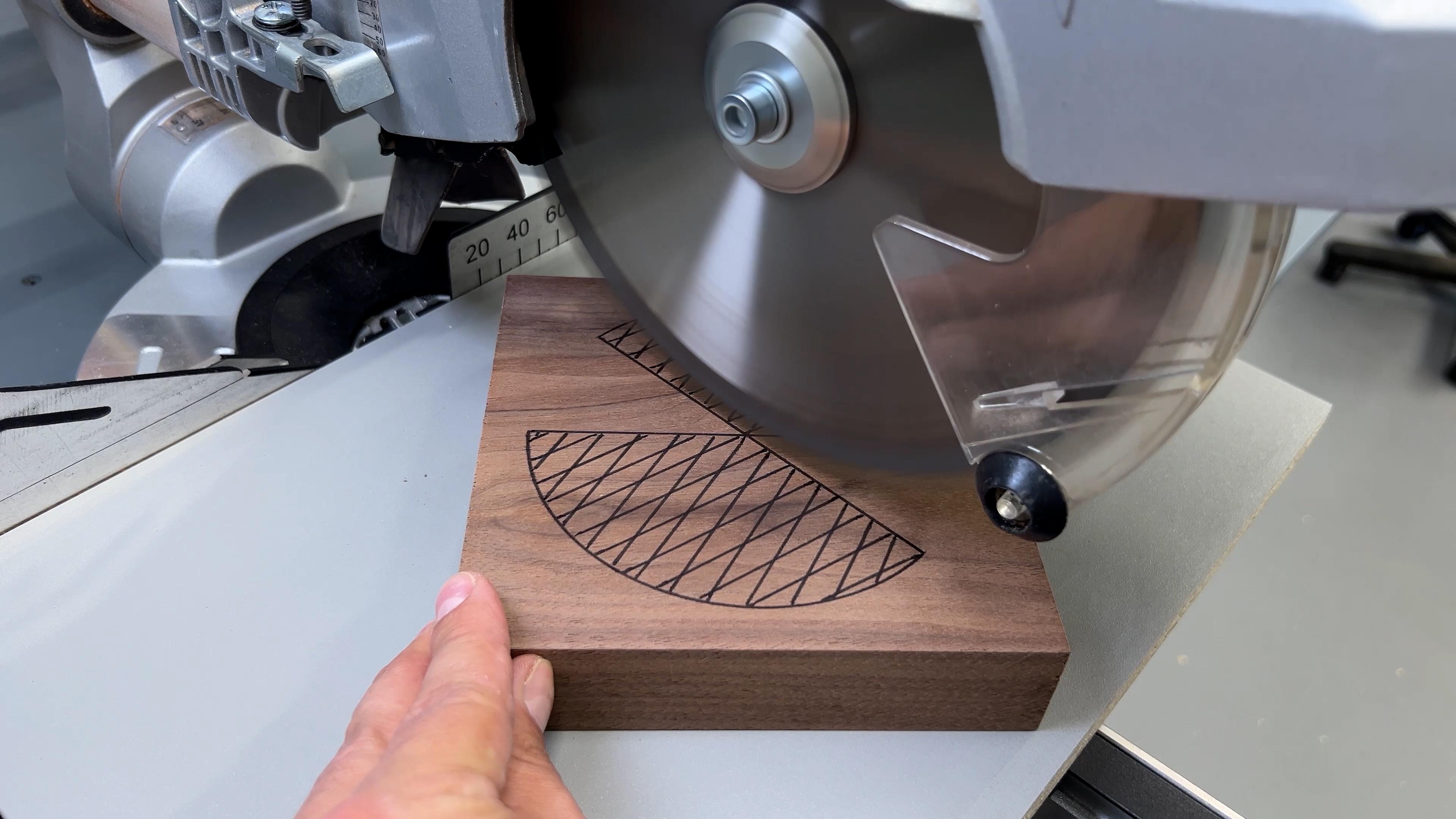
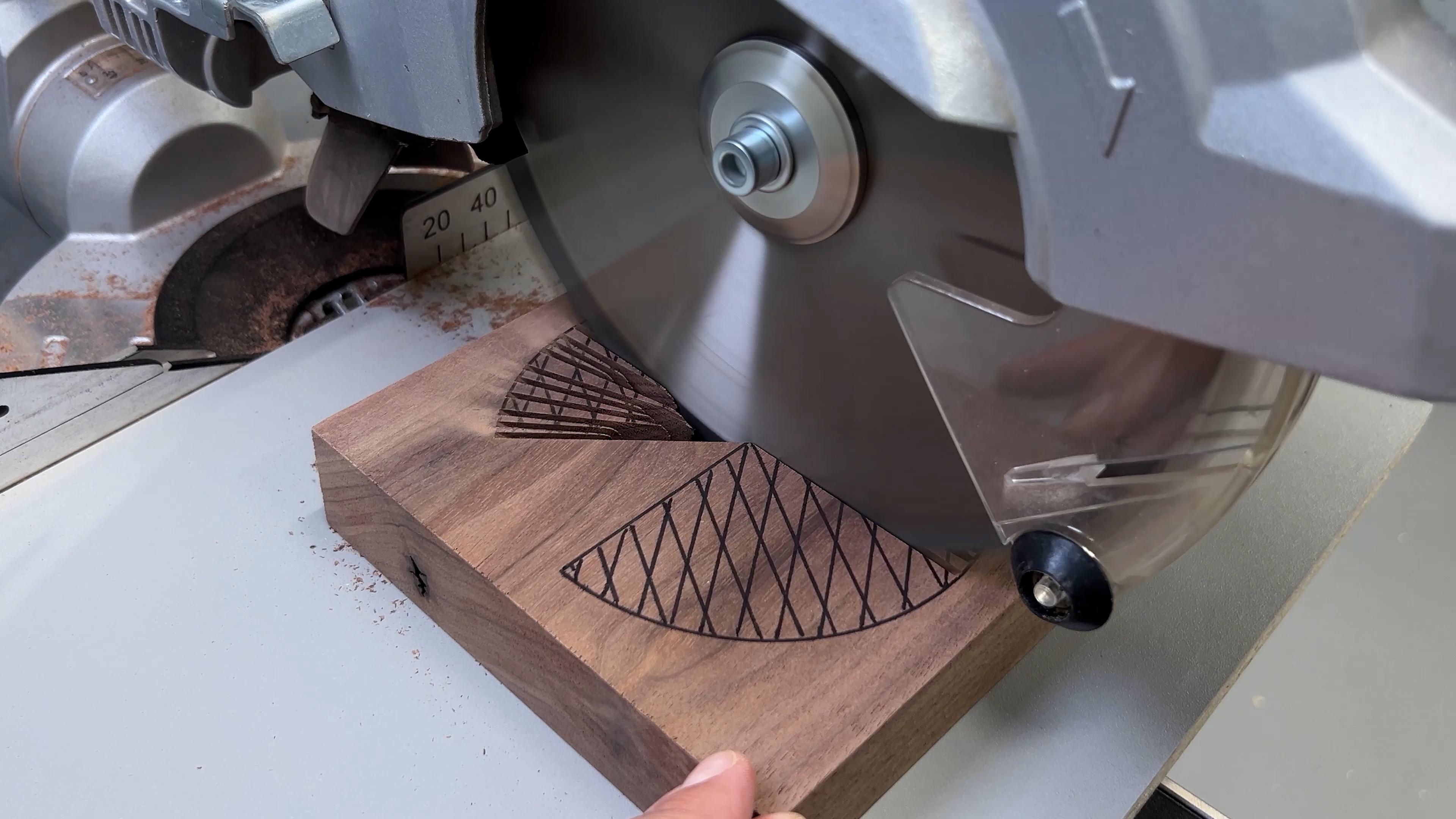
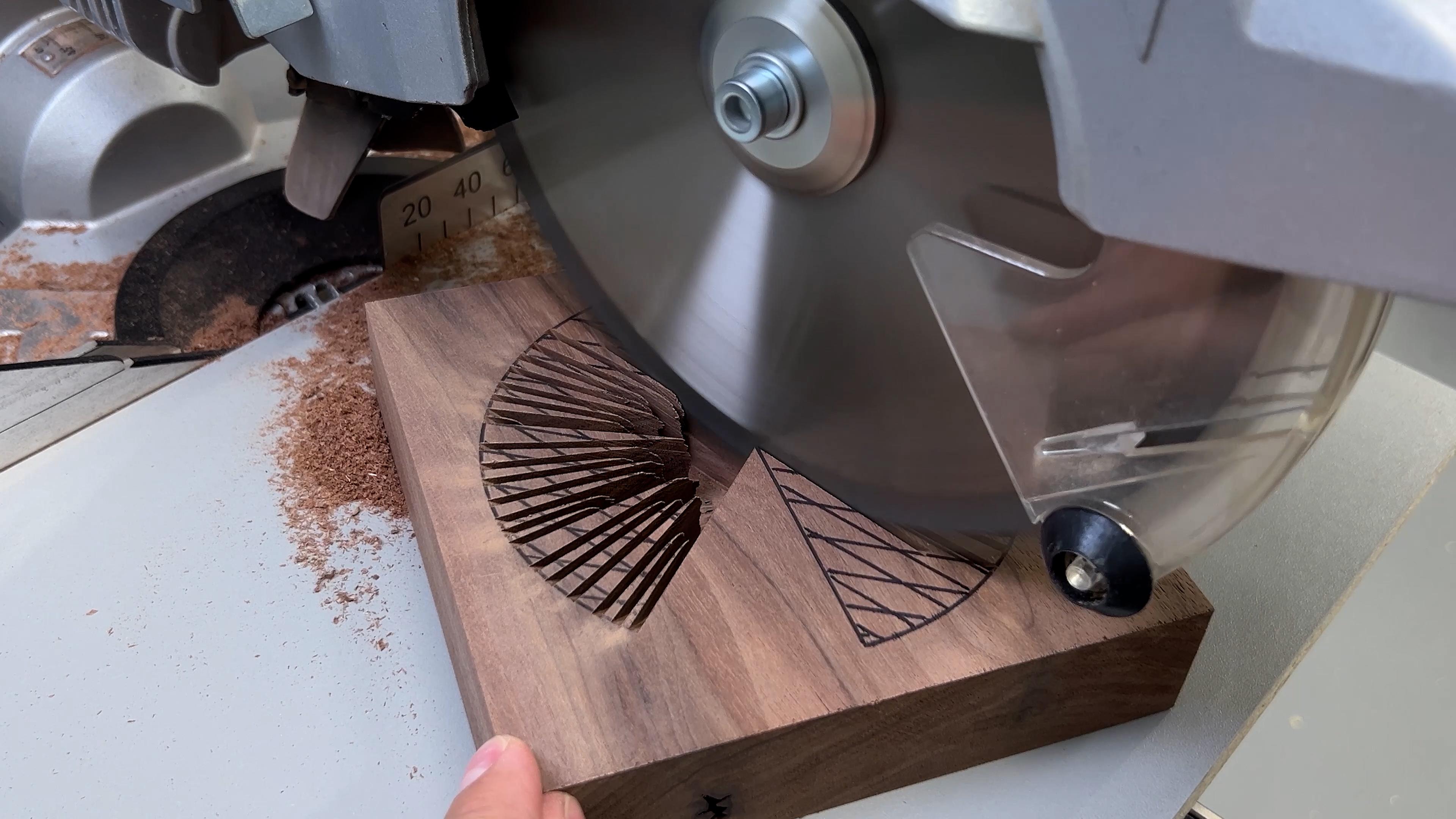
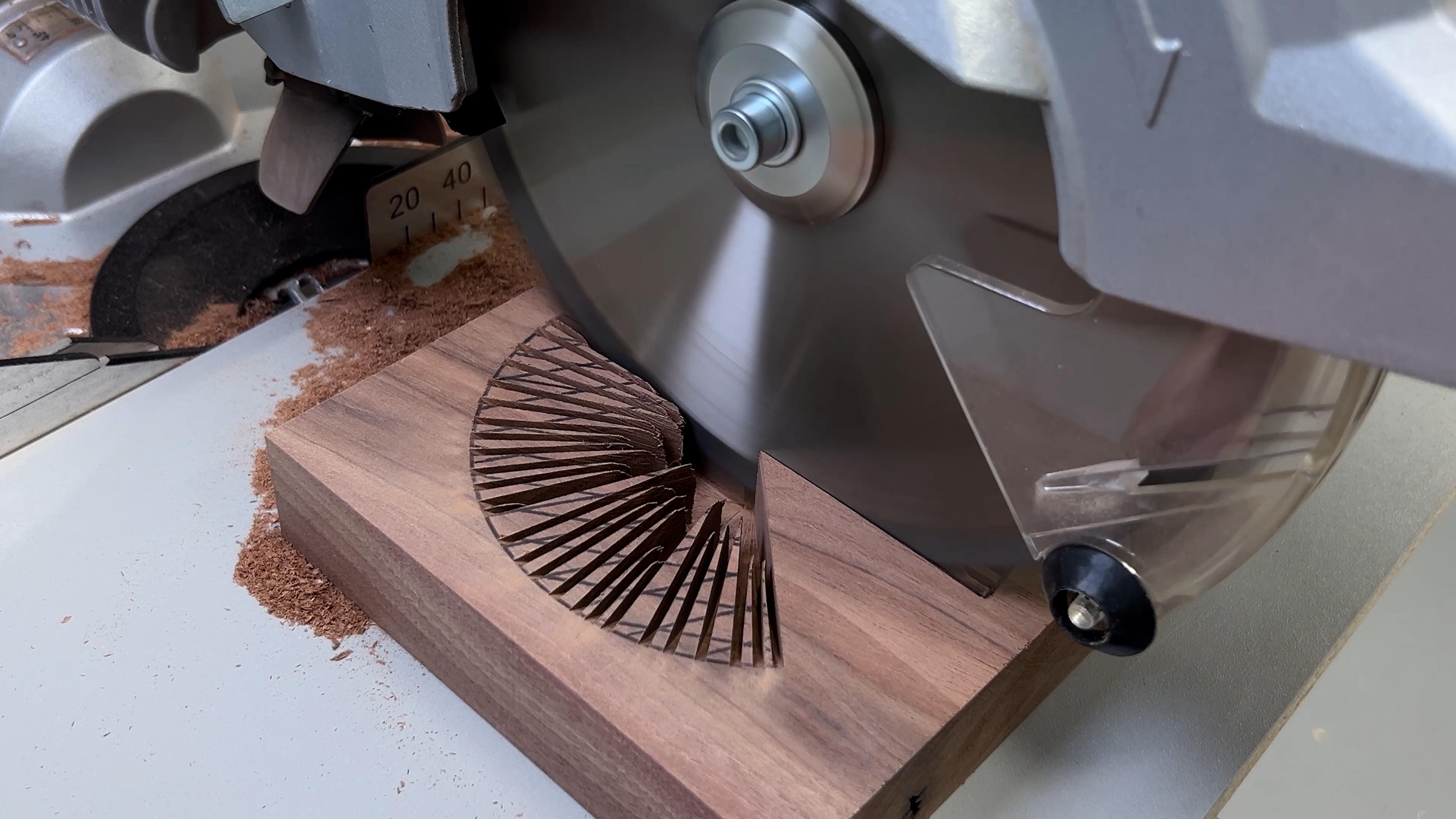

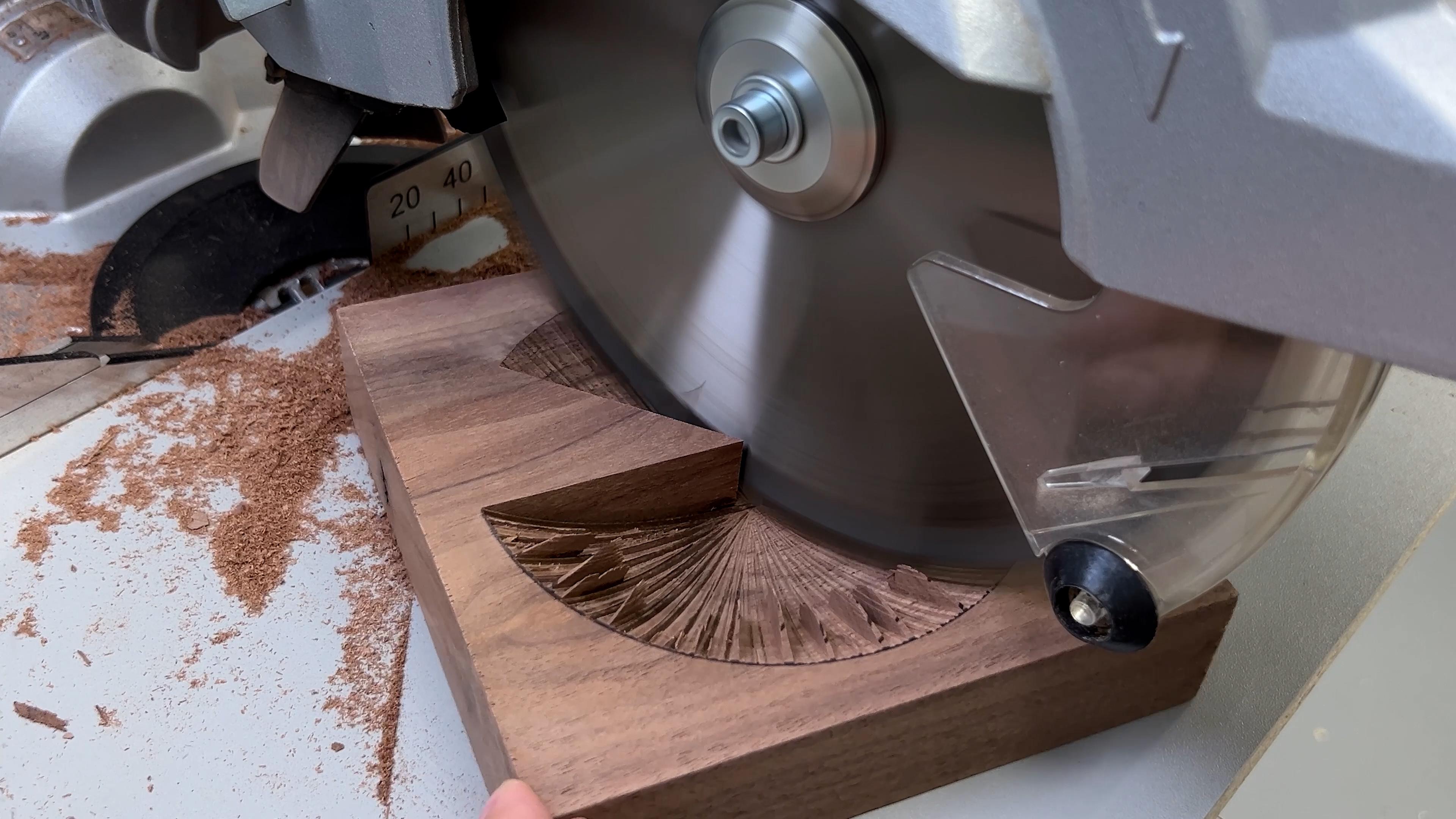
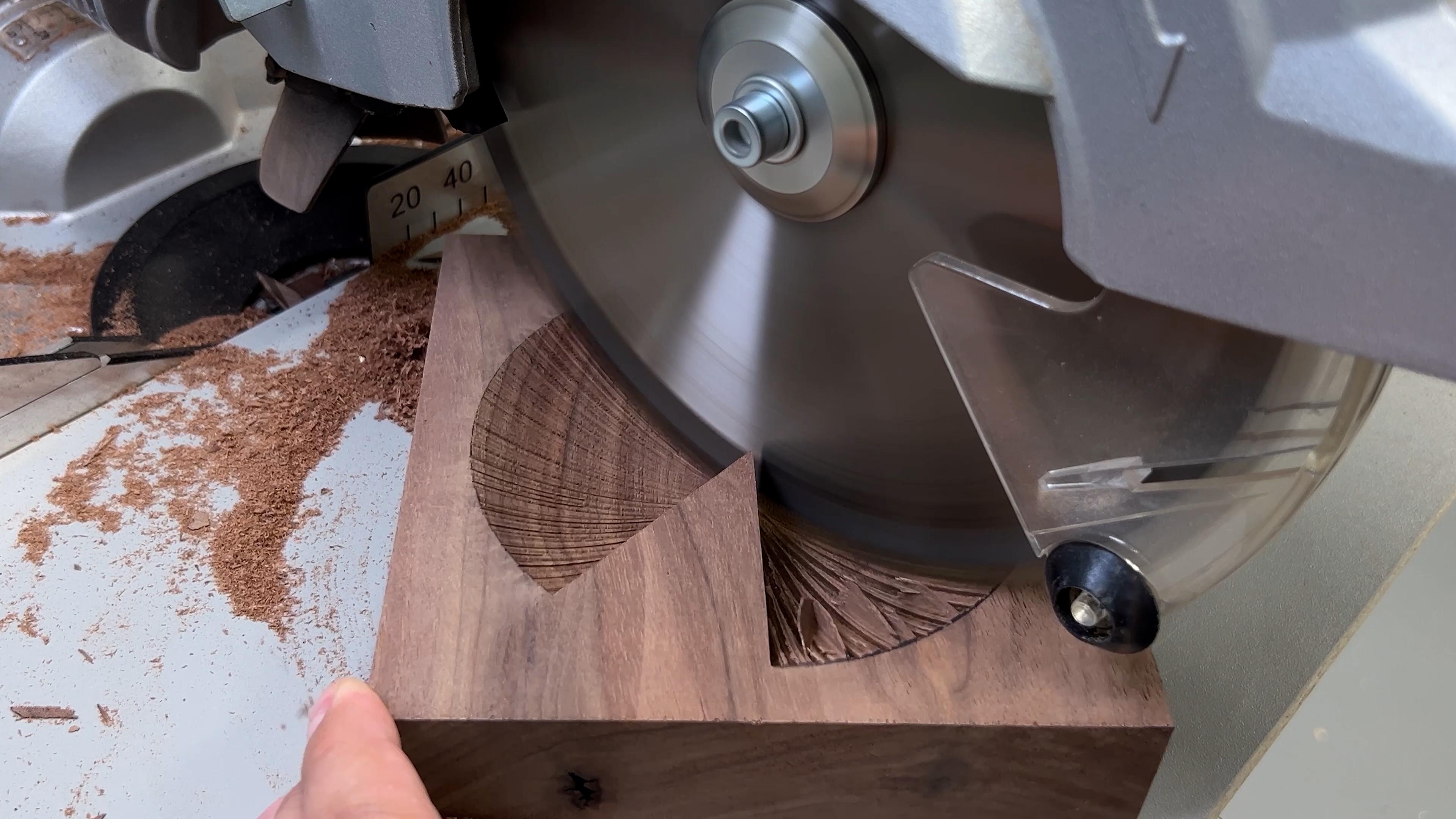
Let's repeat all cutting actions and follow this marked pattern. The idea here is not to go all the way around with the cuts, but to keep small wood portions untouched. Those 22.5-degree spikes will act as some sort of dividers and will split the bowl plate into two segments. And the miter saw is the only tool that could be able to make such a shape, where all woodturning lathes will be useless.
A Pair of Deepening Passes
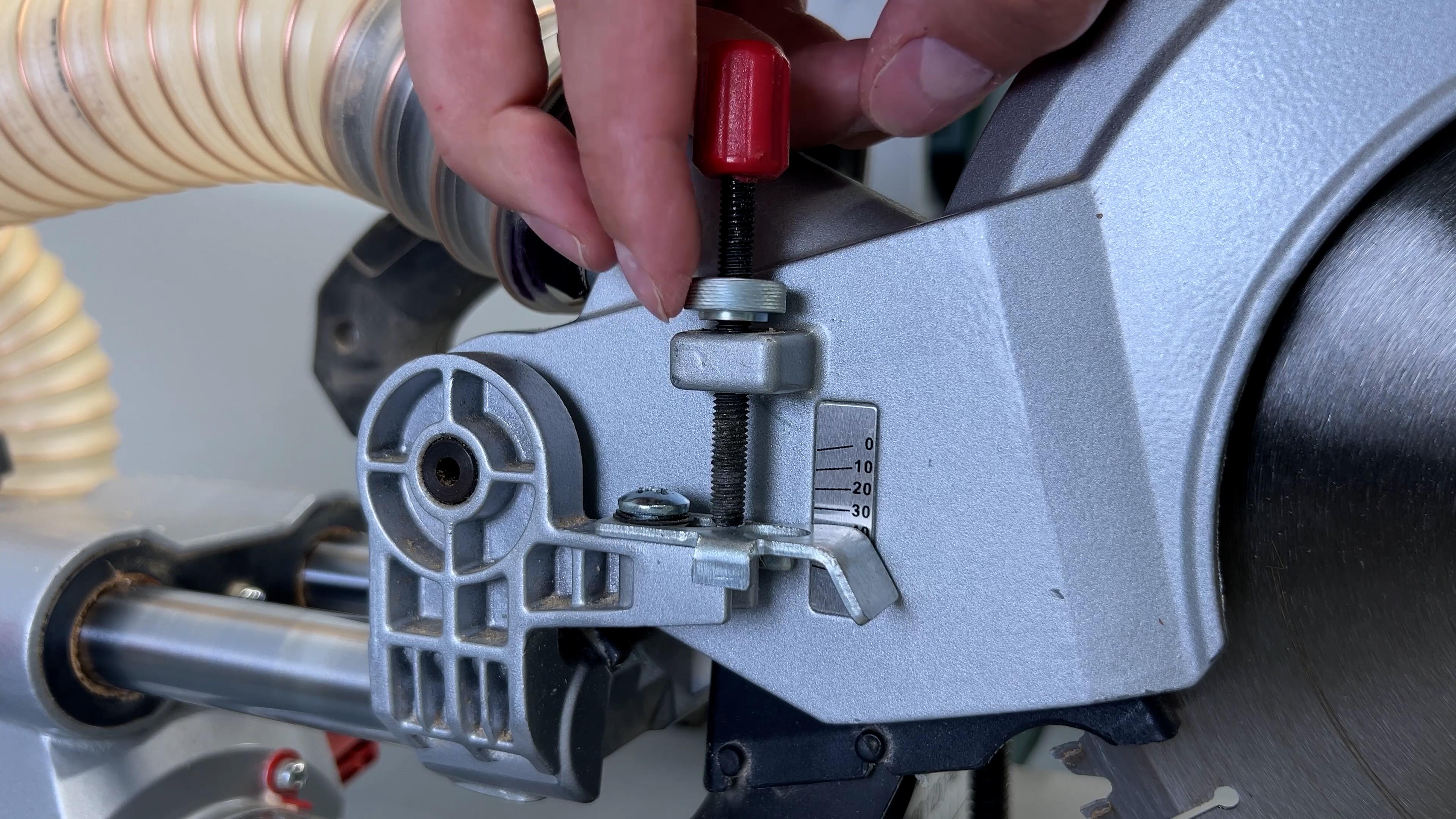
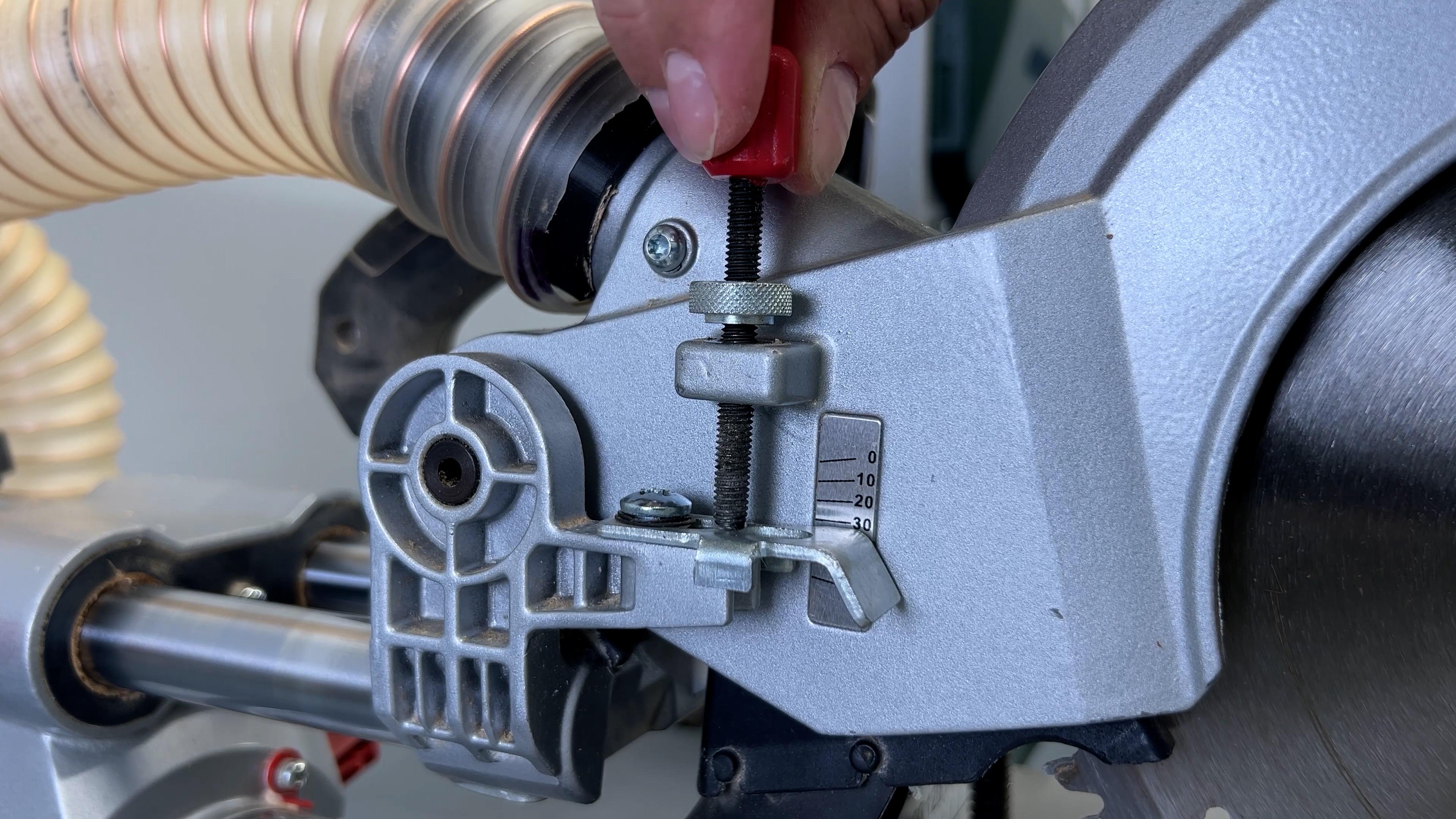
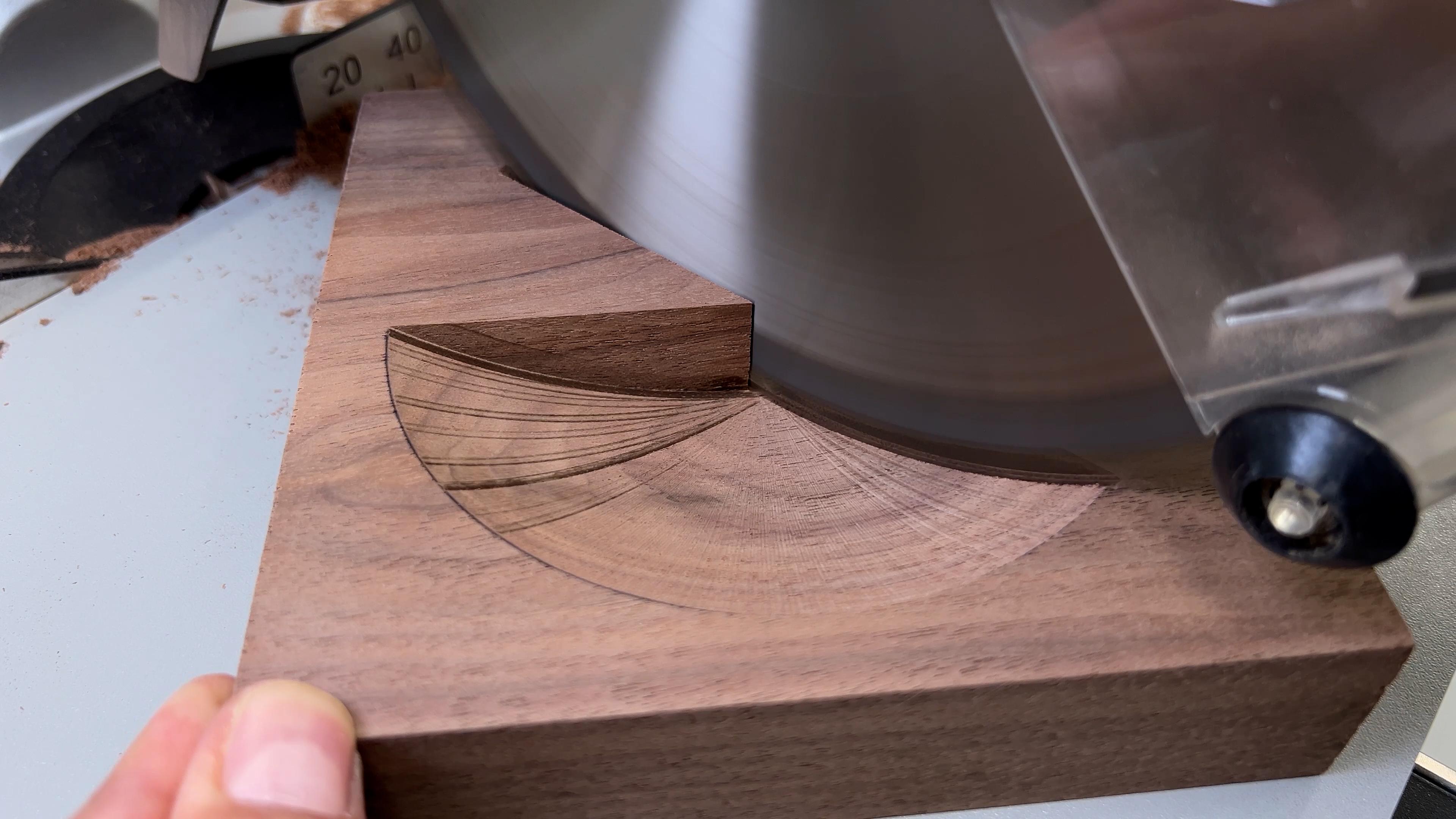
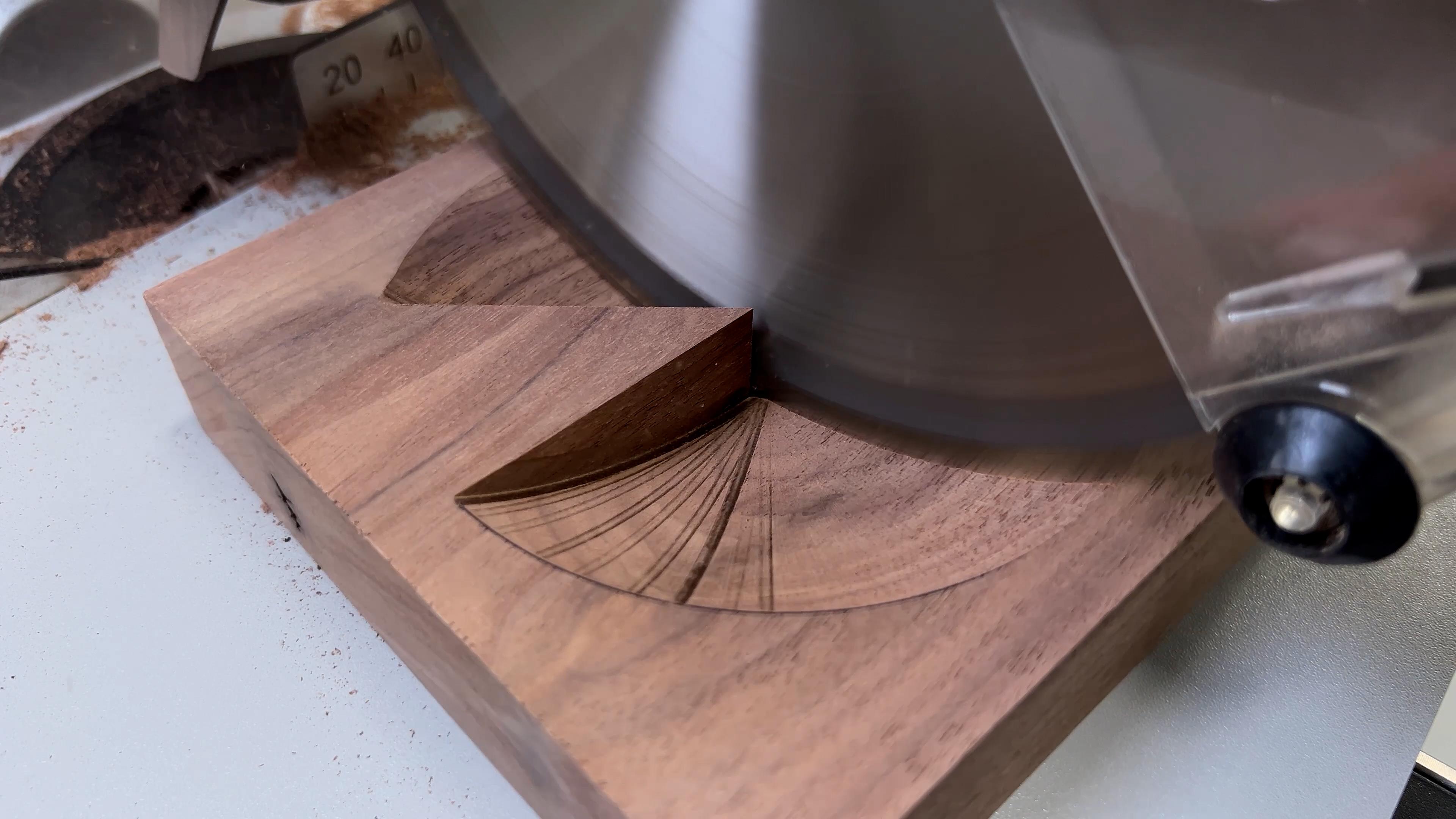
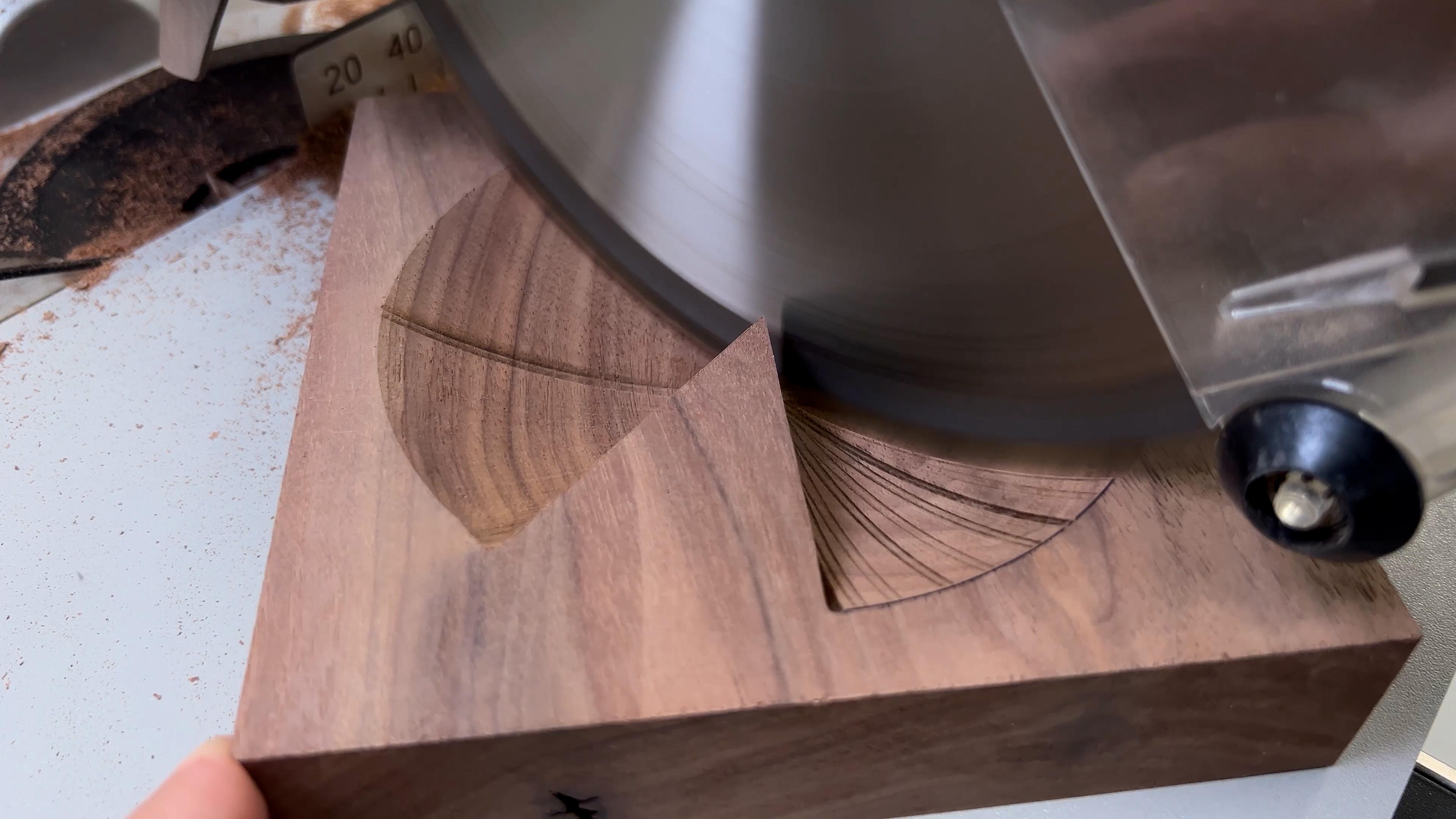
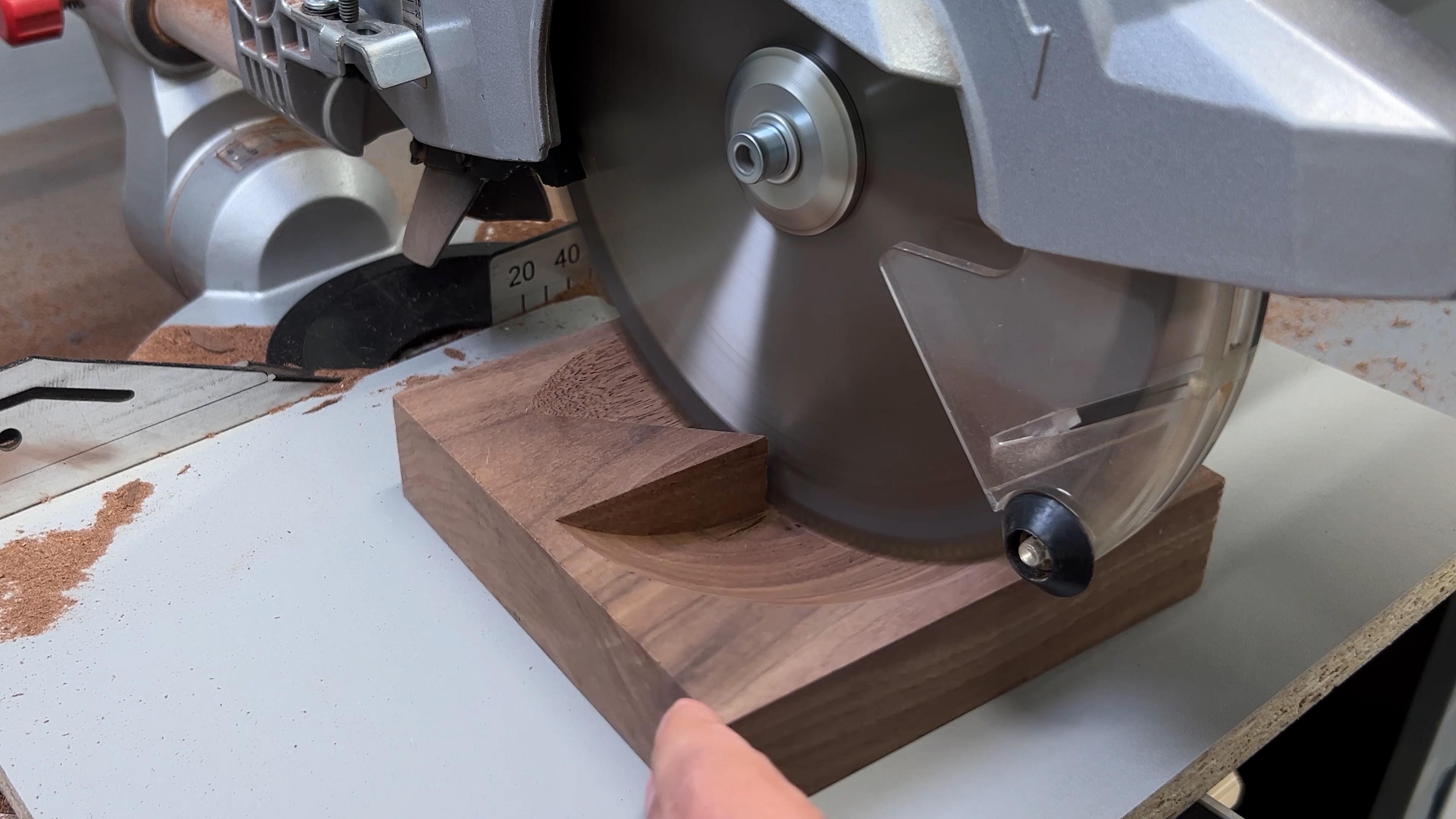
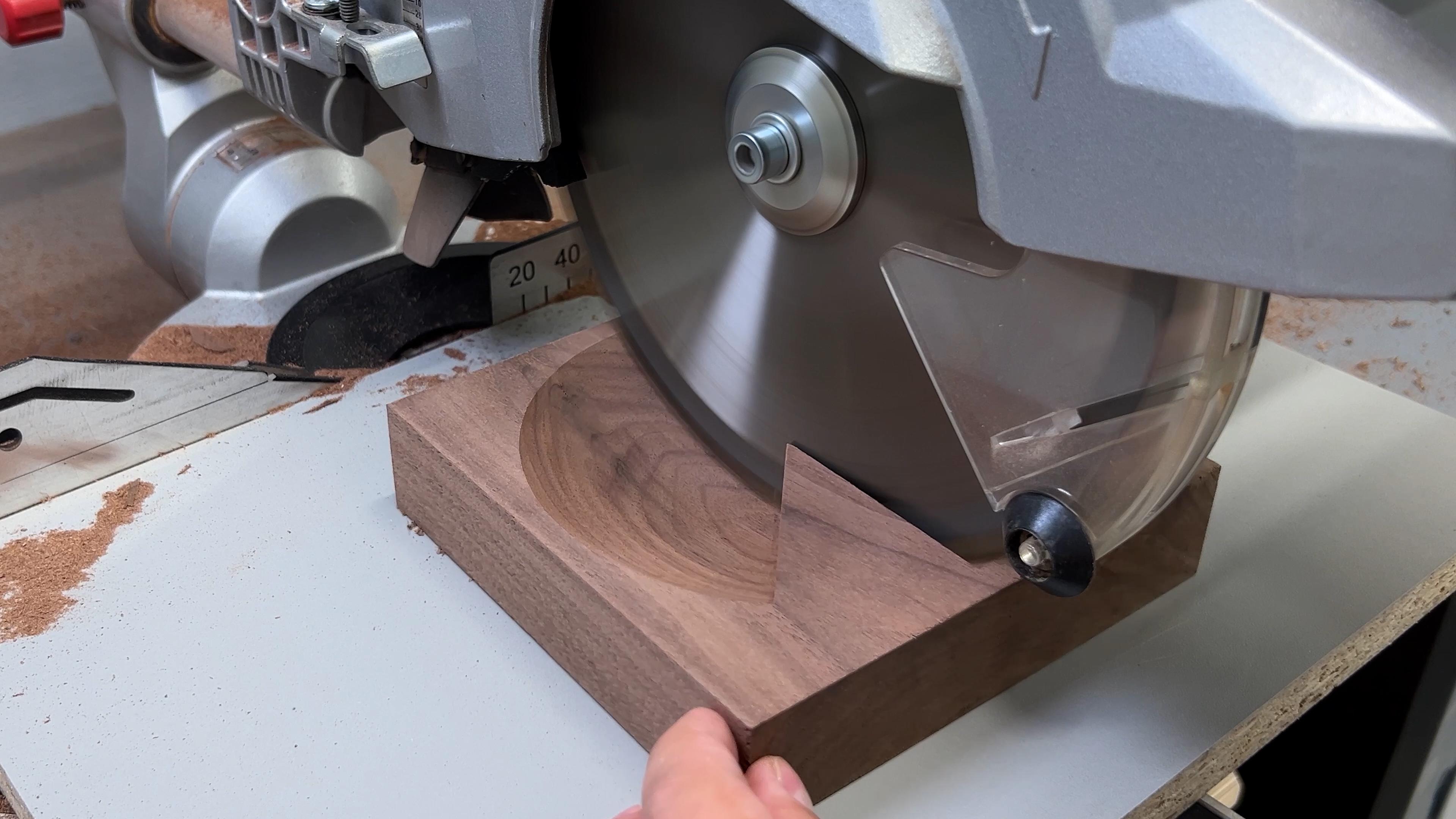
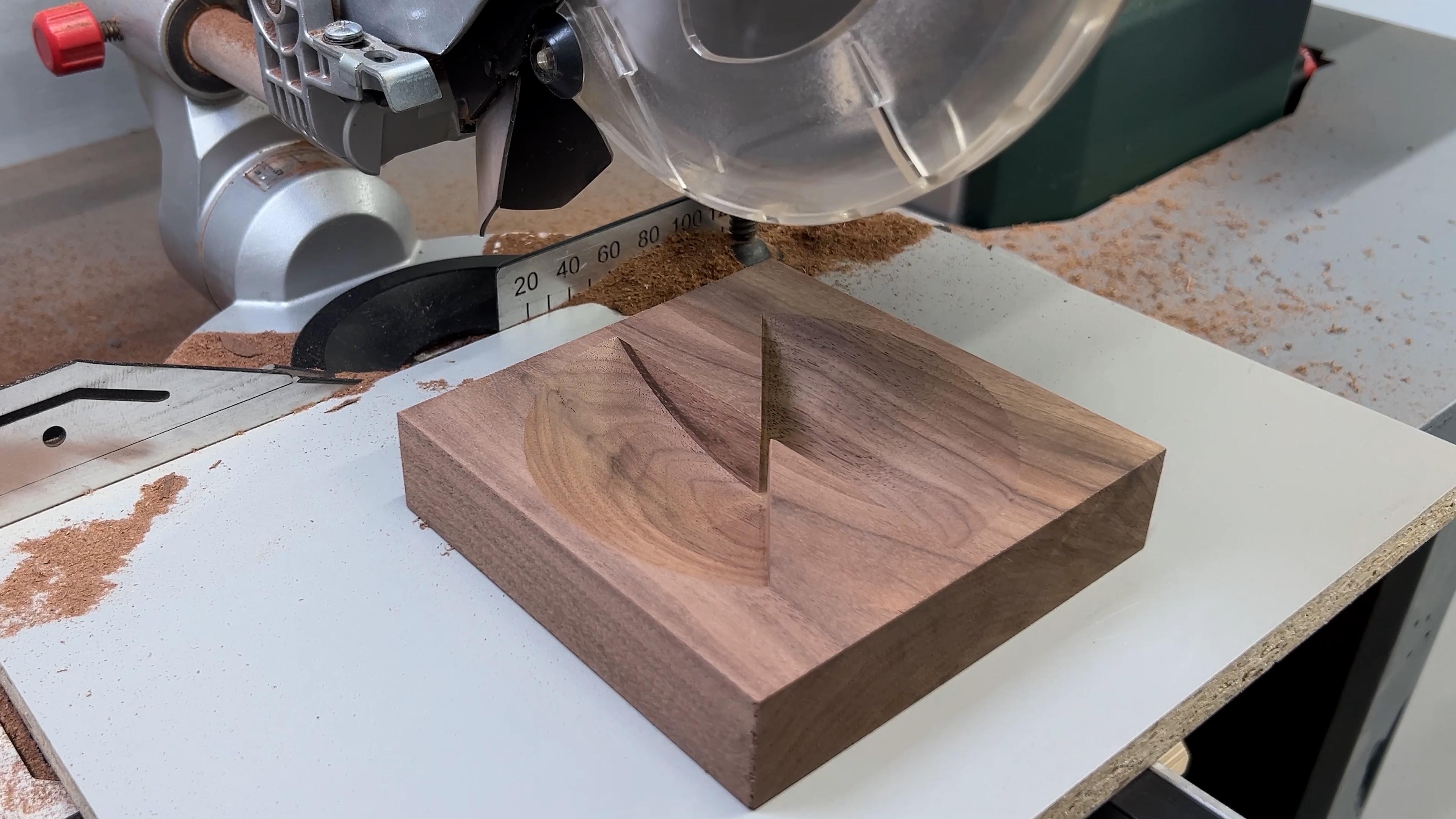
Within two iterations by lowering the blade, I was able to clean the surface to perfection.
So, is this method safe? Yes, if you know what you are doing and have enough experience with power tools.
The Result
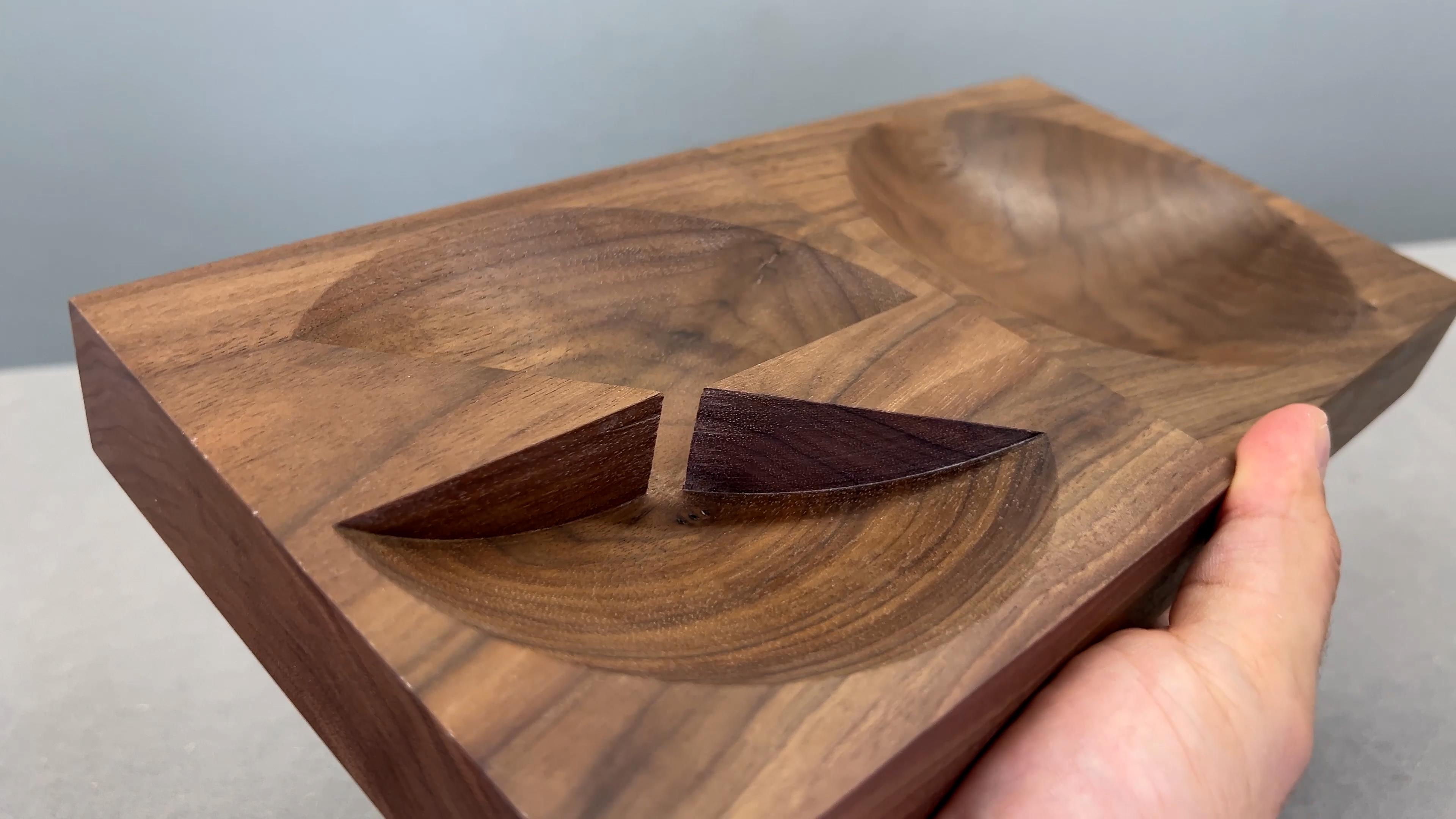
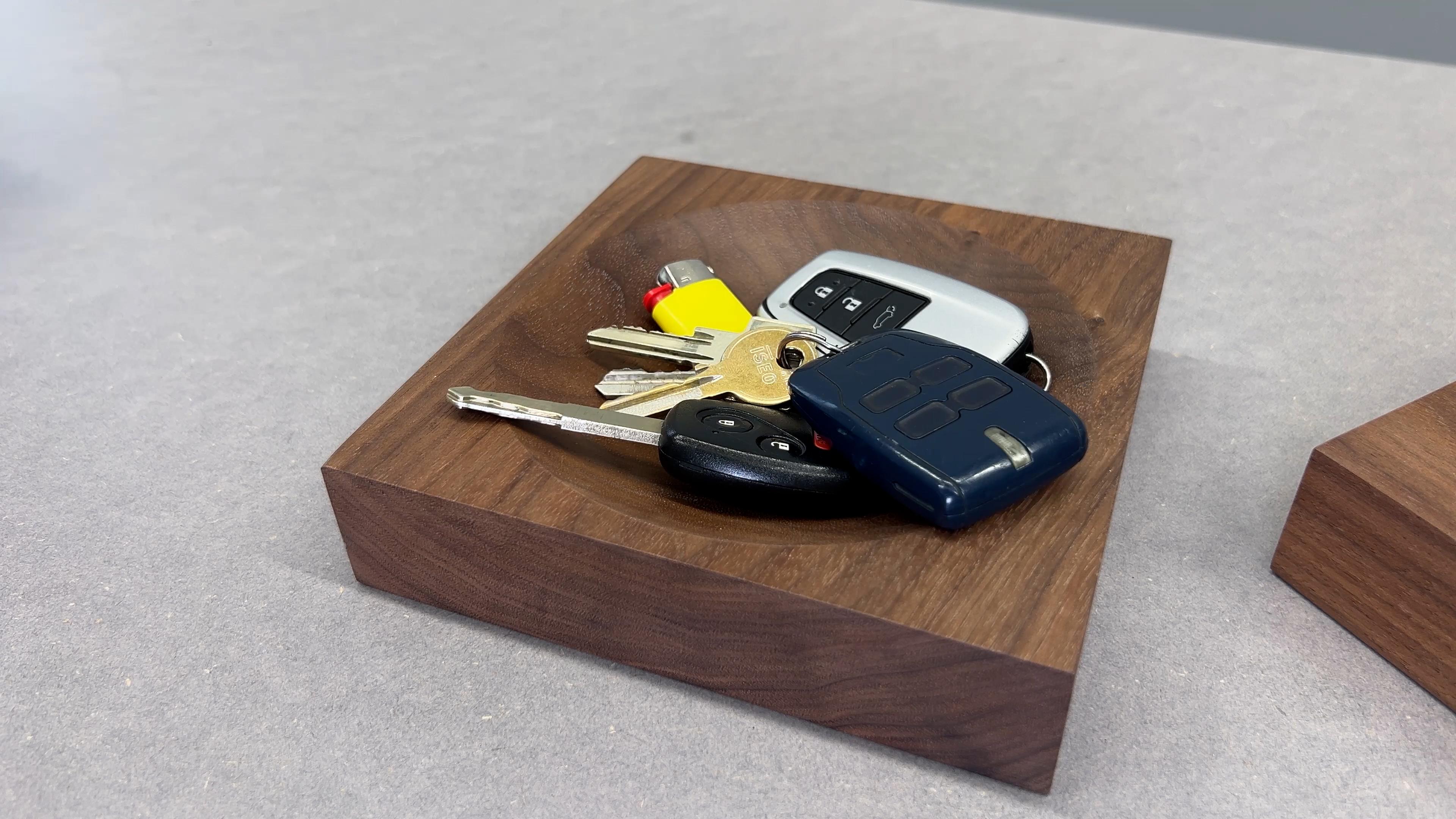
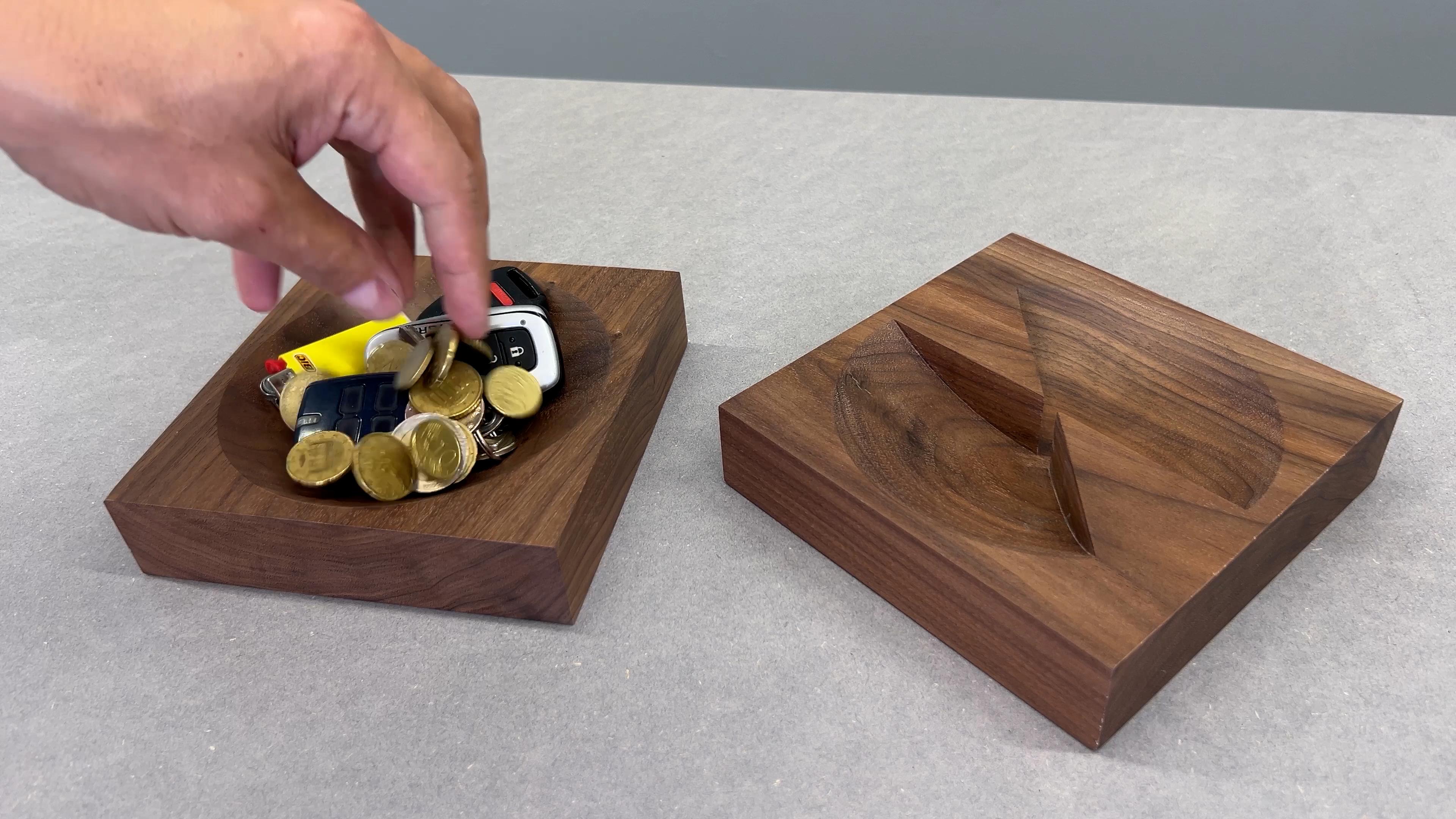
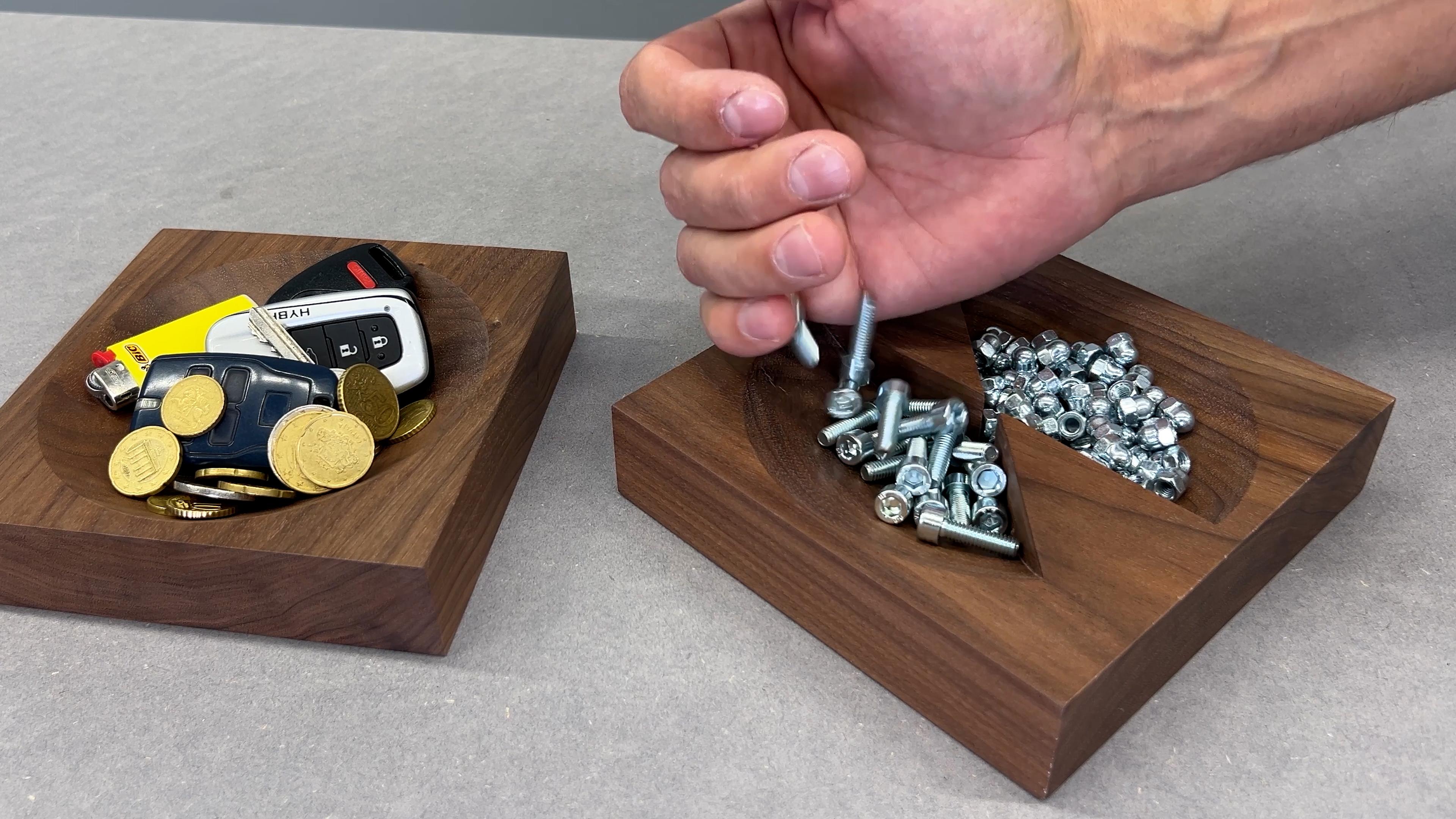
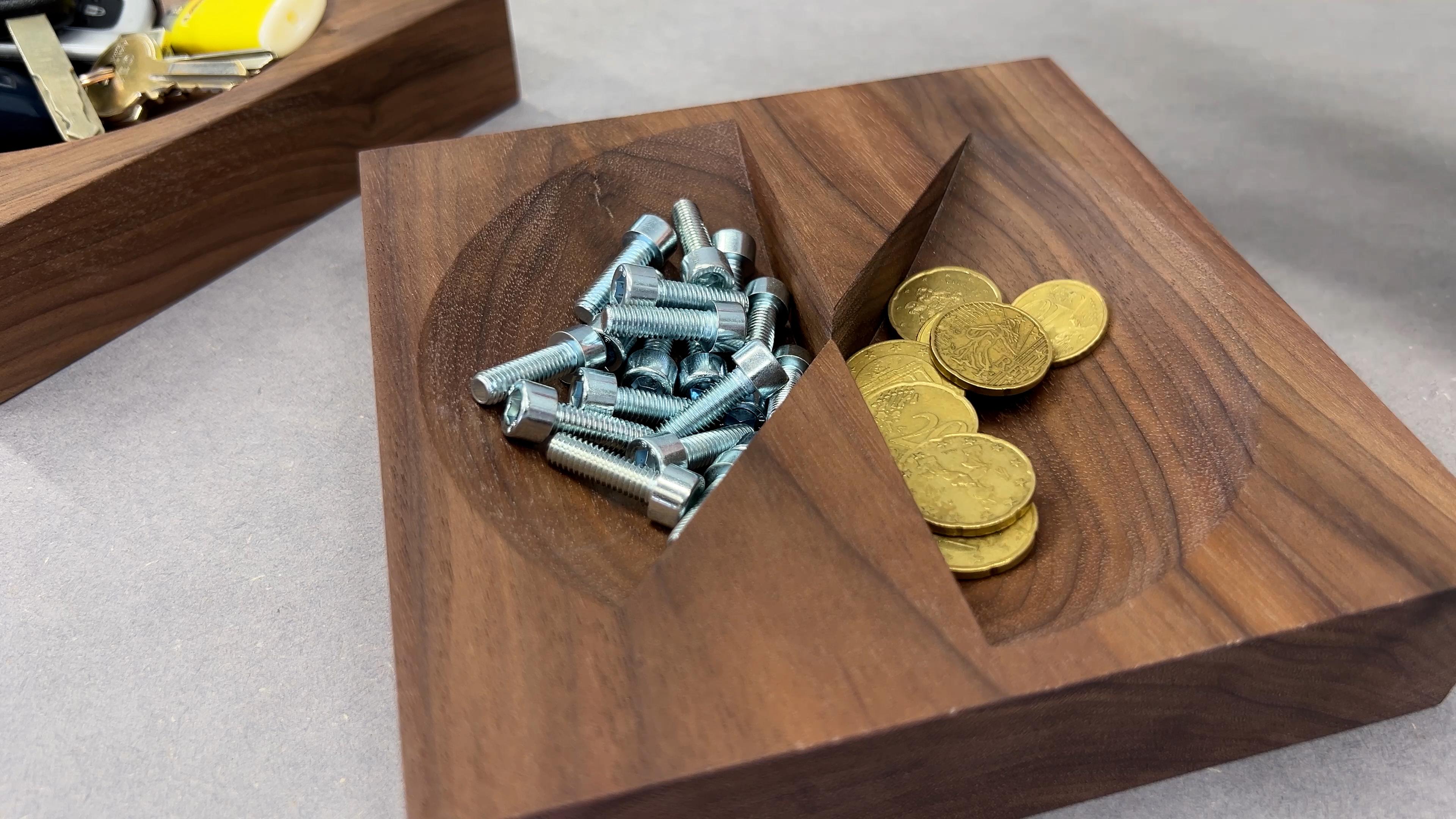
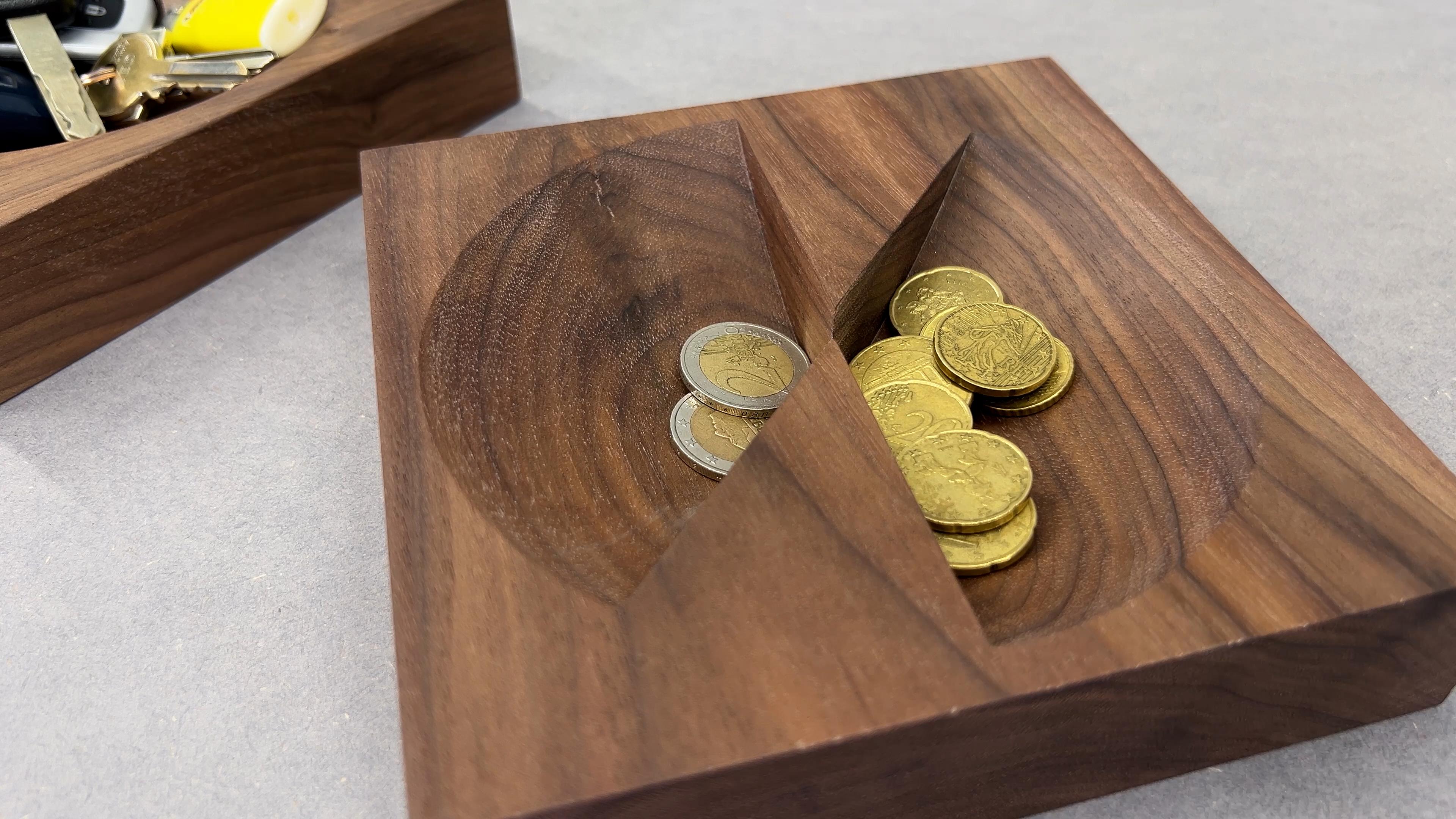
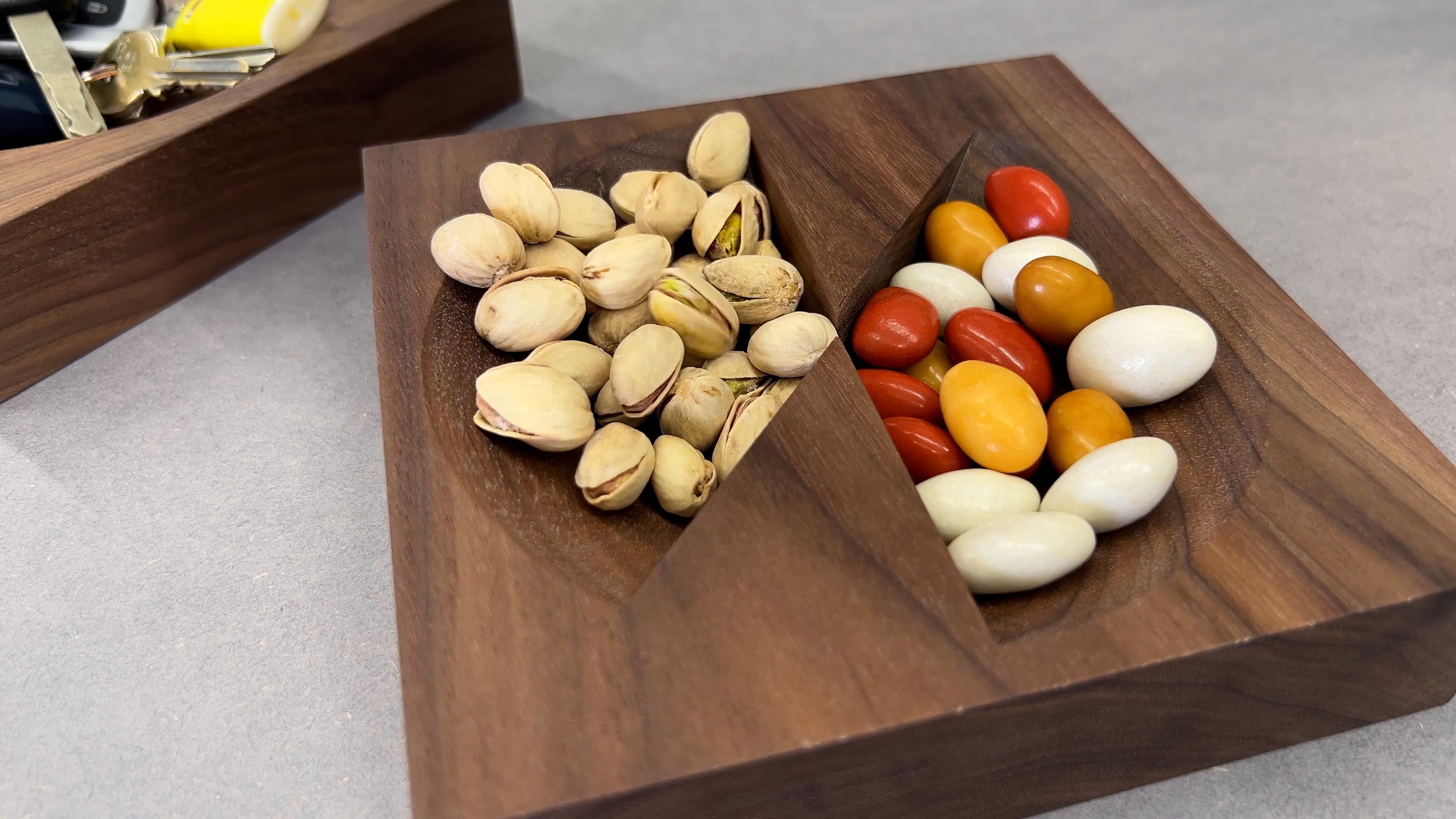
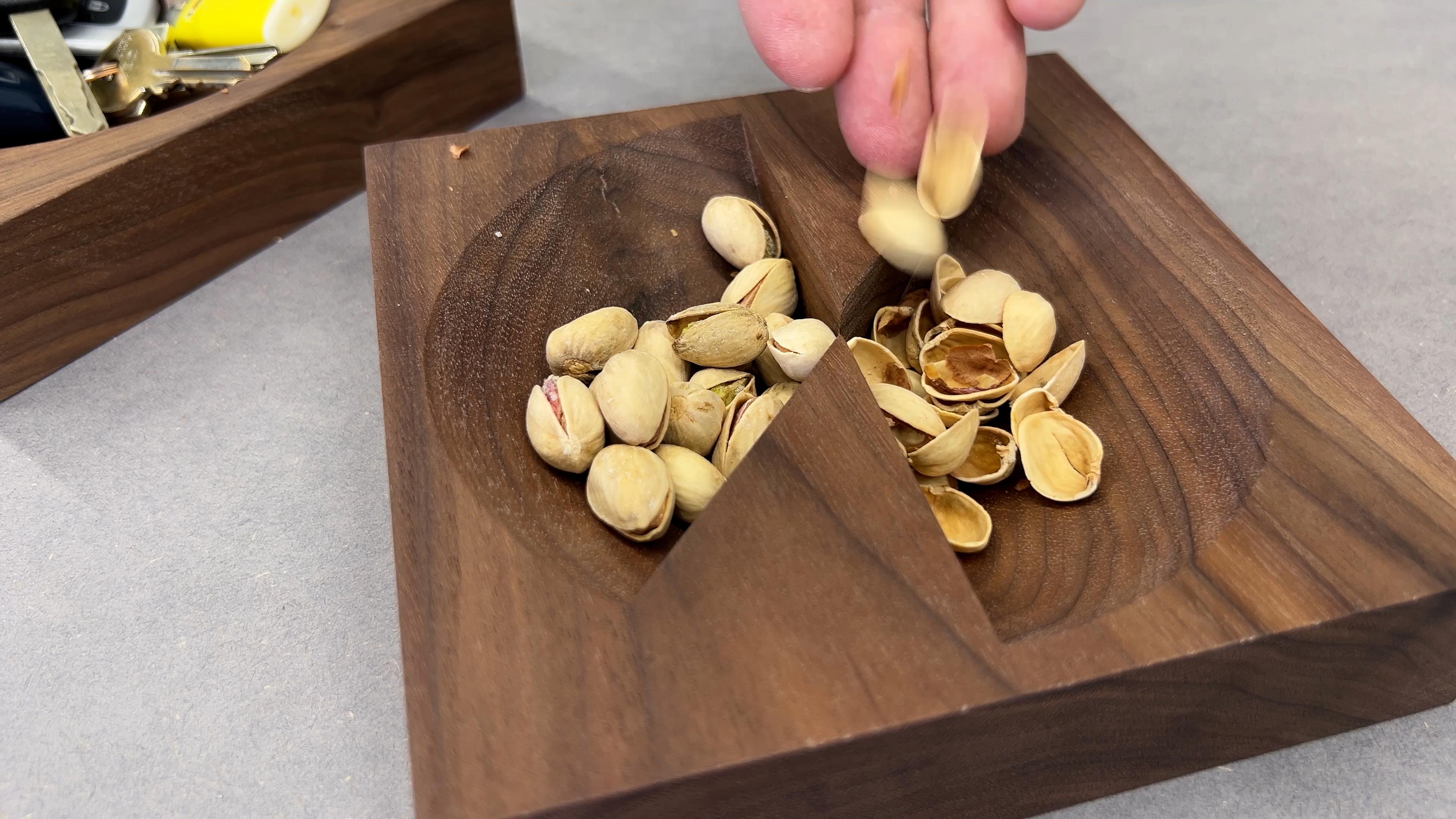
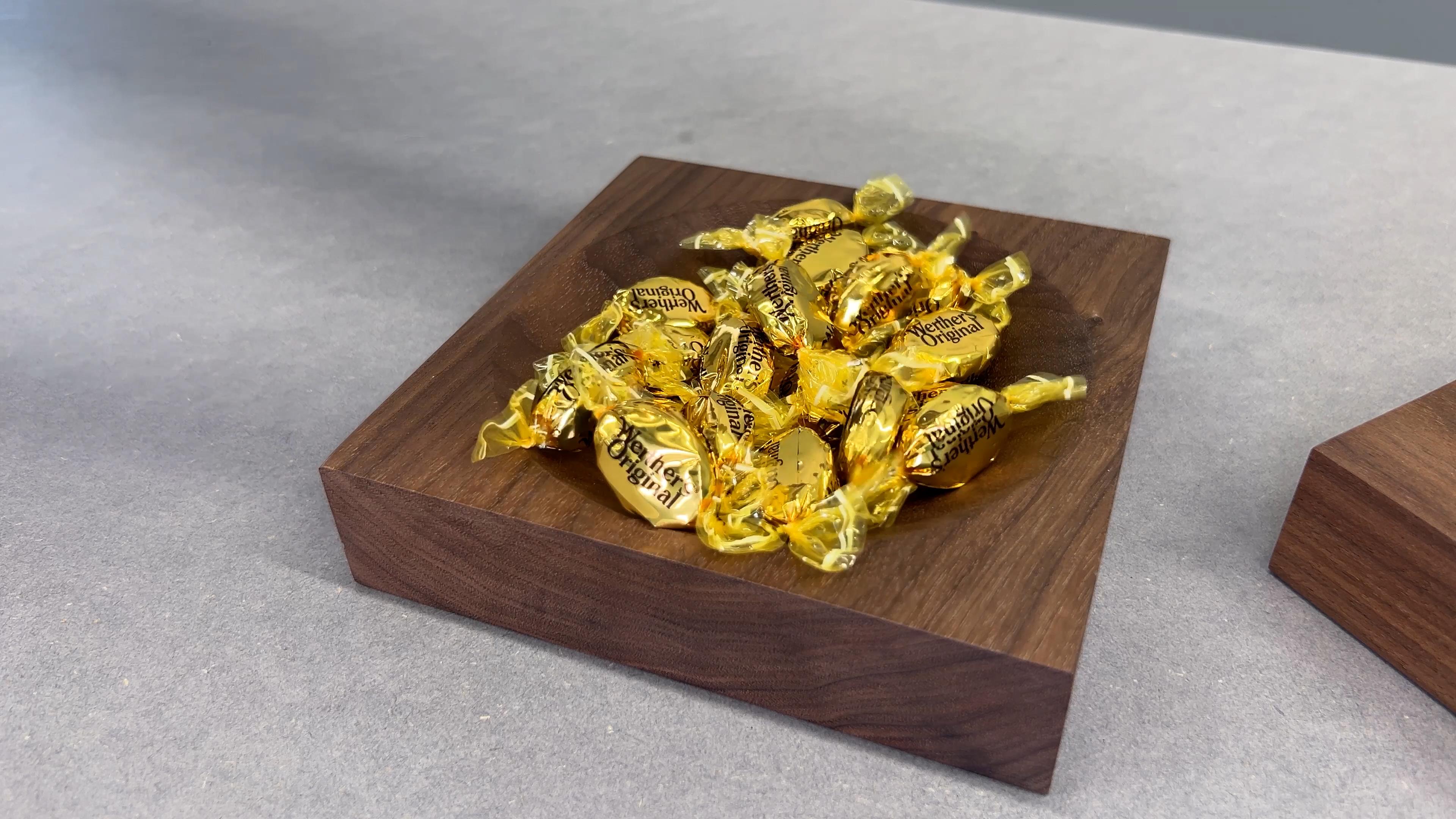
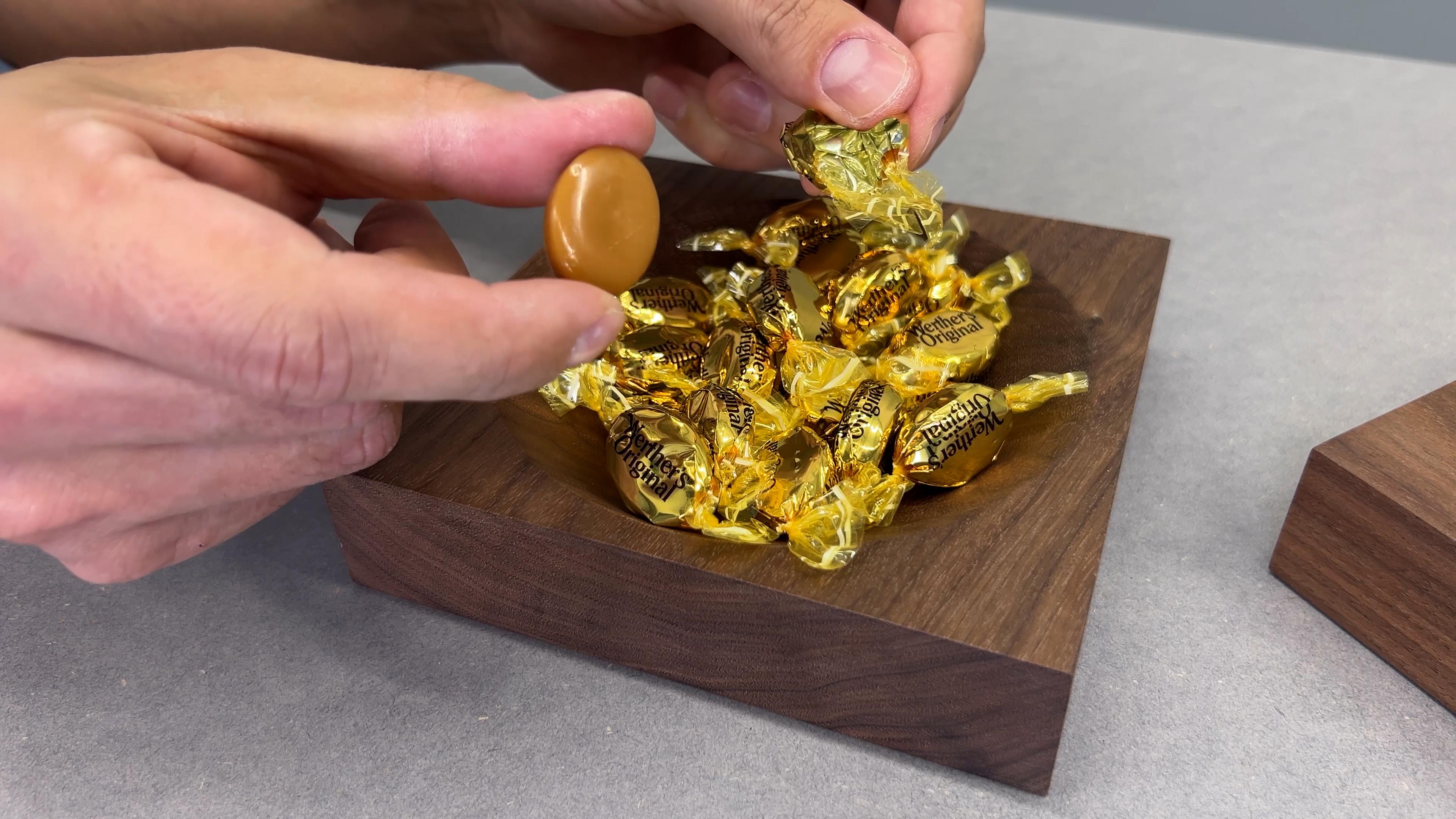
Light sanding with 120 grit sandpaper and applied the hardwax oil to protect the wood.
What about the use case of those pieces? Well, this is a great serving and storage place for small bits and bobs. Starting from car or apartment keys and finishing with coins. In case your imagination is really limited, then you could store some nuts and bolts! Okay, that was a joke! More sense will be small change separating from higher value coins. Or if a food-safe wood finish was used, to store some sweets and snacks!